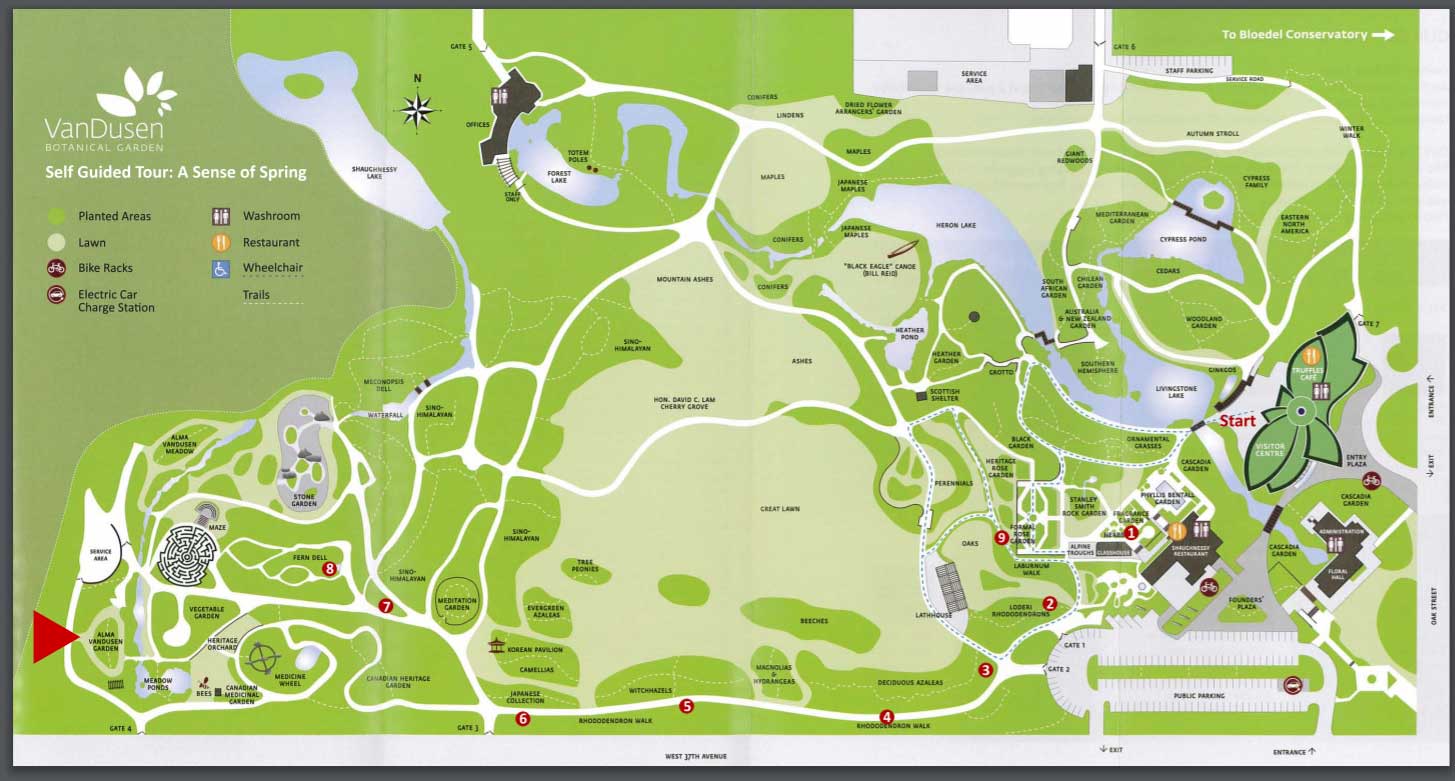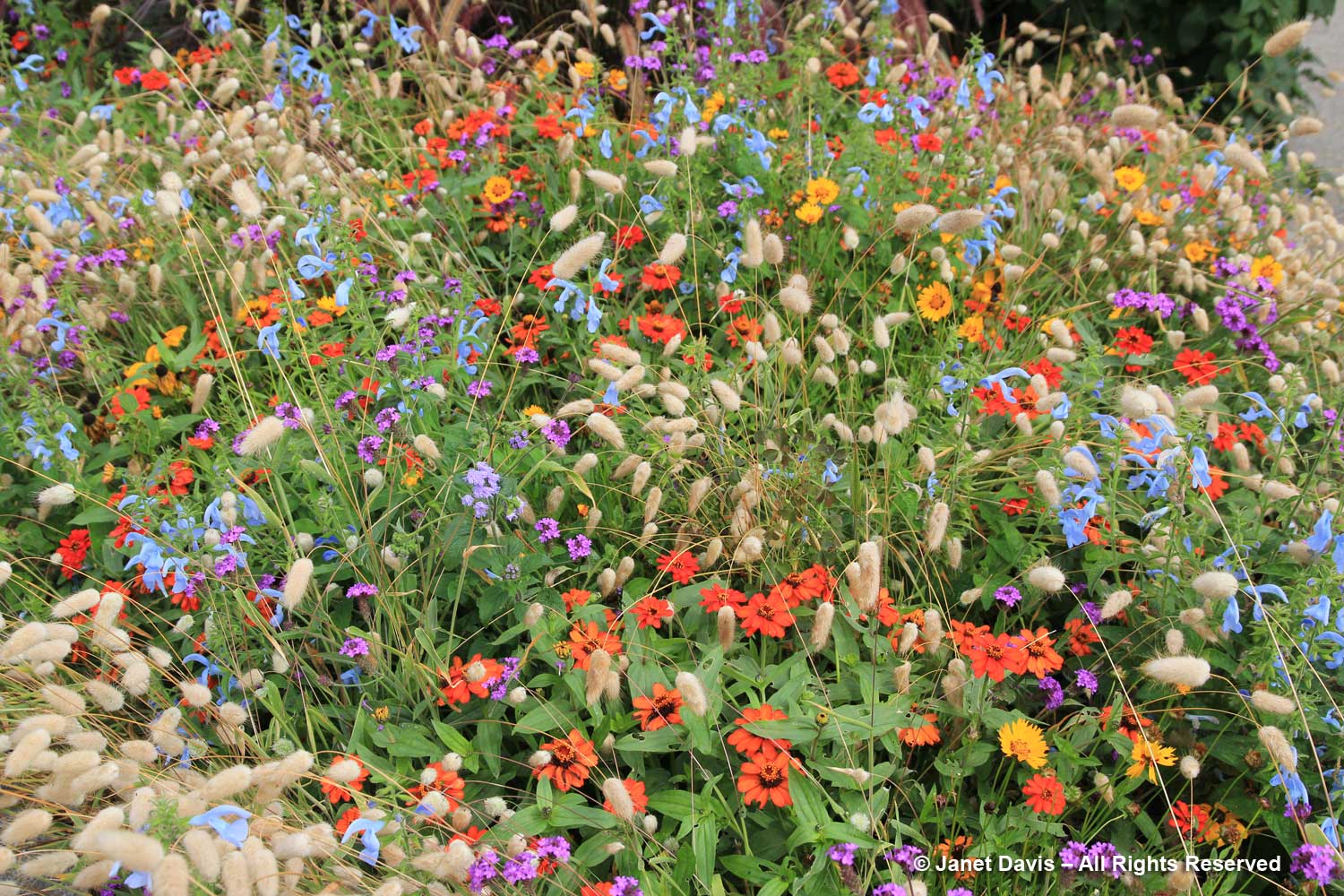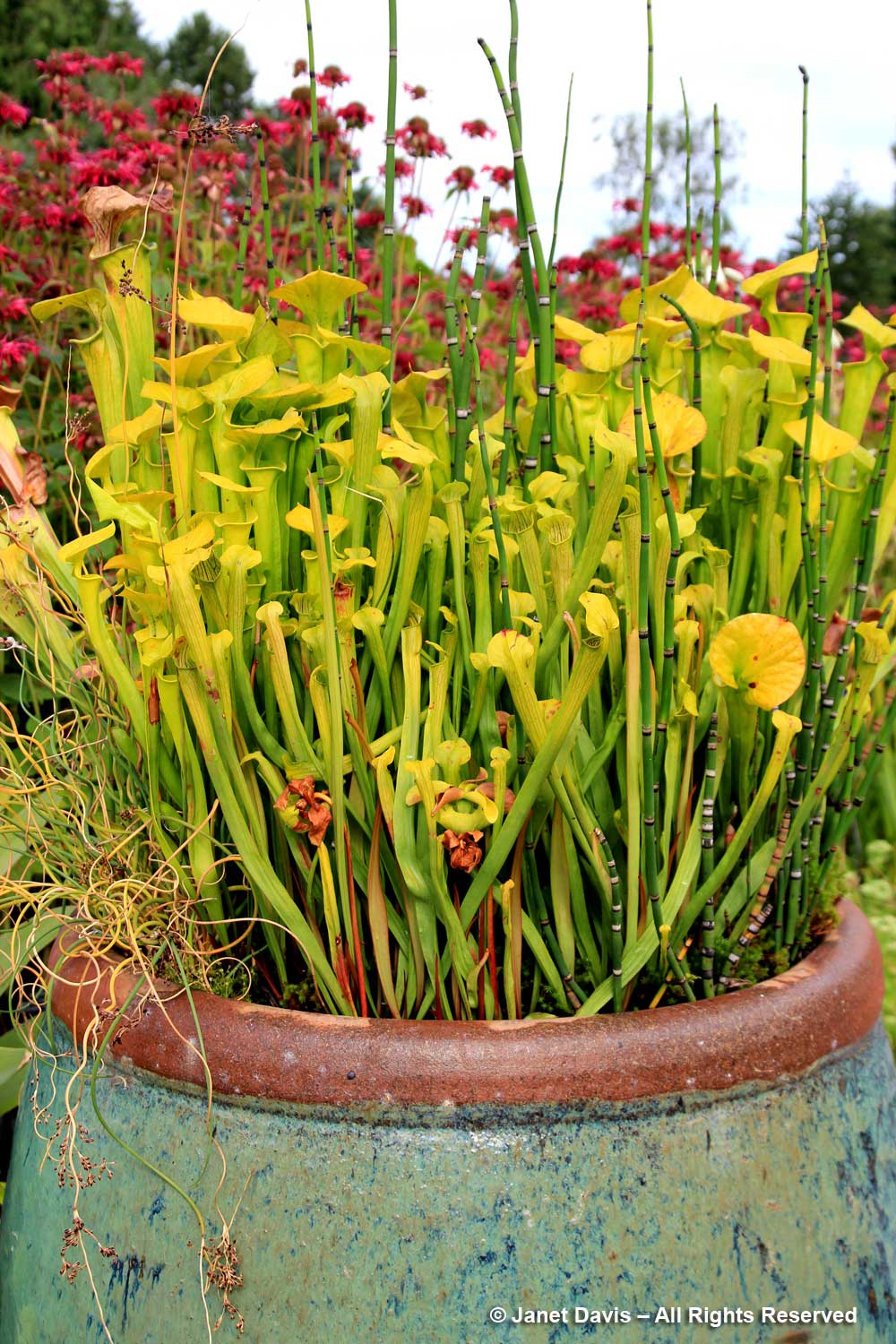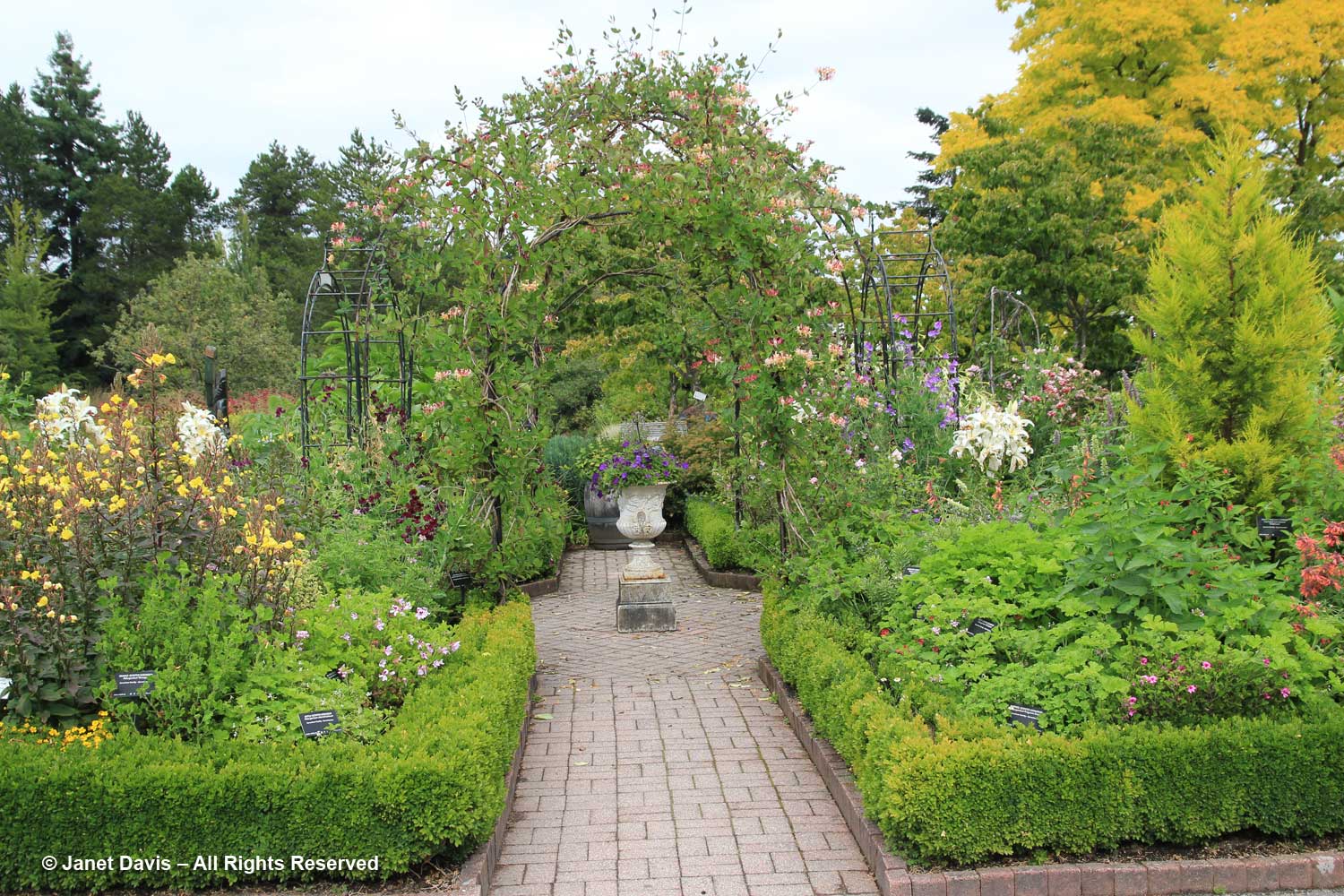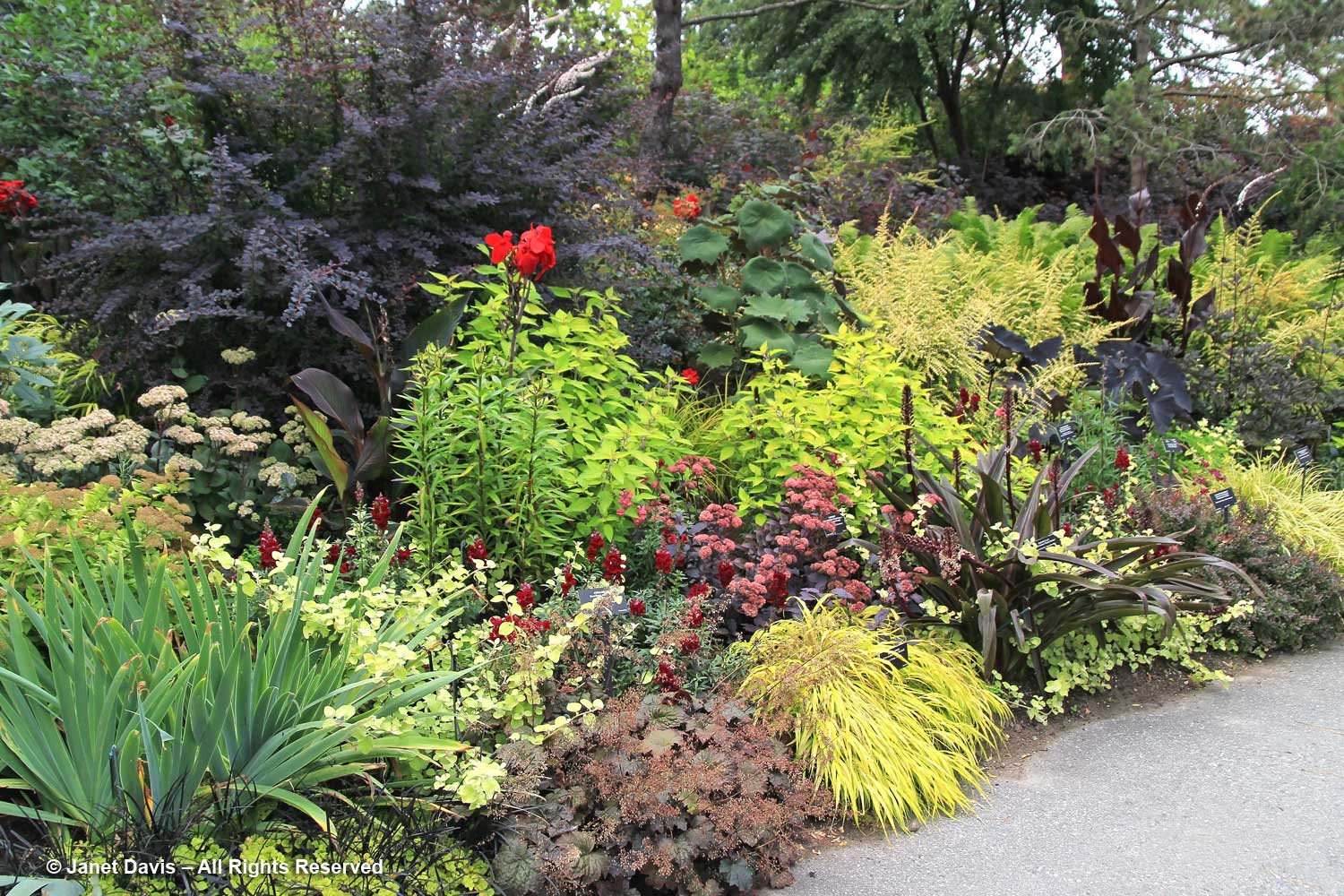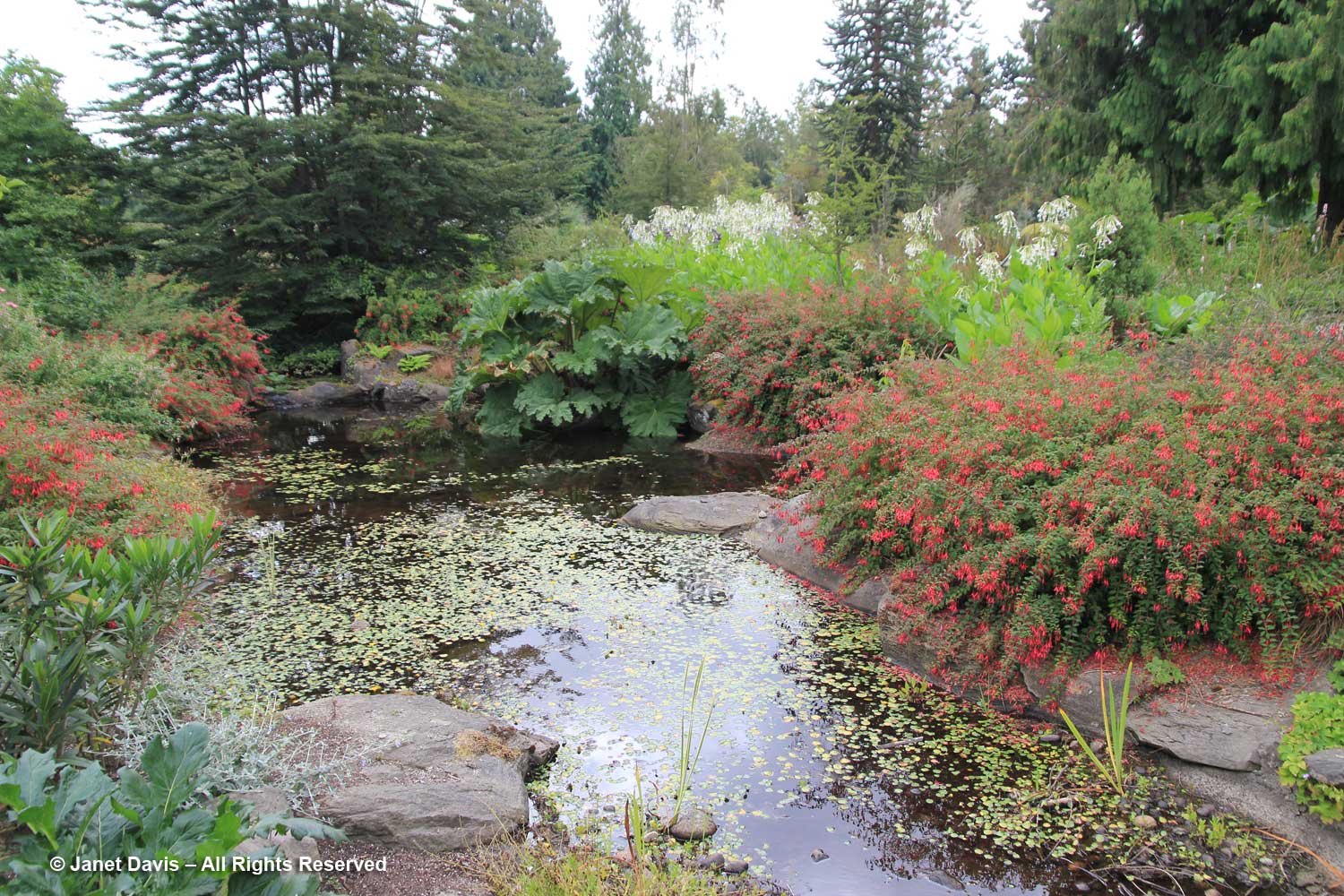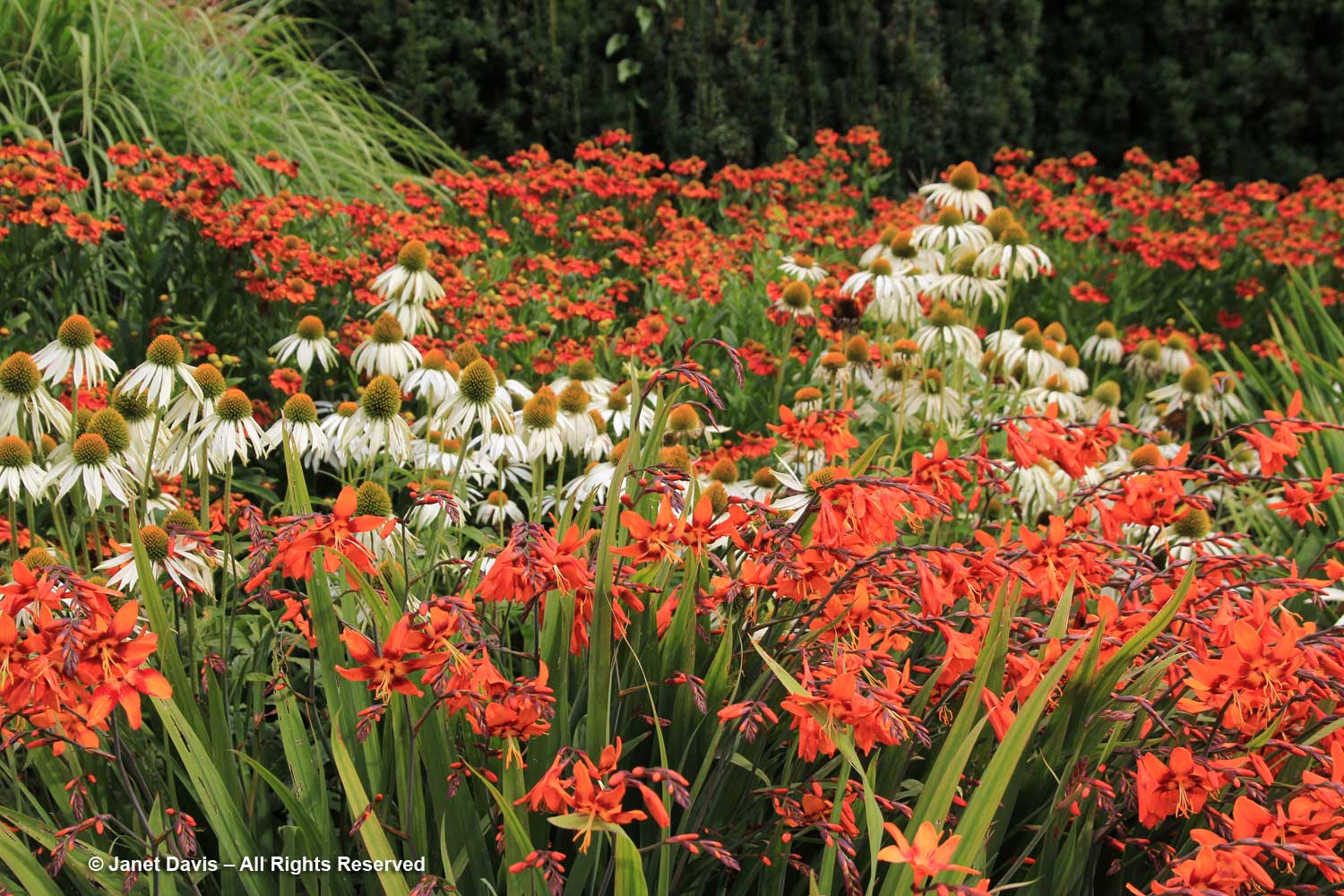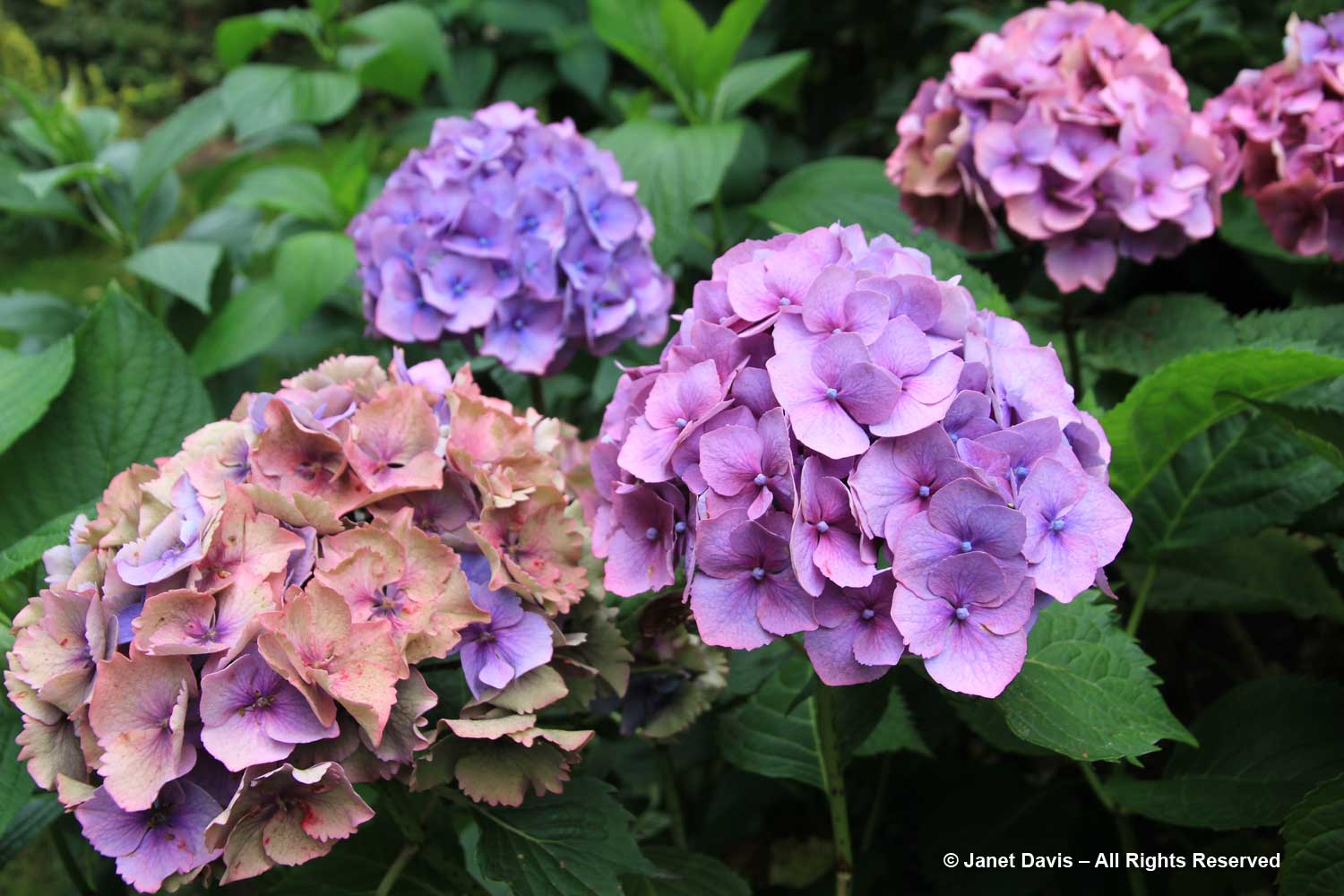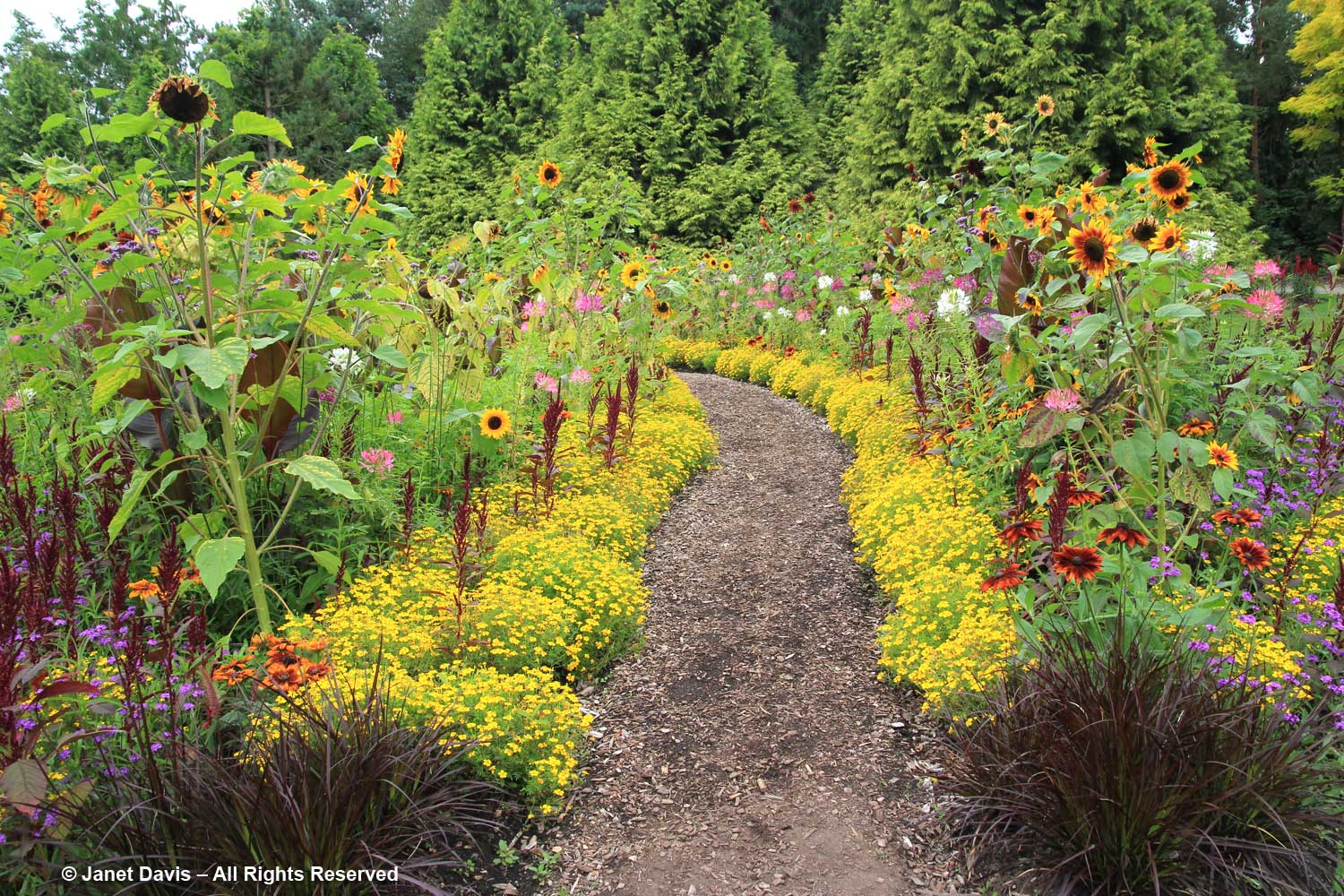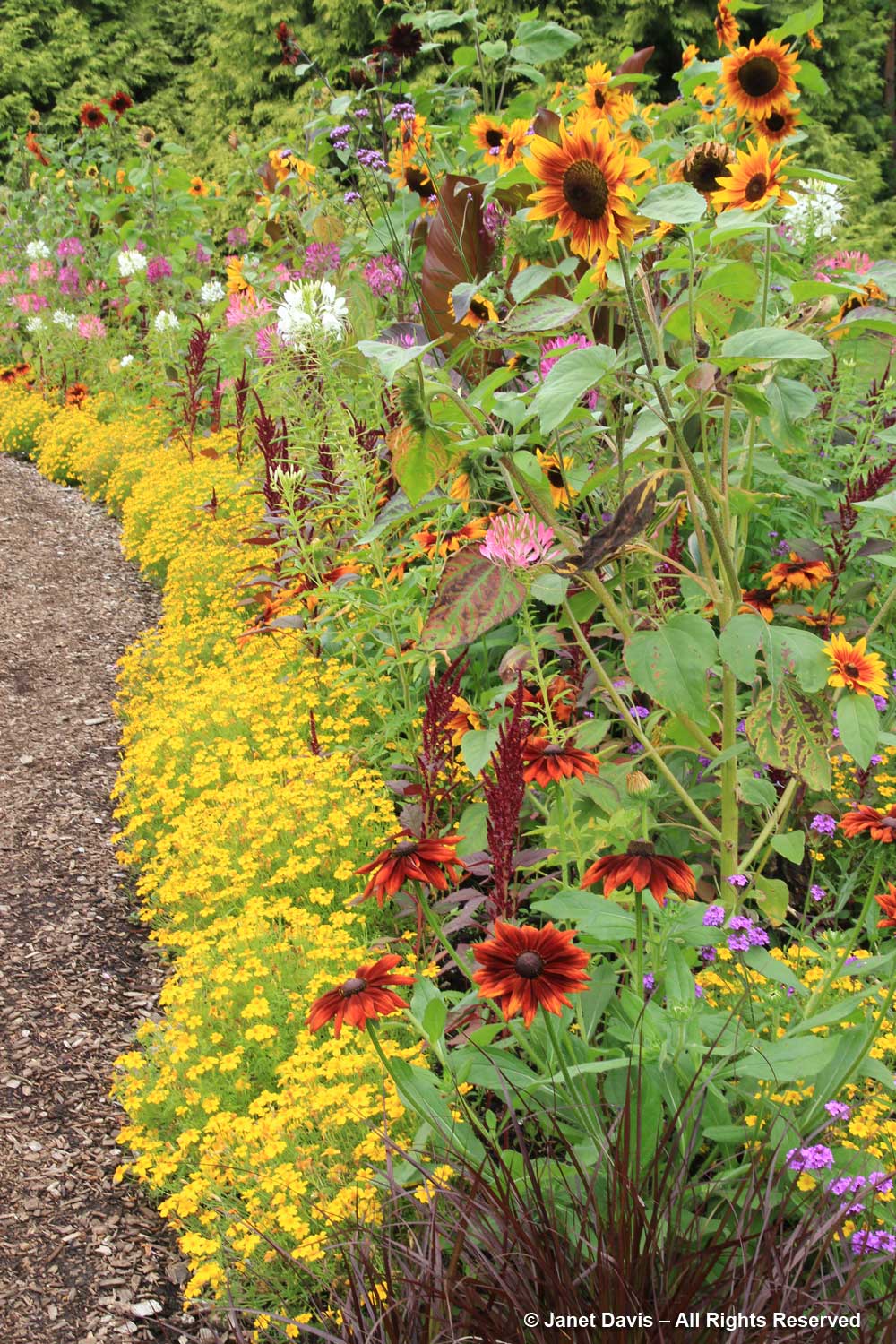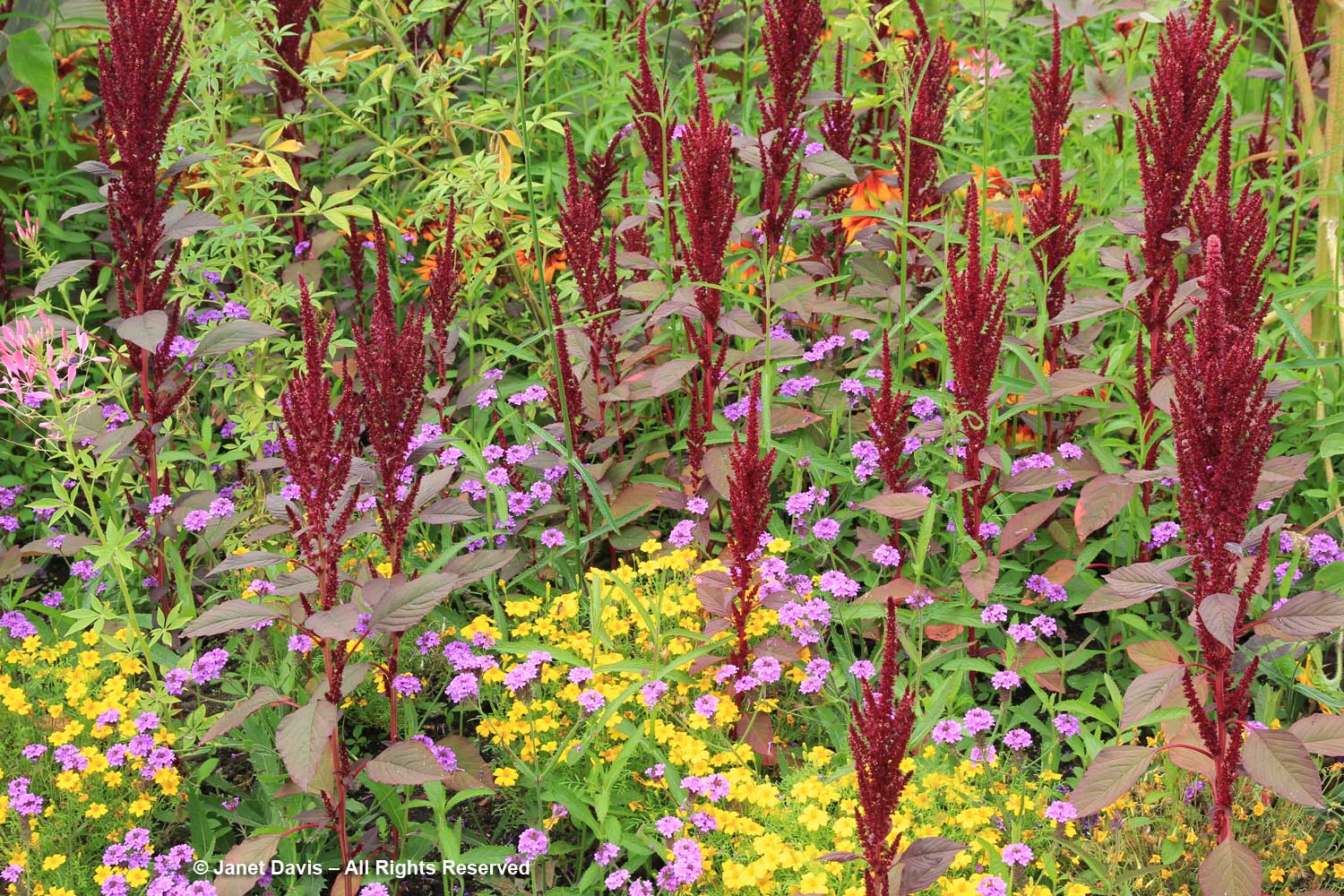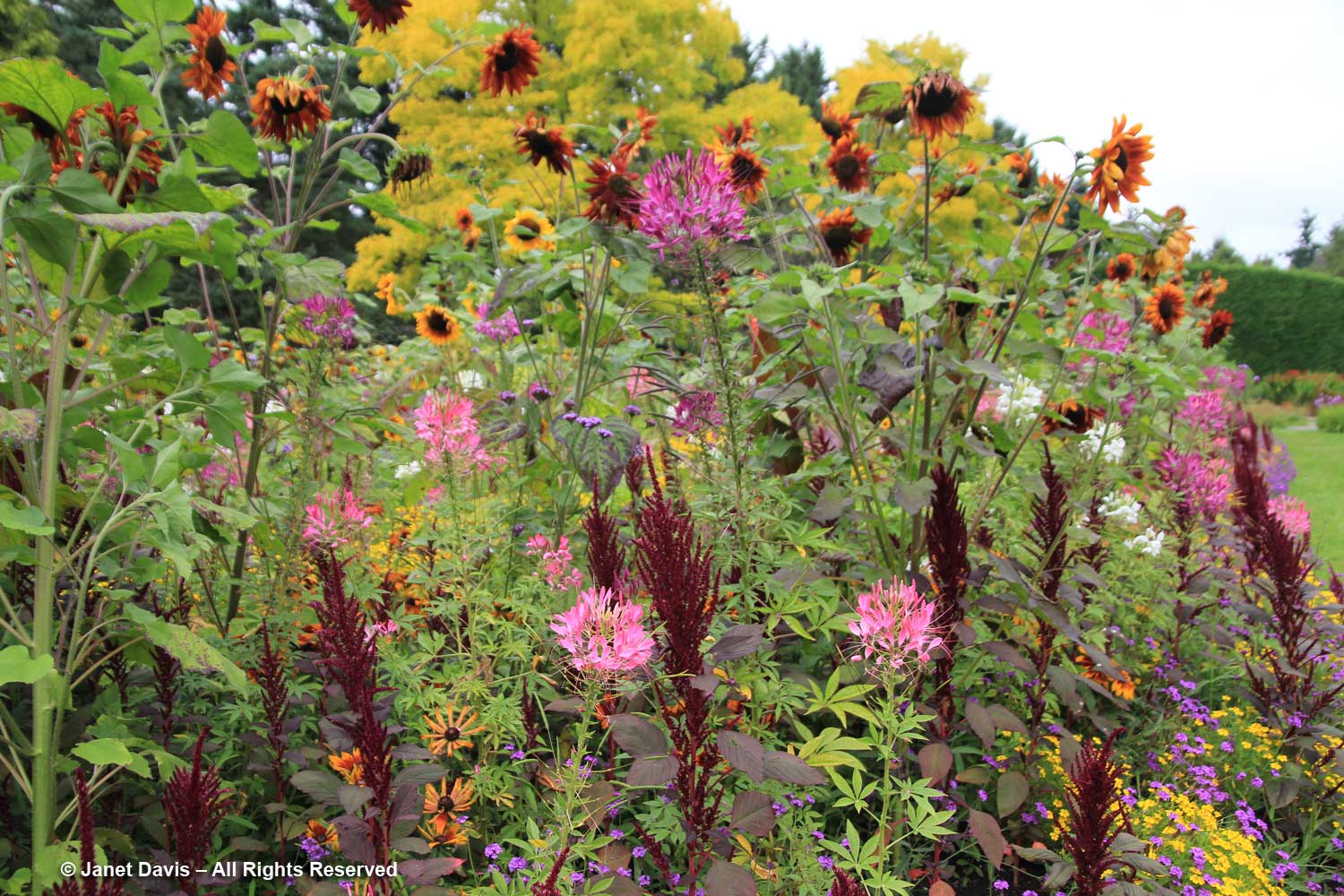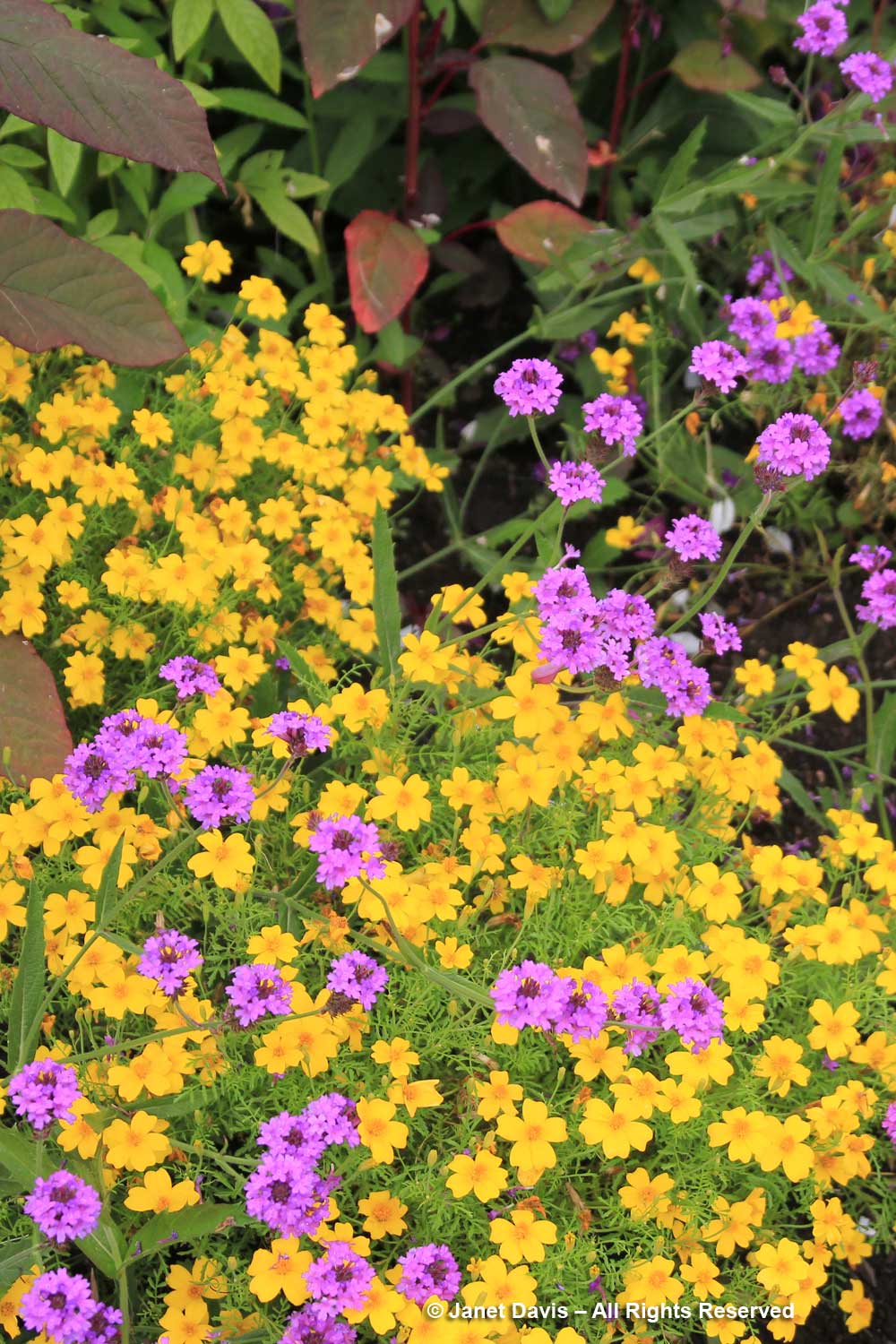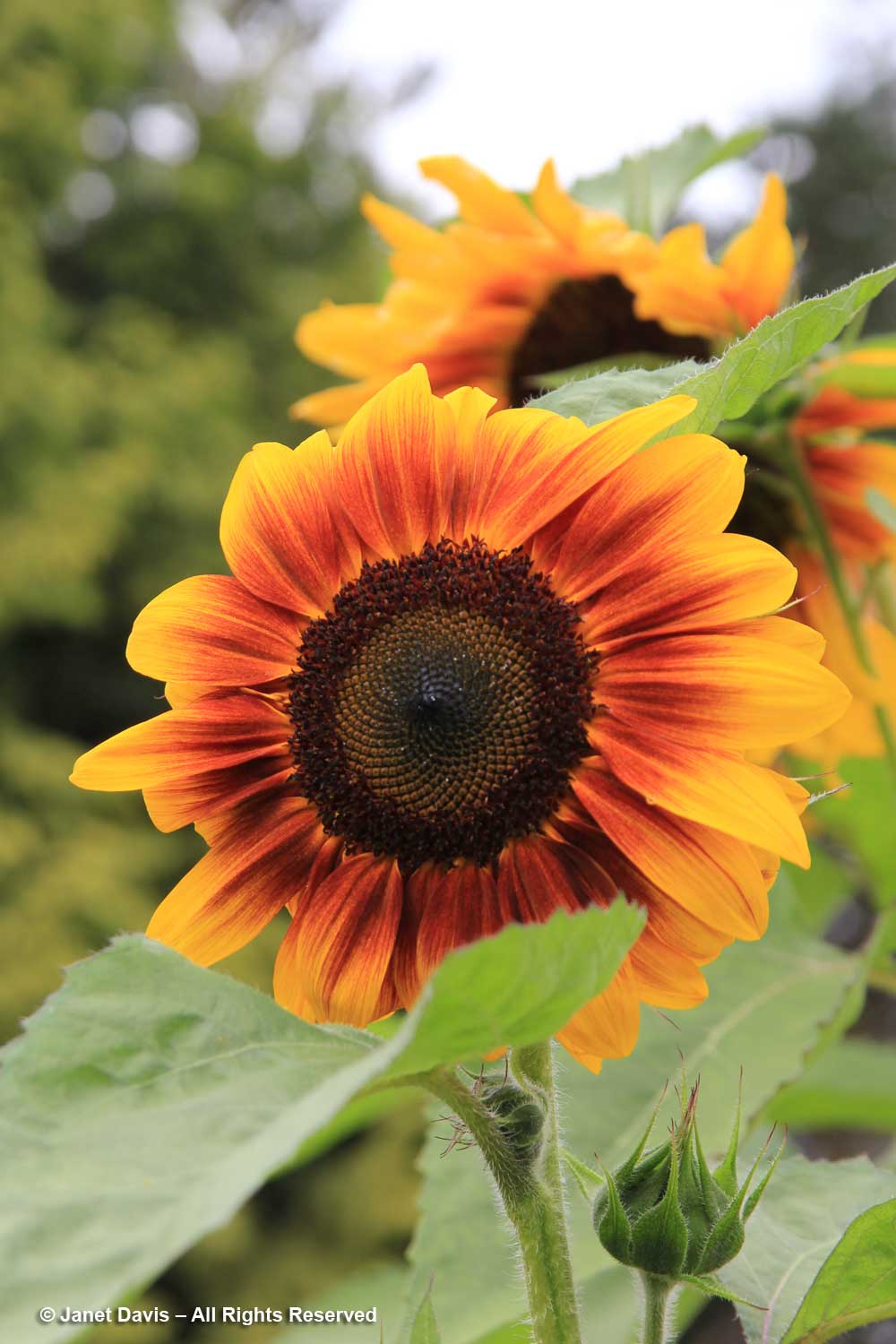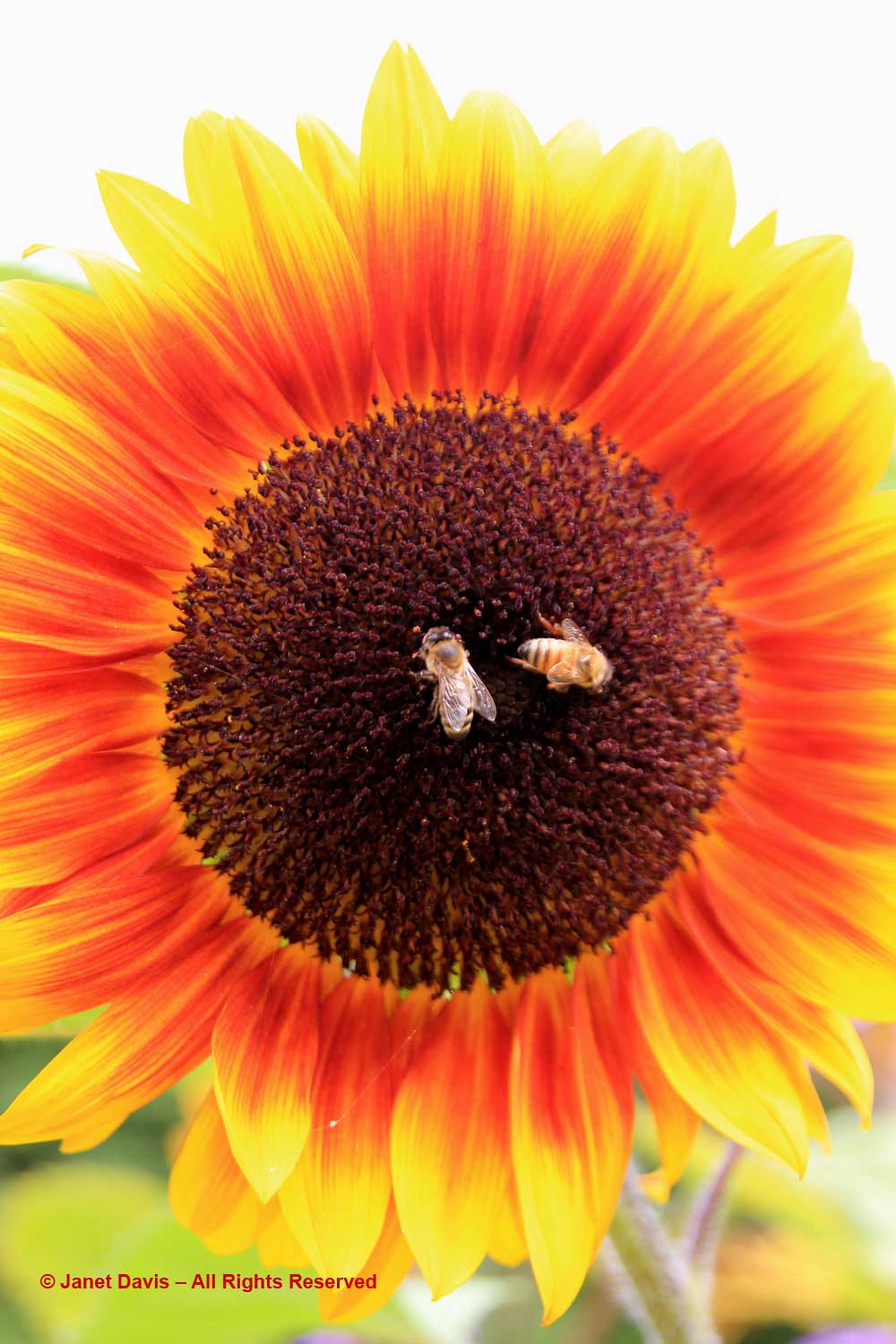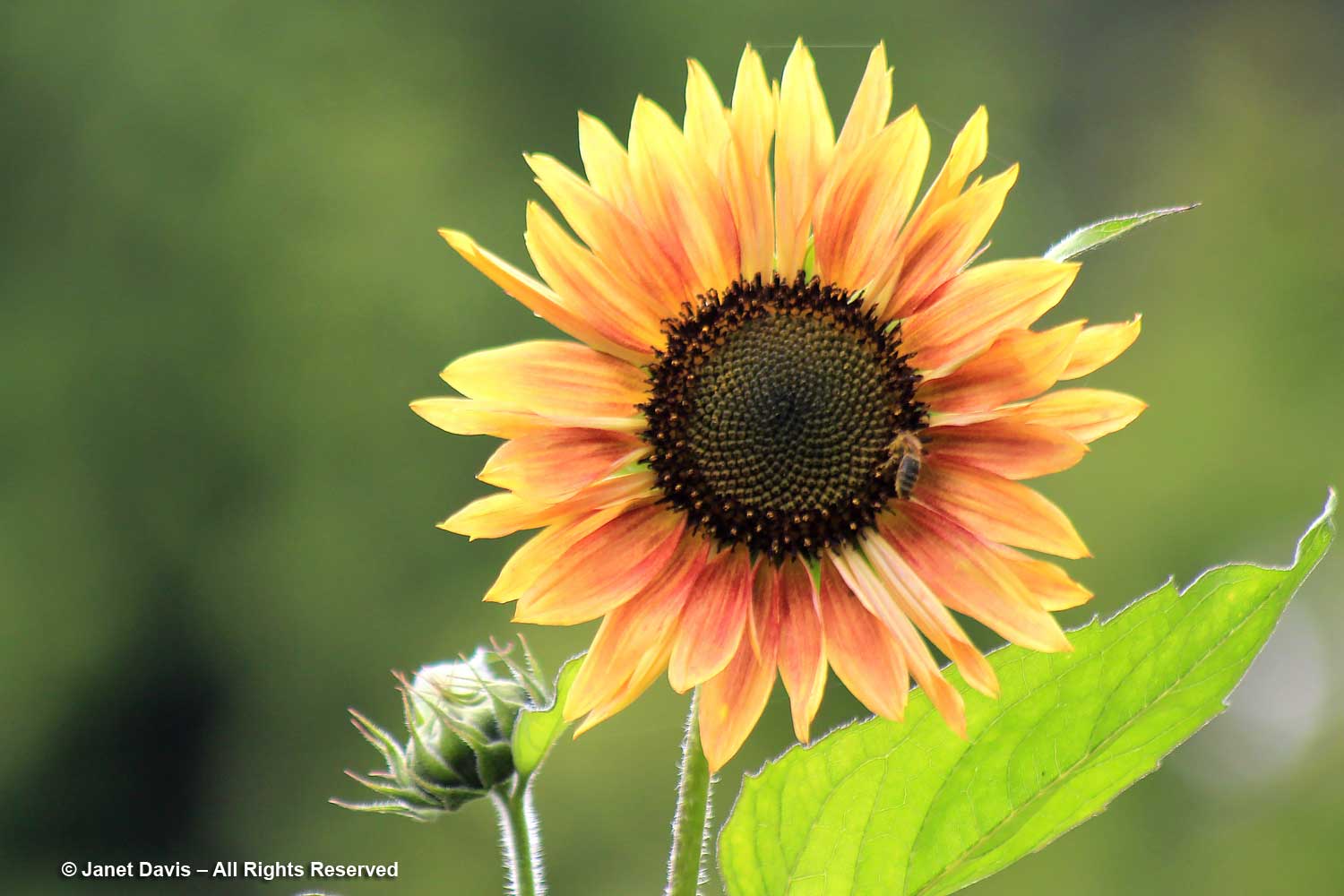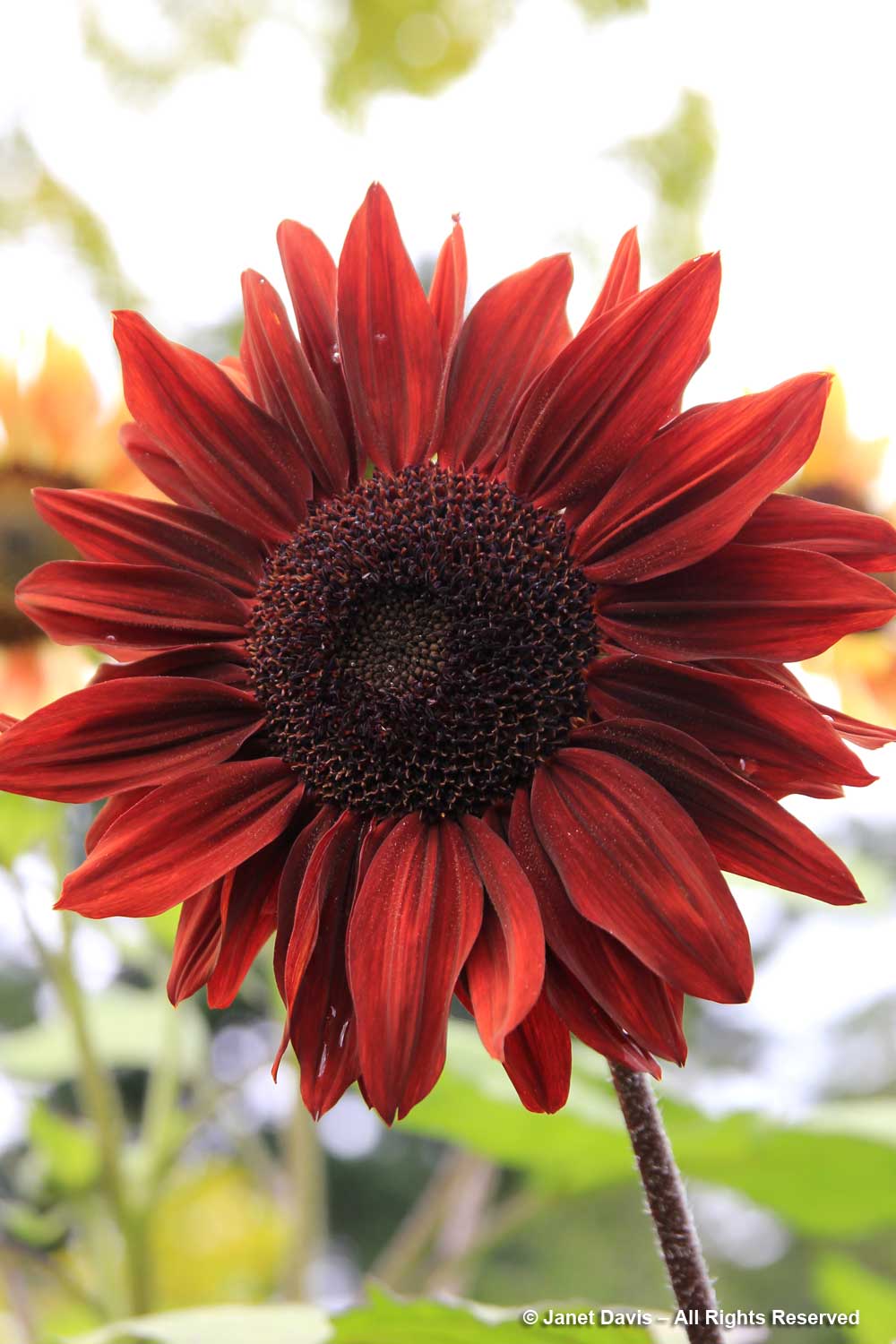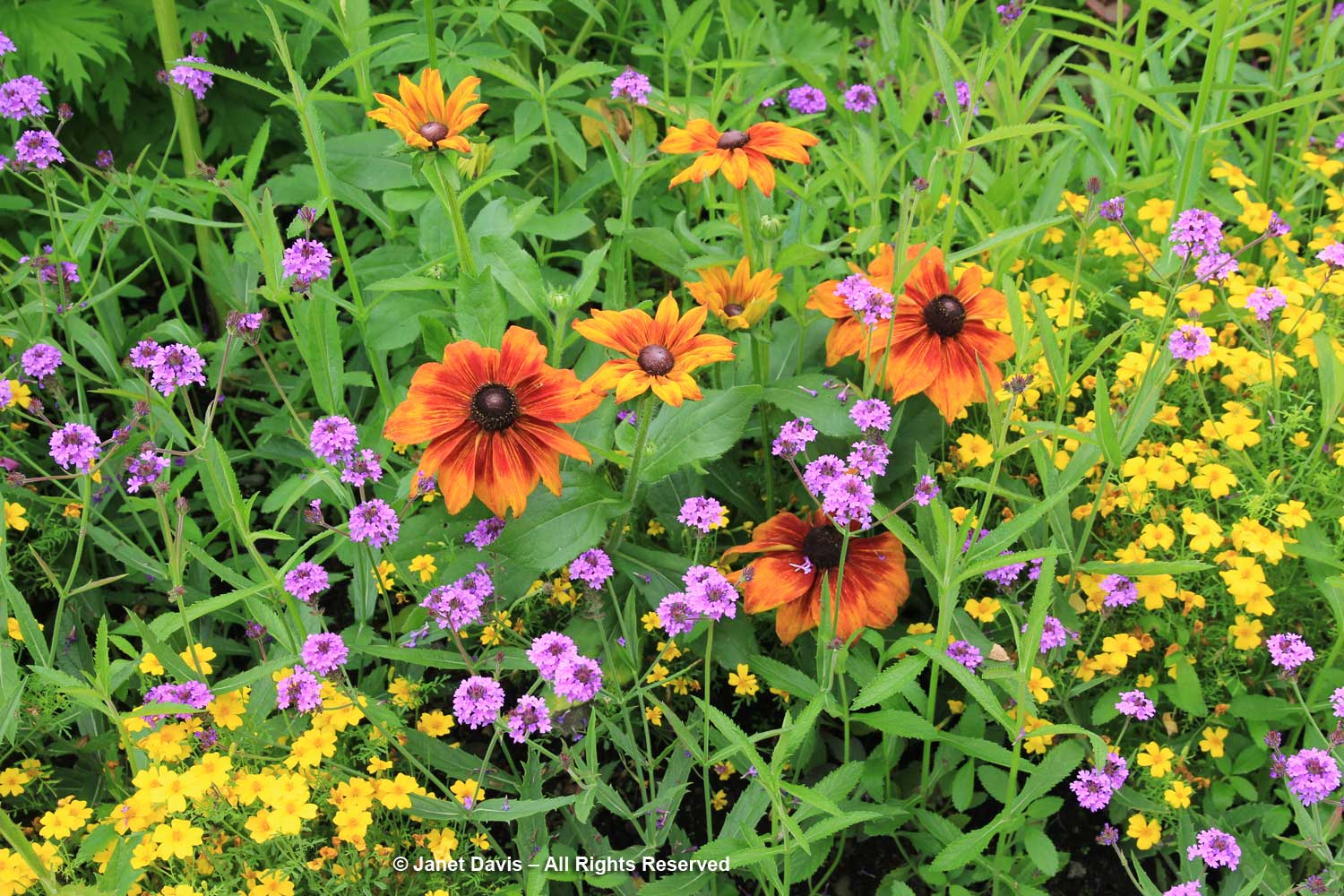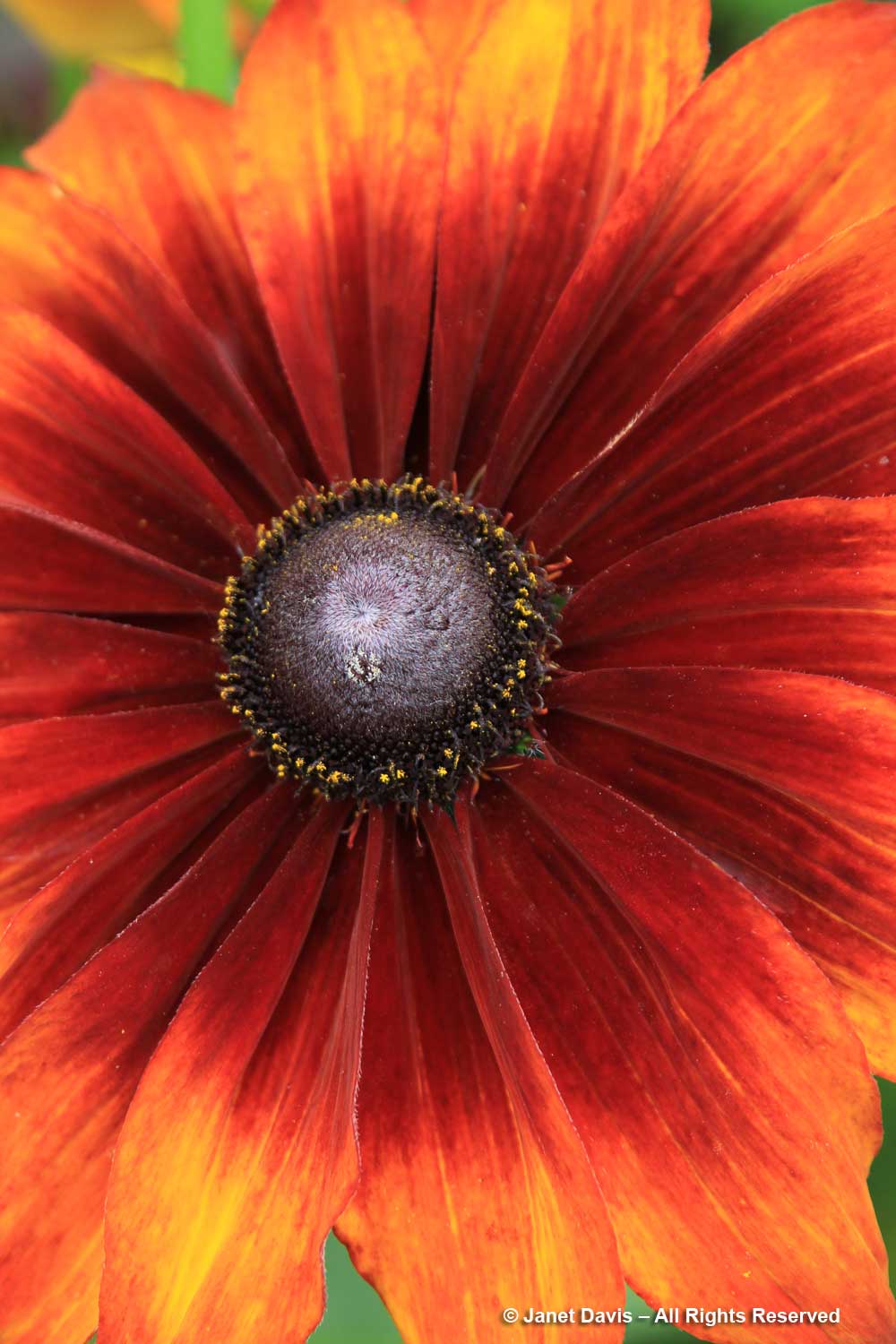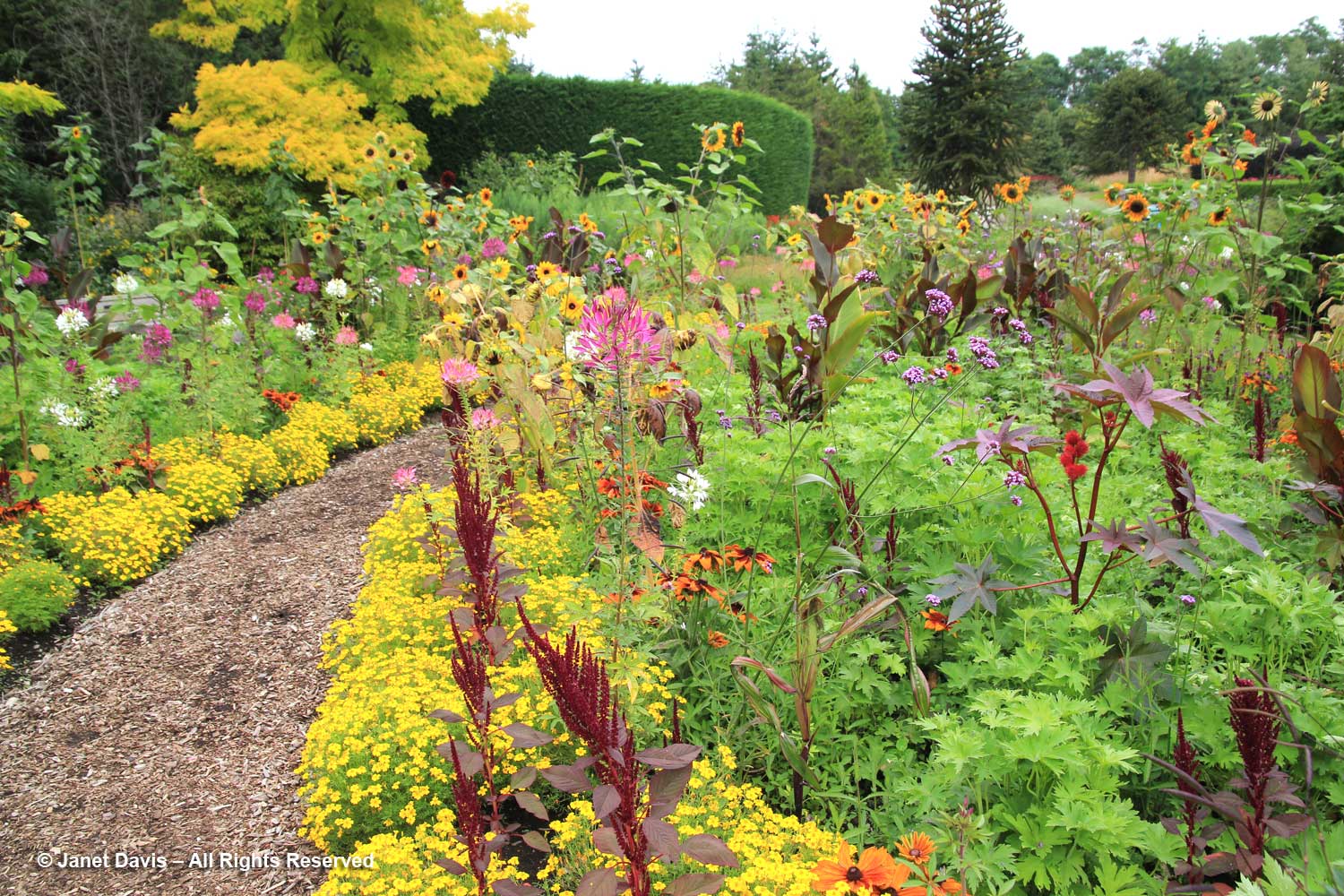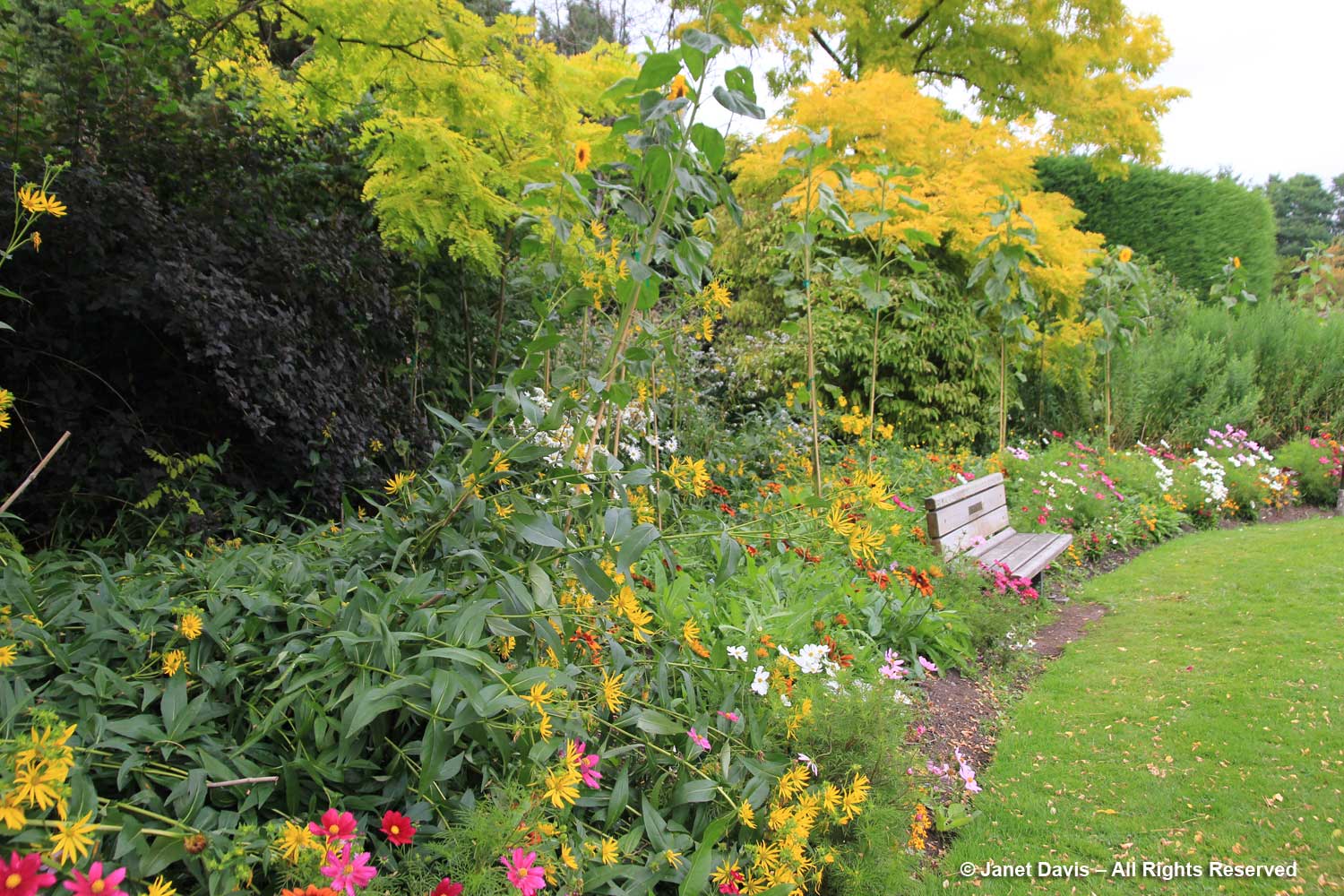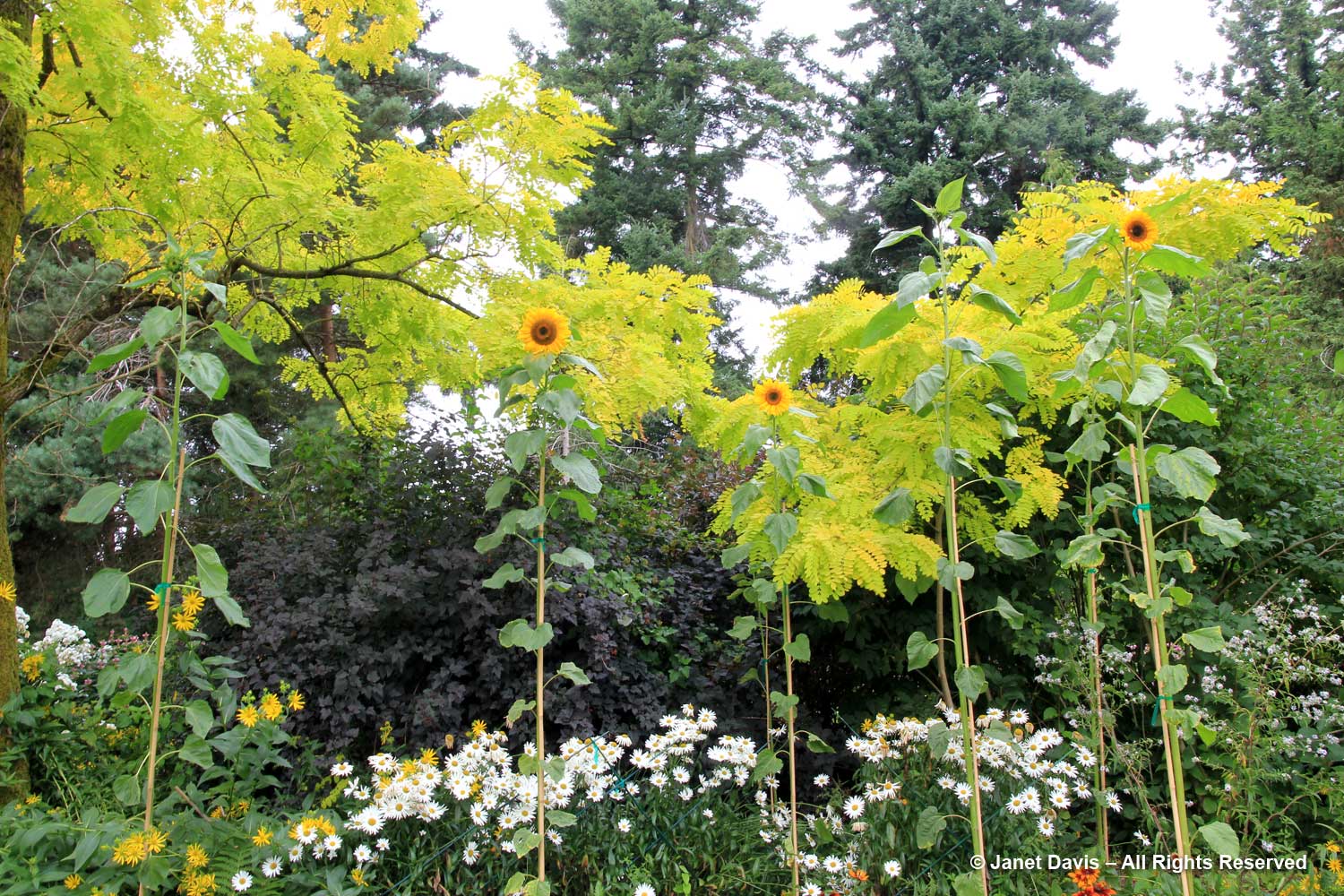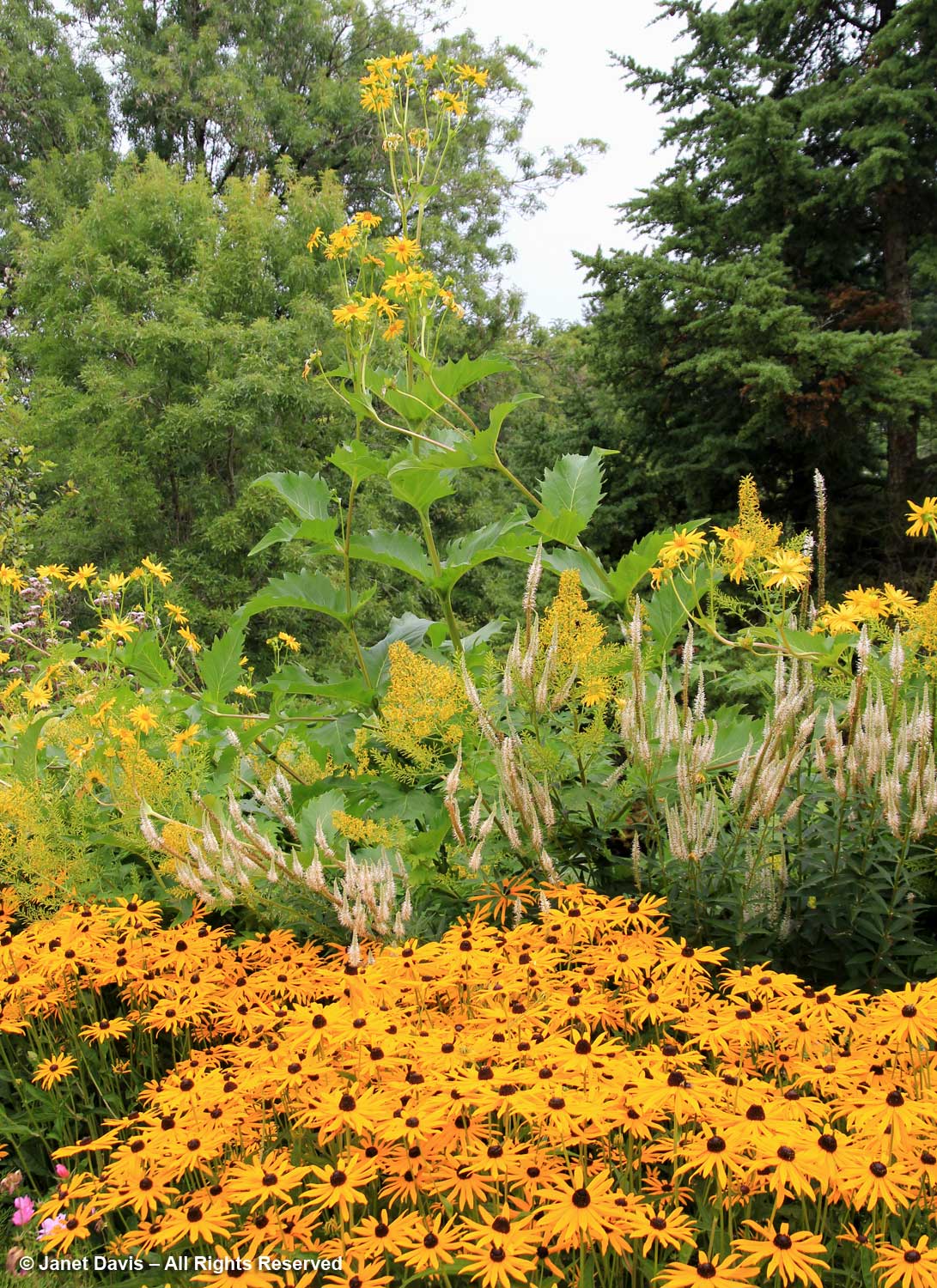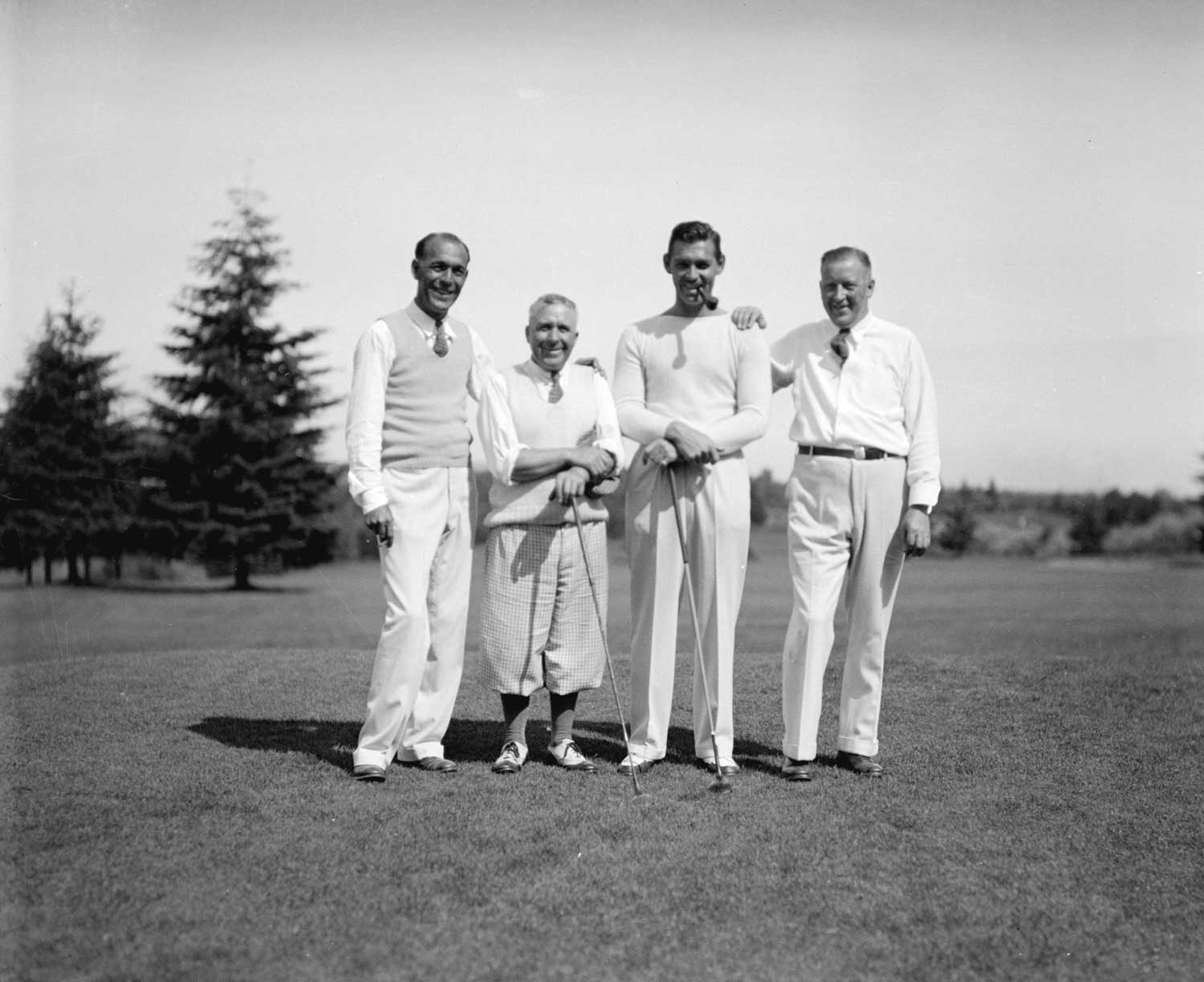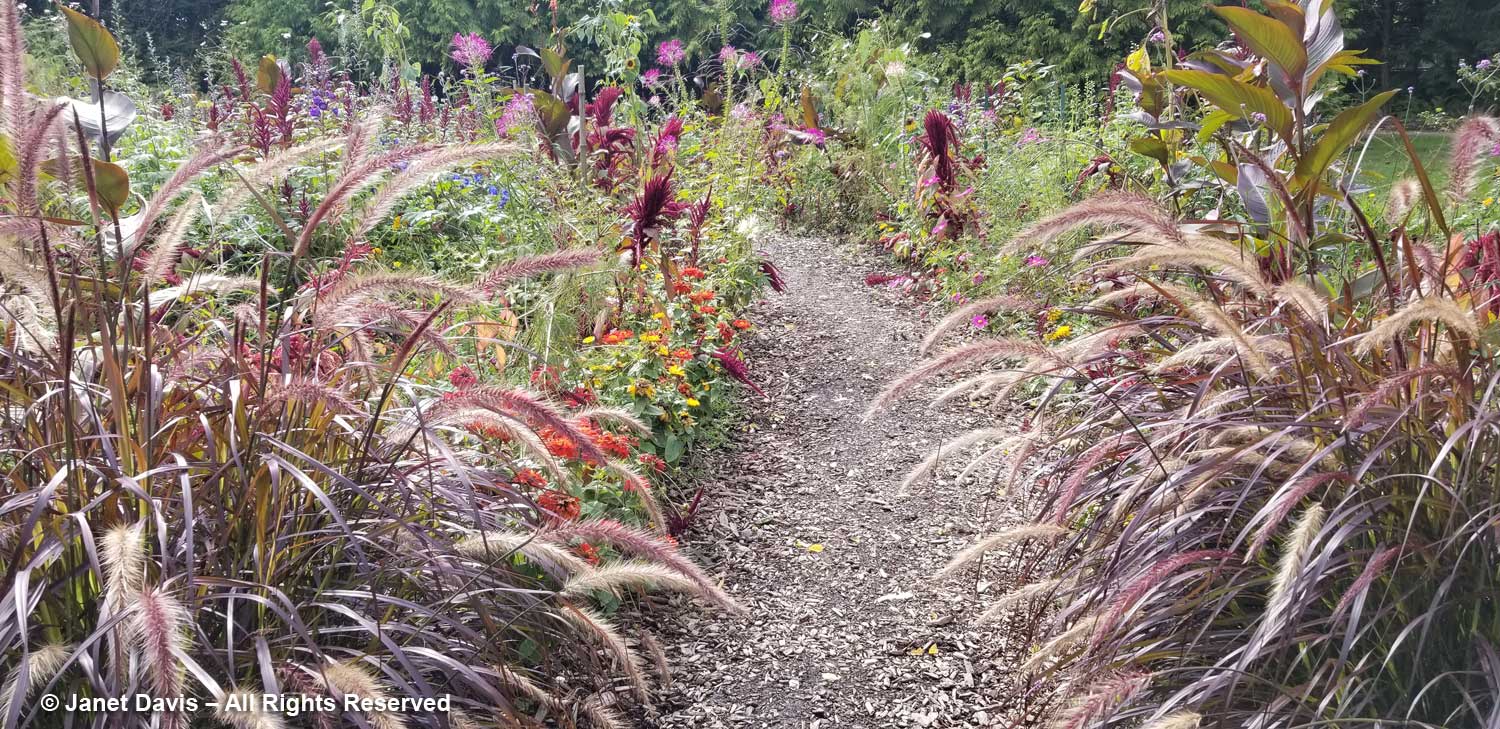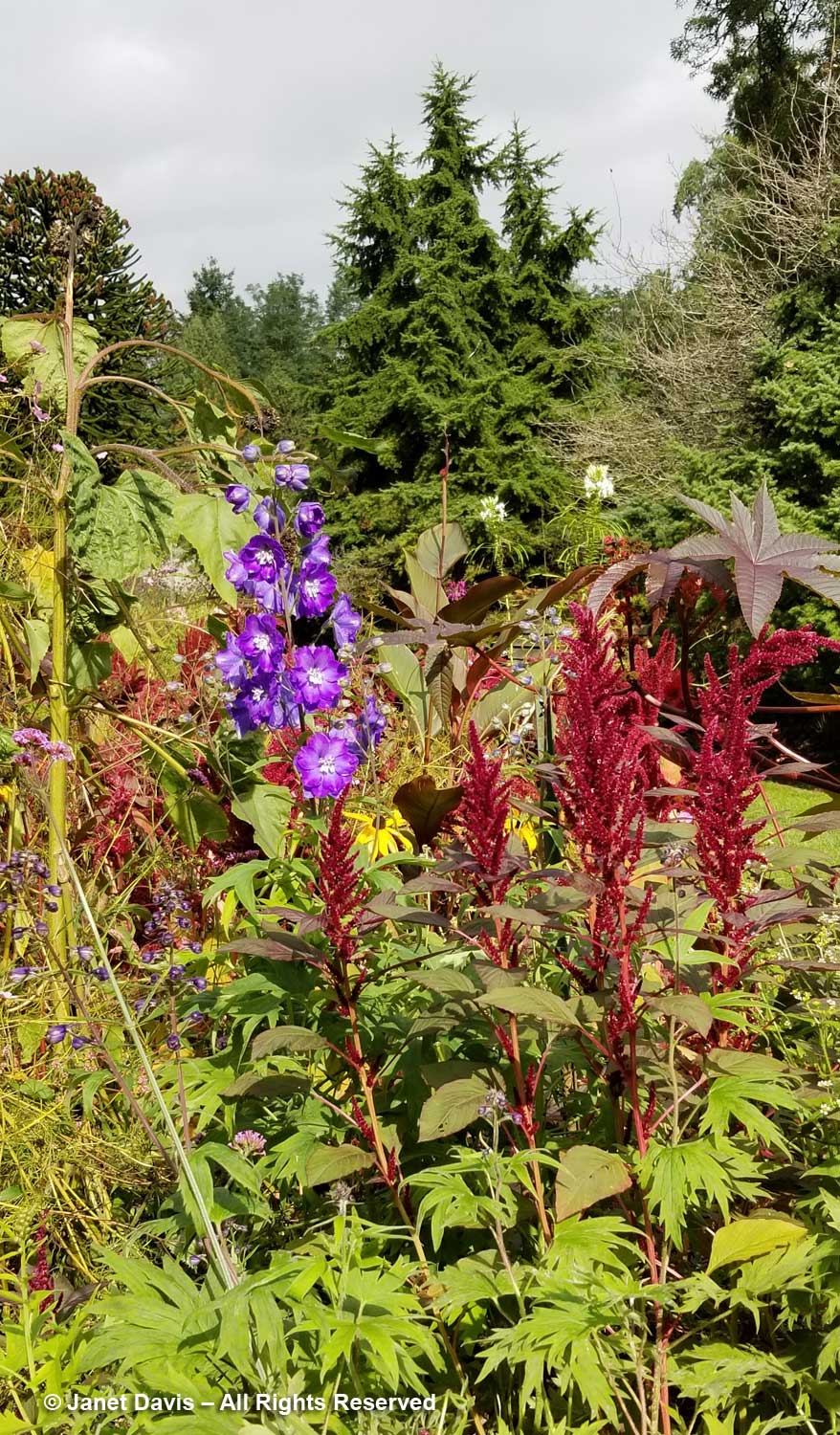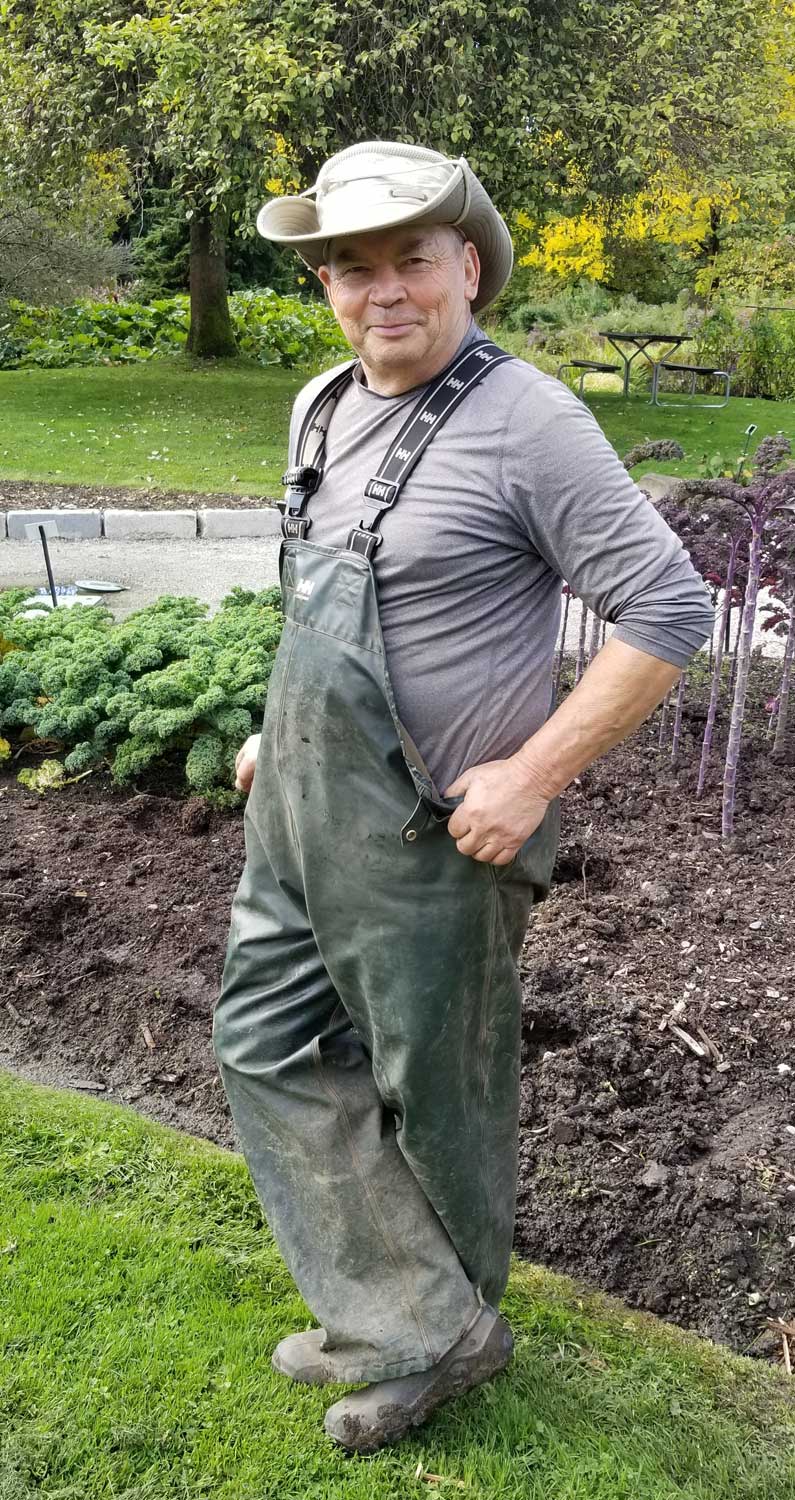Last week, for four days – including the weekend that Tropical Storm Ophelia decided to make her wet and windy appearance – I visited “America’s Garden Capital”, gardens of the Philadelphia region, along with almost 100 fellow garden bloggers. We call this annual adventure the Garden Bloggers’ Fling and it is all that: tours, fun, friendship (and no classes). It began with a visit to fabulous Longwood Gardens in Kennett Square, PA, and a rare behind-the-scenes tour of the high-tech production facility, courtesy of Longwood’s Conservatory Manager – and the one-man organizing committee for this Fling – Karl Gercens III. He shepherded us around a large greenhouse…..
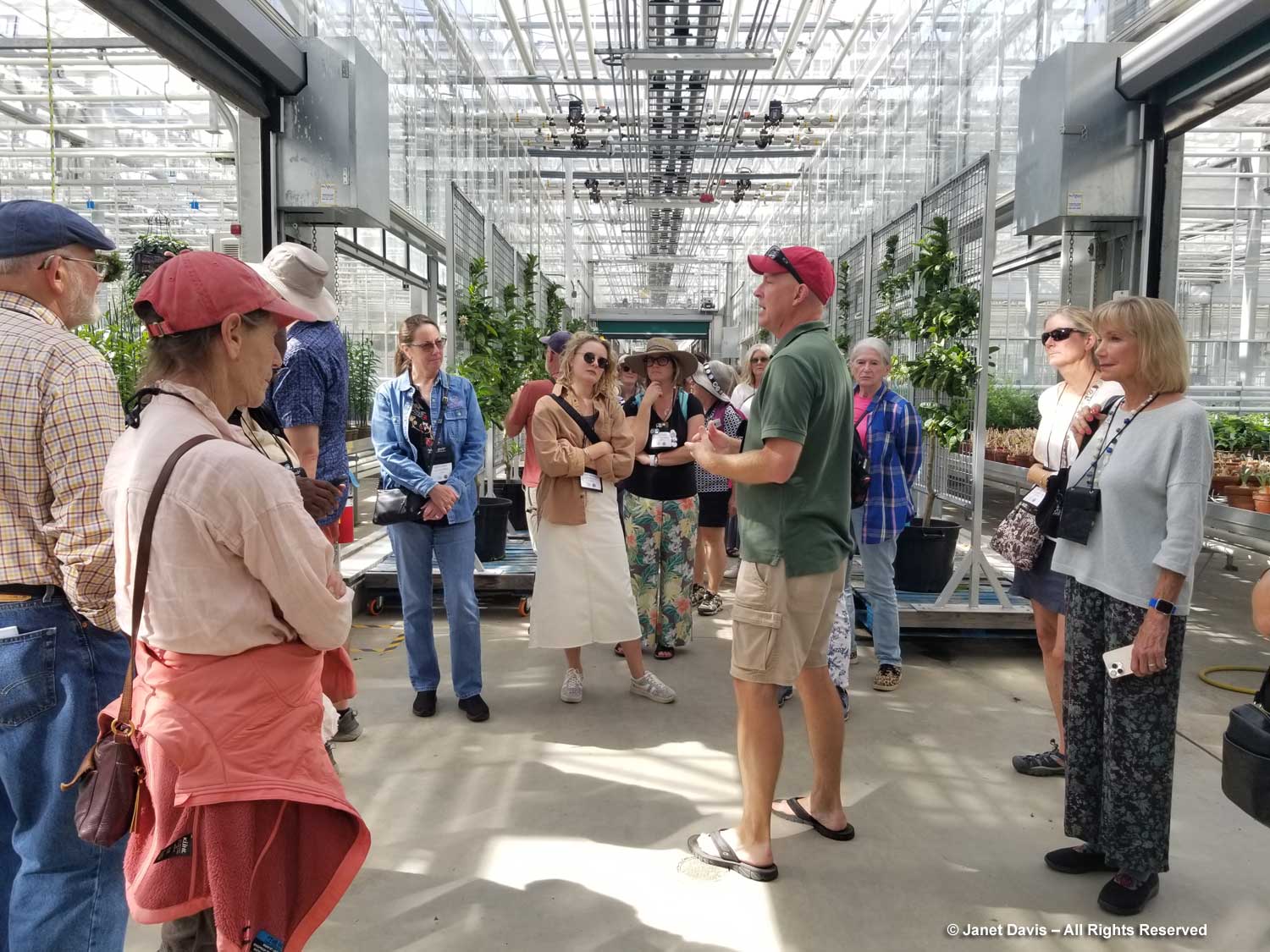
….. showing us what seemed to be acres of chrysanthemums being readied for Longwood’s annual Chrysanthemum Festival, Sept. 30-Nov. 12 this year. Some of the rare cultivars originated in Japan 45 years ago and are propagated to keep them available for use each autumn.
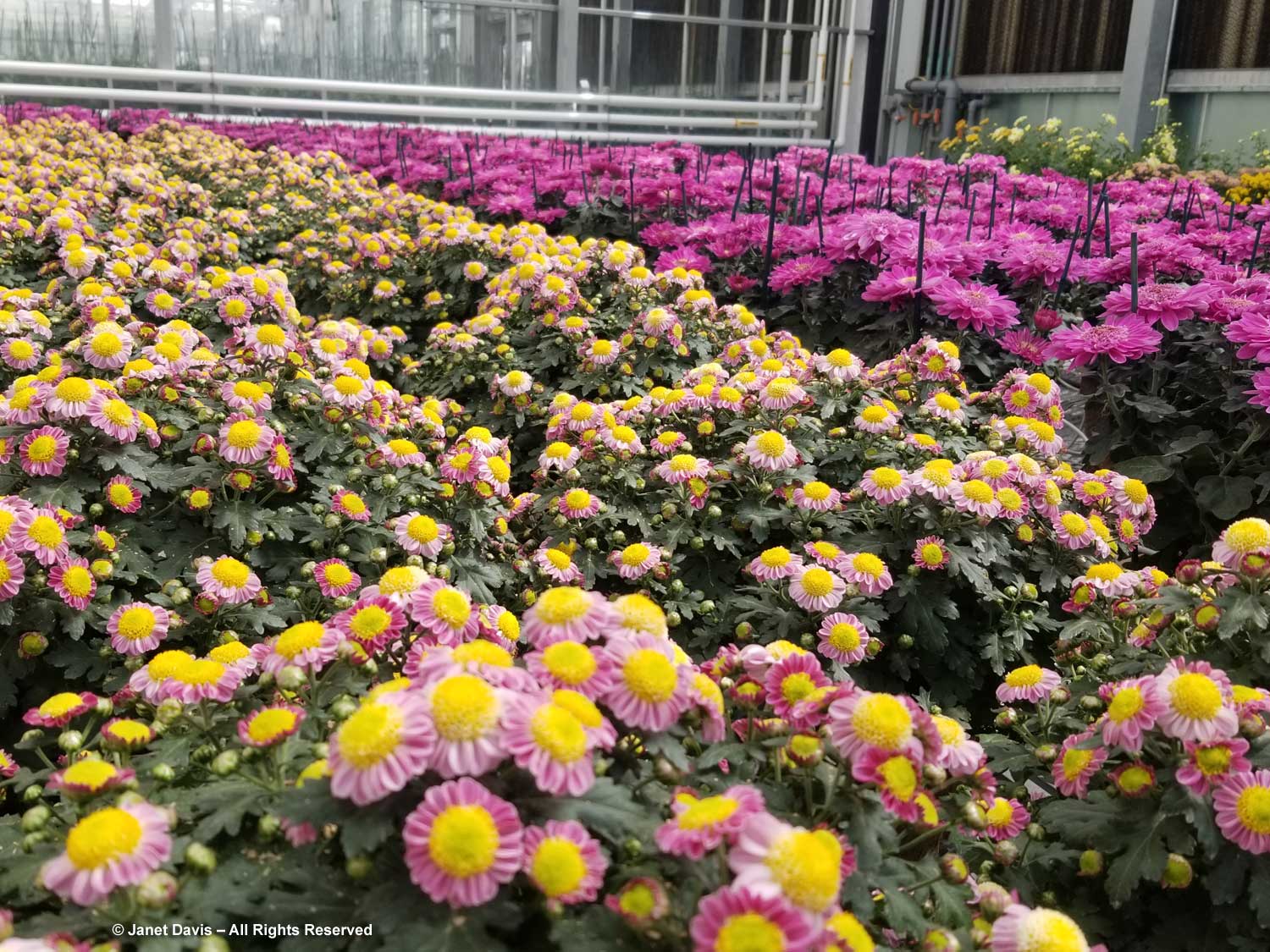
Karl told us about the pruning and training techniques that prepare the mums for show-time….
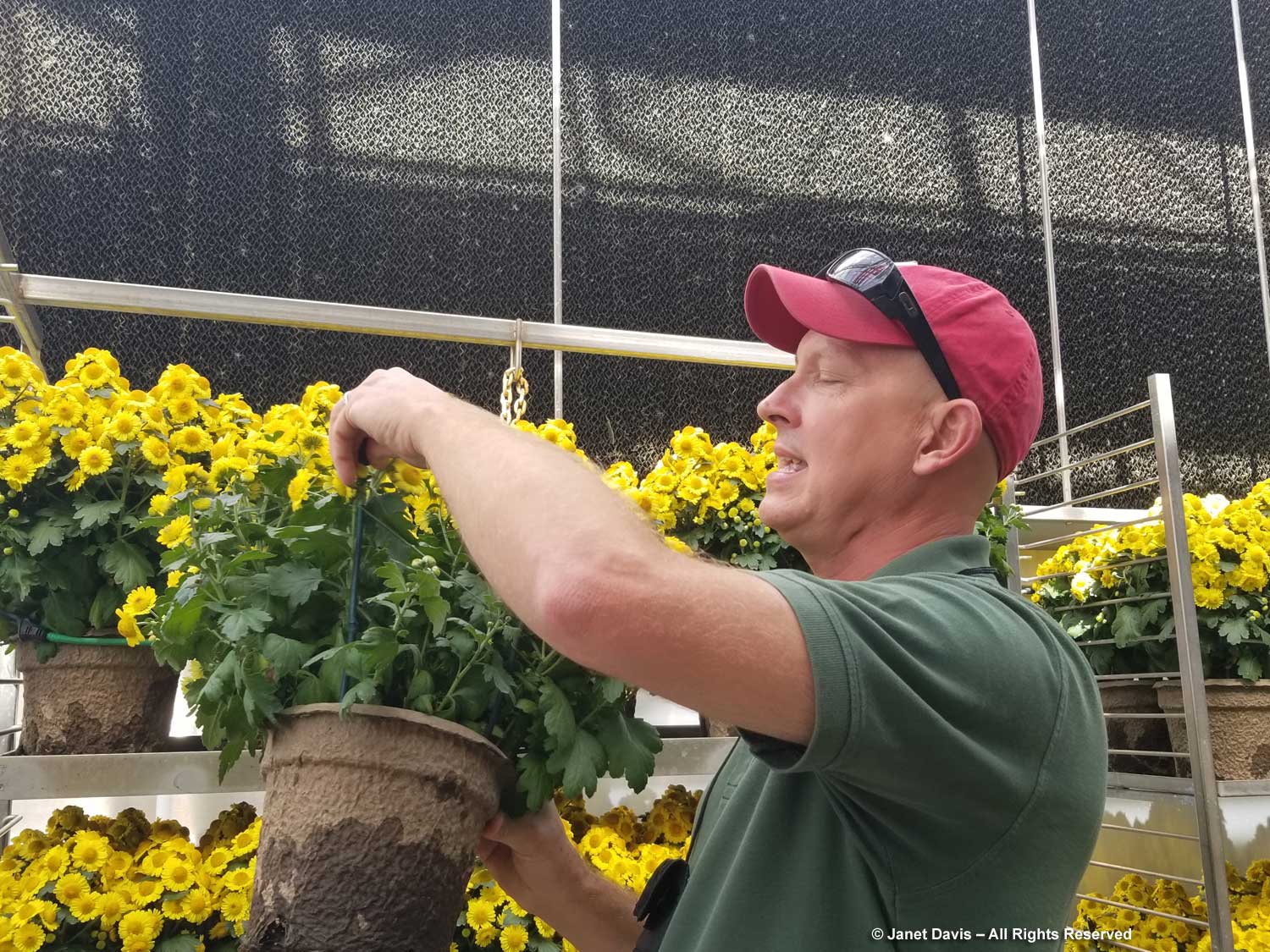
…. and we watched a gardener patiently training mums into Christmas tree shapes.
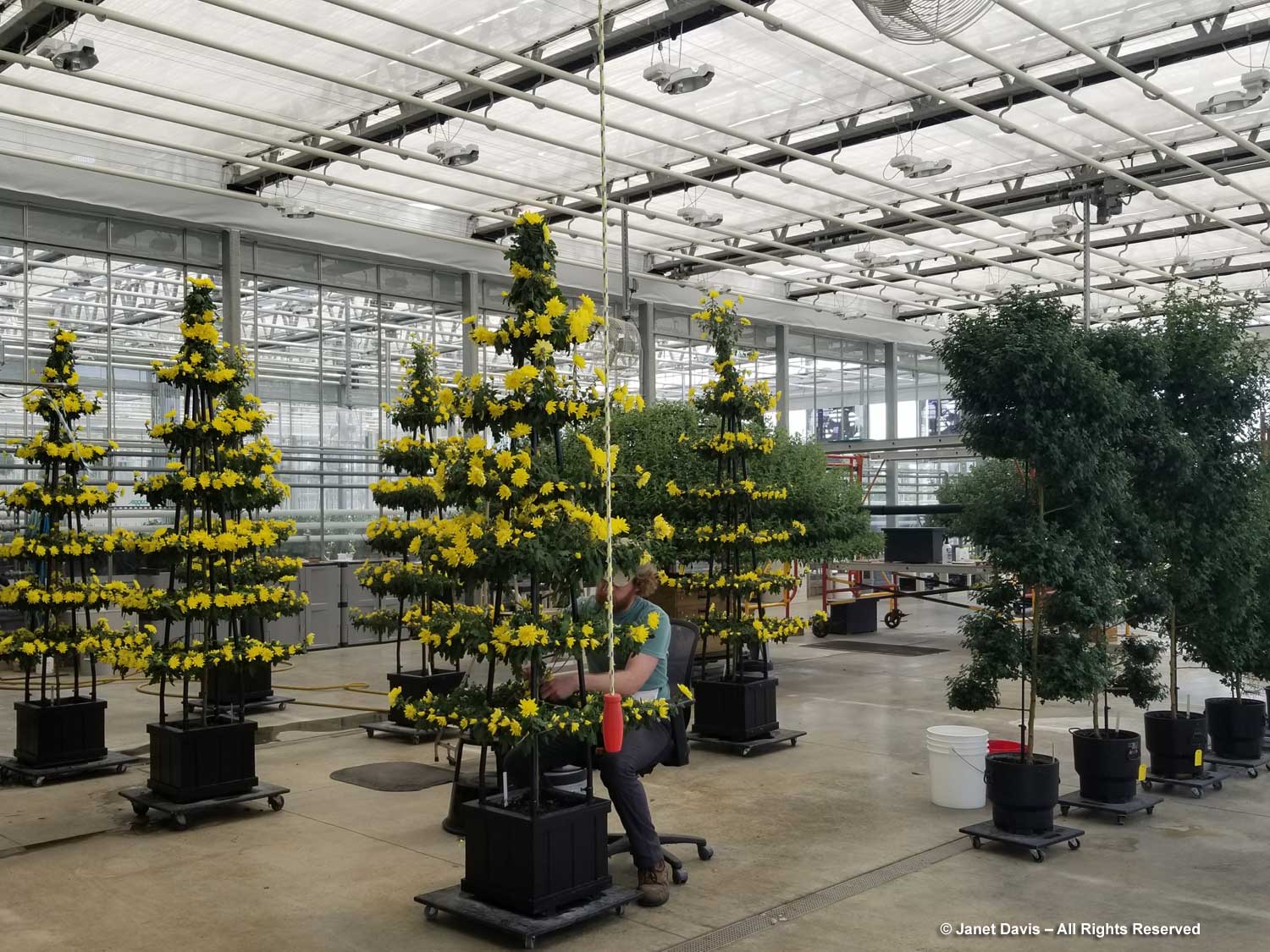
These looked like octopuses to me, but I believe they’re called mum cascades and are ultimately suspended from above in the Conservatory. This greenhouse featured blinds that enable the gardeners to control the light/dark balance needed for the plants’ physiological photoperiod, in order to have them all bloom on time.
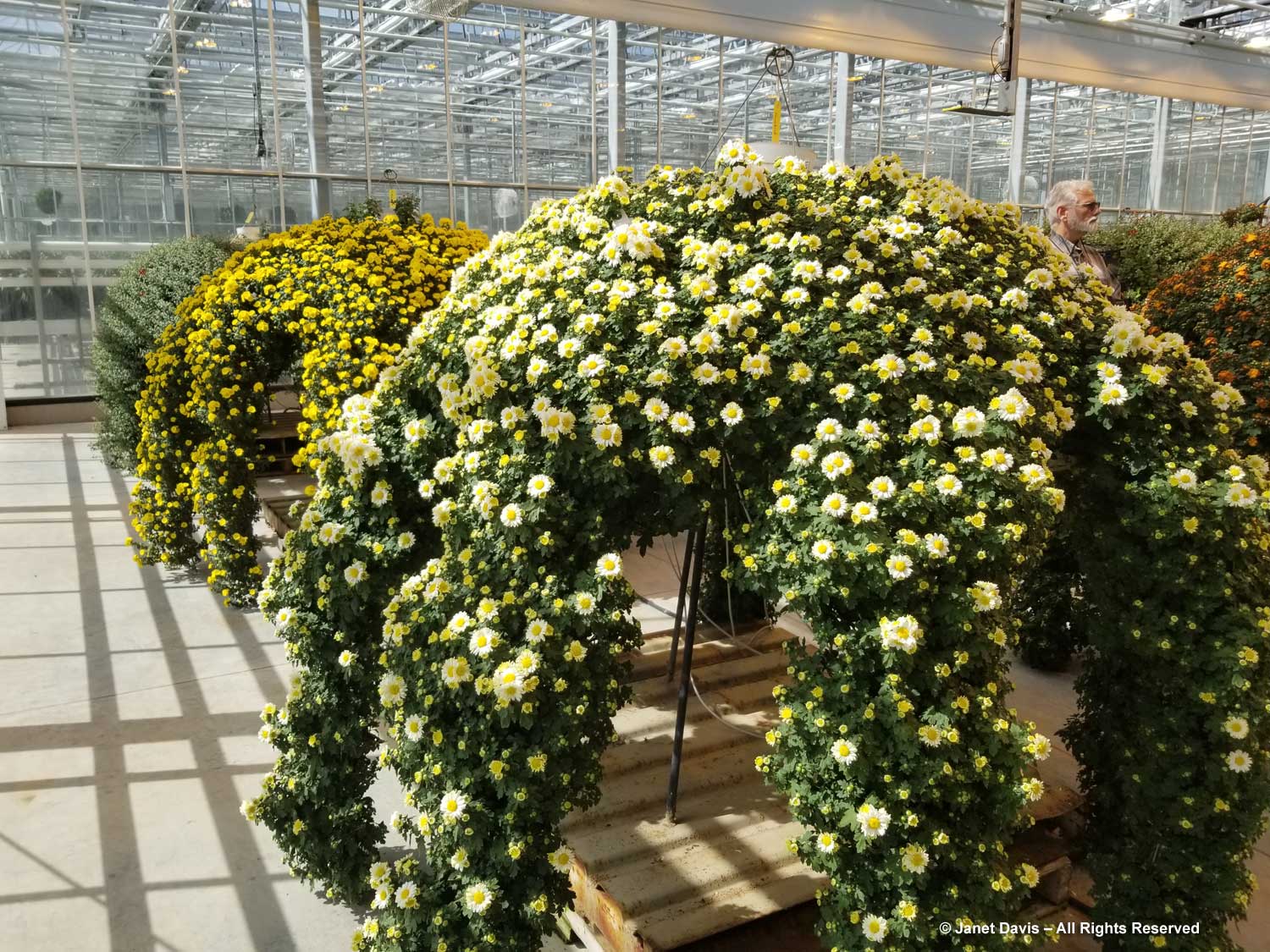
Michelle demonstrated the high-tech overhead trolley line that moves hanging baskets around the greenhouse to facilitate watering, fertilizing and correct light exposure.
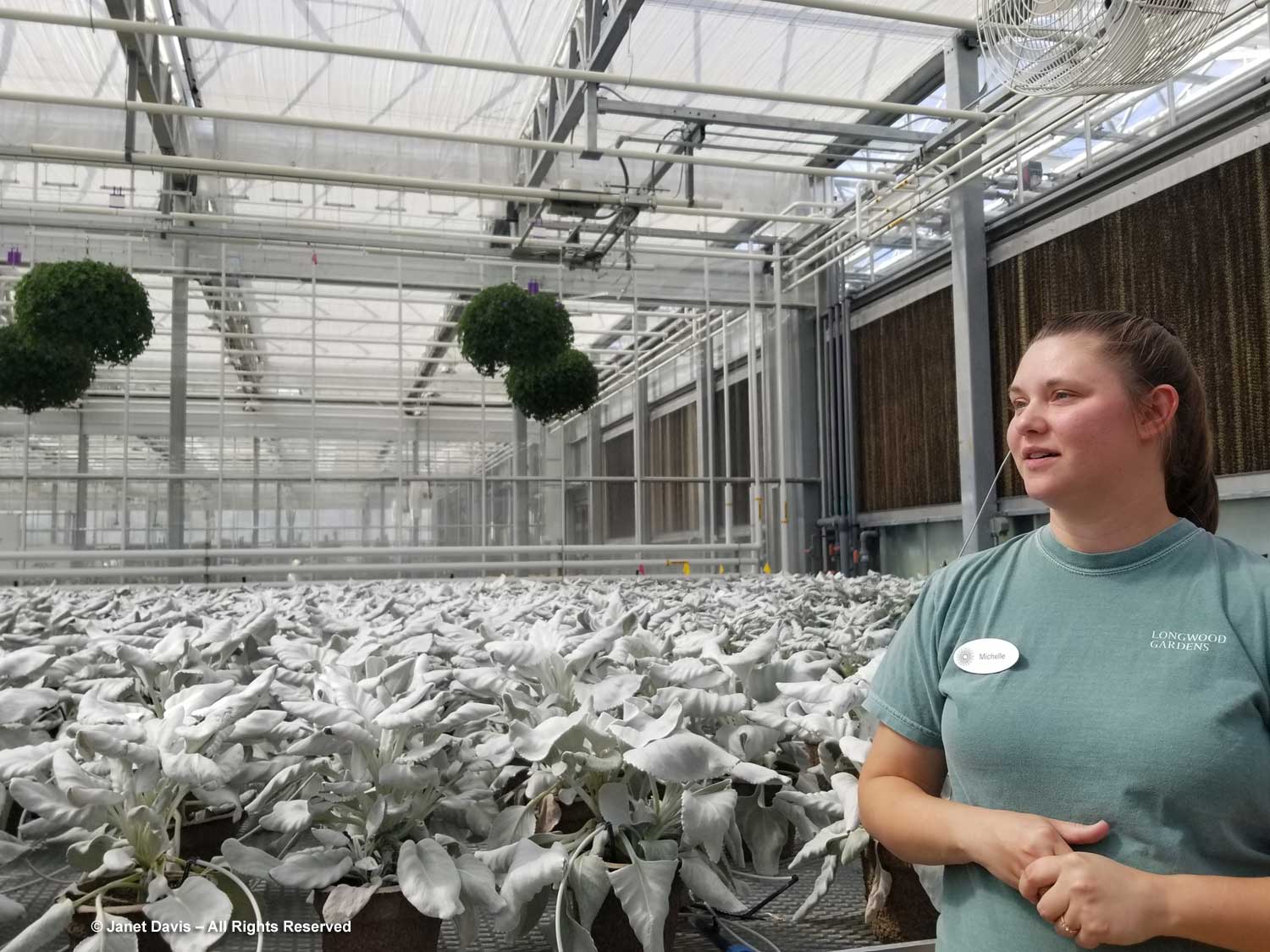
Pierre du Pont was very fond of citrus trees and grew them in the Conservatory in a section then called the Orangery. So espaliered citrus trees have become part of Longwood’s tradition.
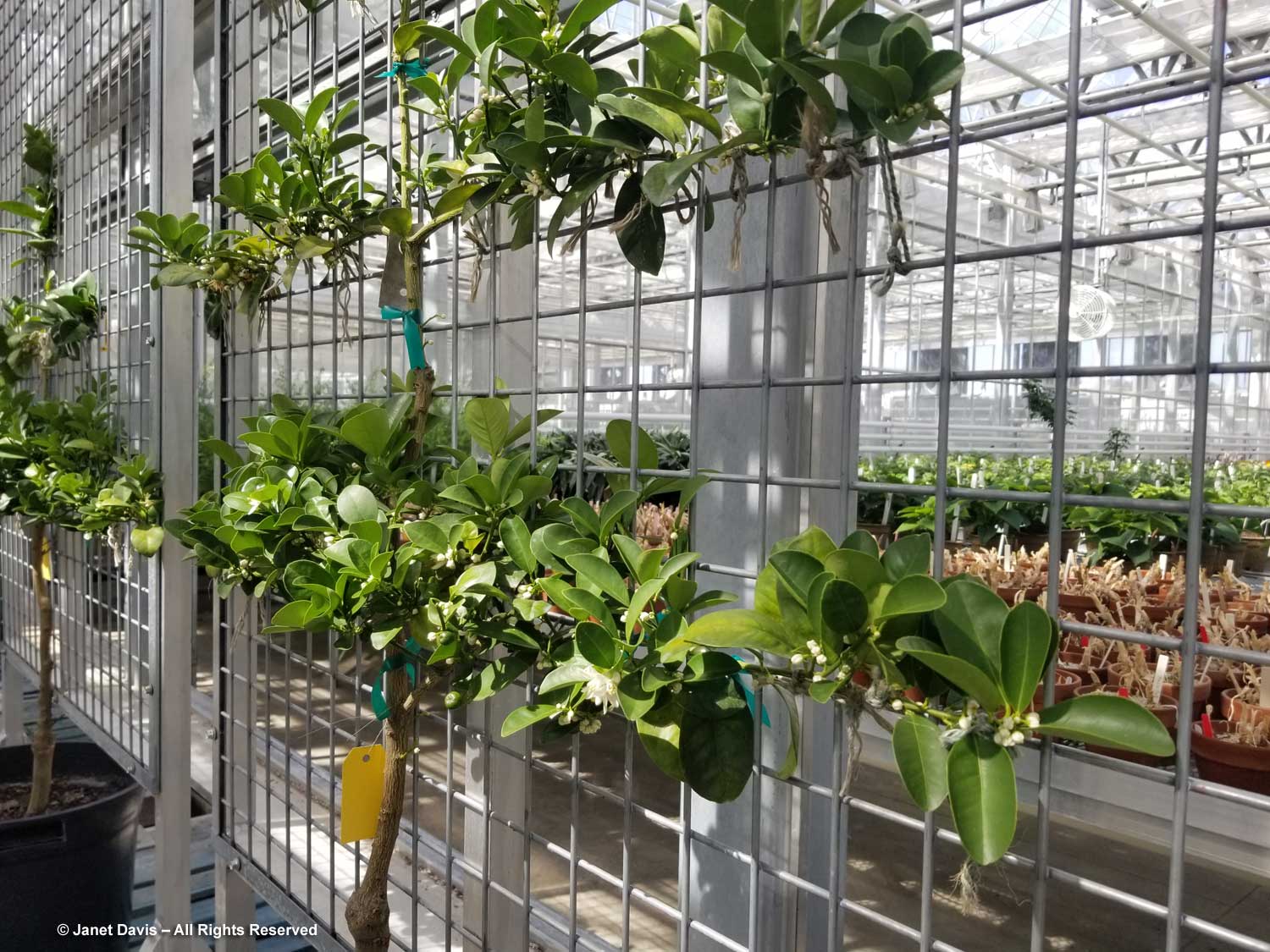
Then it was outside to a talk by the gardener of the aquatic plants occupying temporary pools while major construction takes place around their regular pools. Prominent was Victoria amazonica with its platter-shaped leaves, the largest floating leaves in the plant kingdom, famous for supporting small children in Victorian-era conservatory photos.
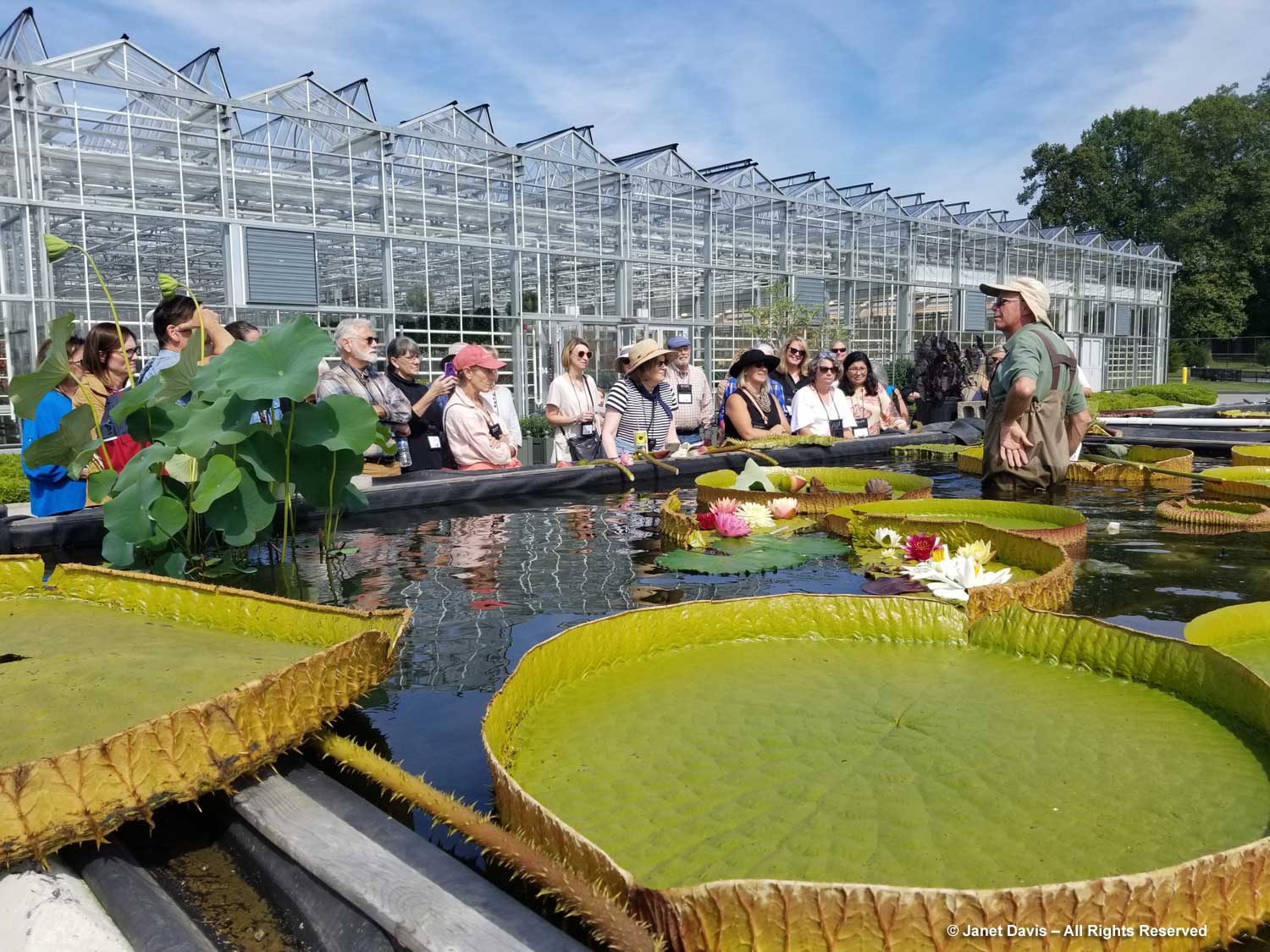
Native to the Amazon Basin, their vascular architecture creates a stiffness that enables the big leaves to float in large networks, maximizing photosynthesis. The spines deter hungry herbivores.
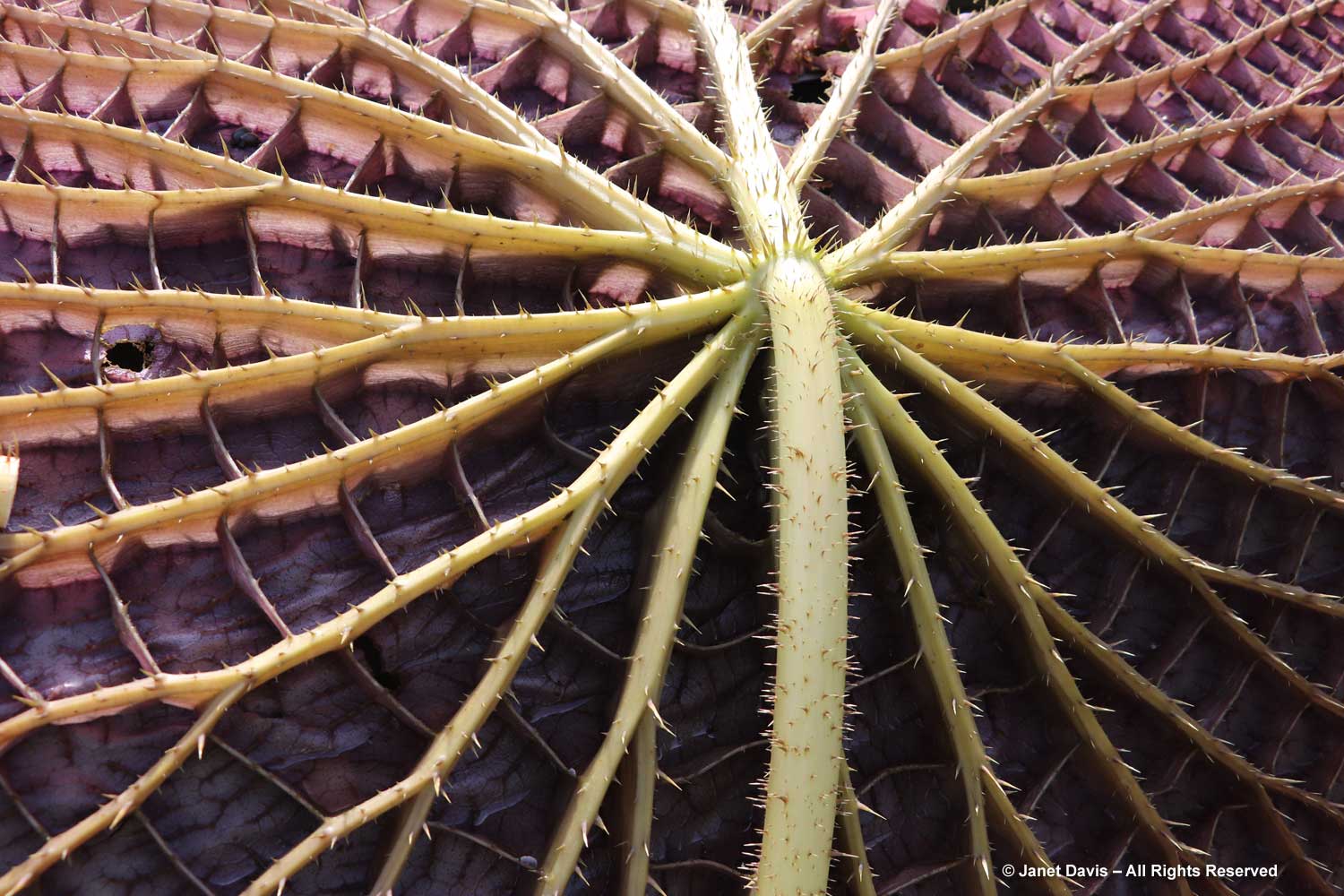
Waterlilies had been assembled in pretty aquatic arrangements.
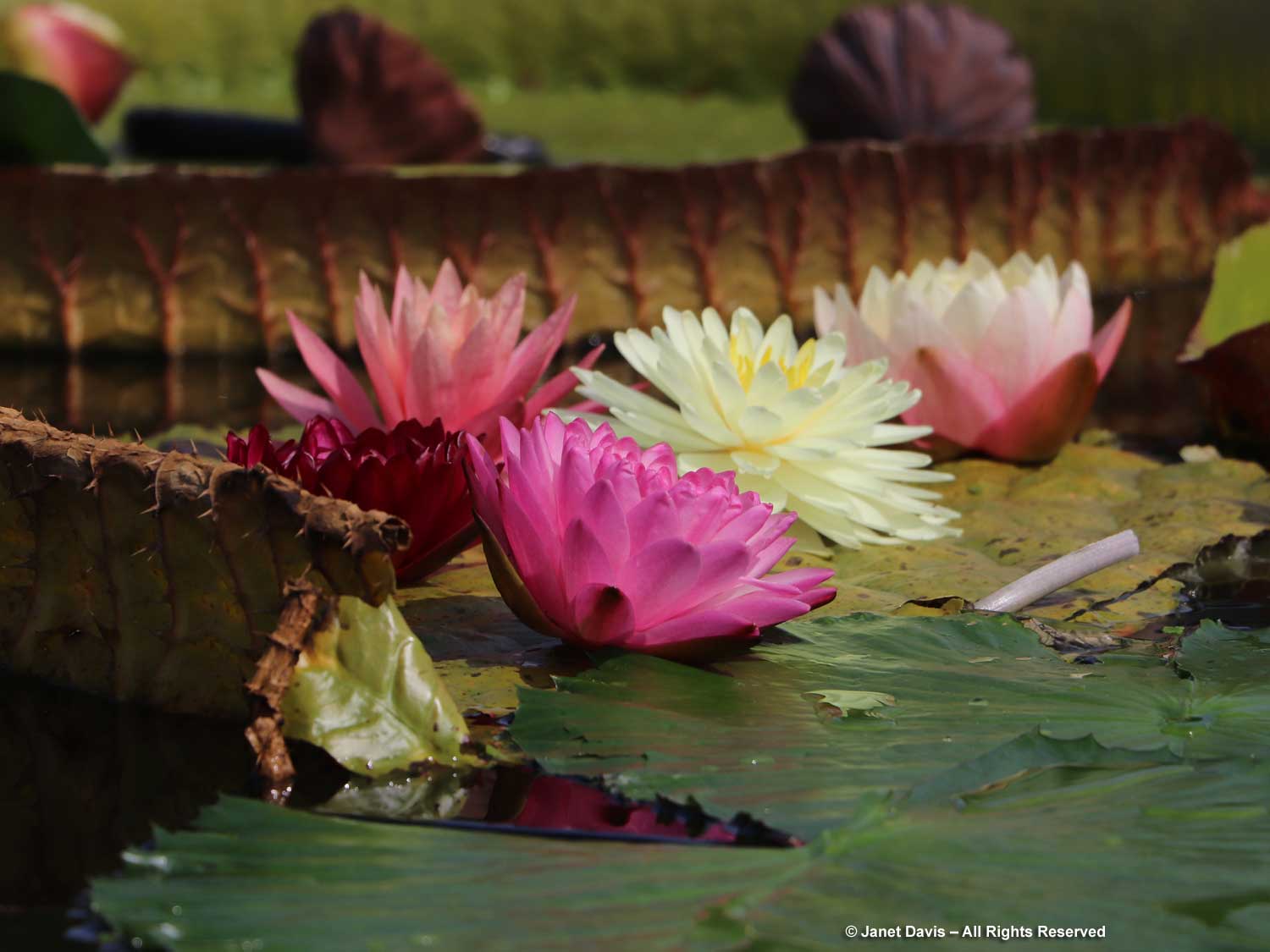
Then it was into the Visitor Center for a presentation on “Longwood Reimagined: A New Garden Experience”. It began with the garden’s mission statement….
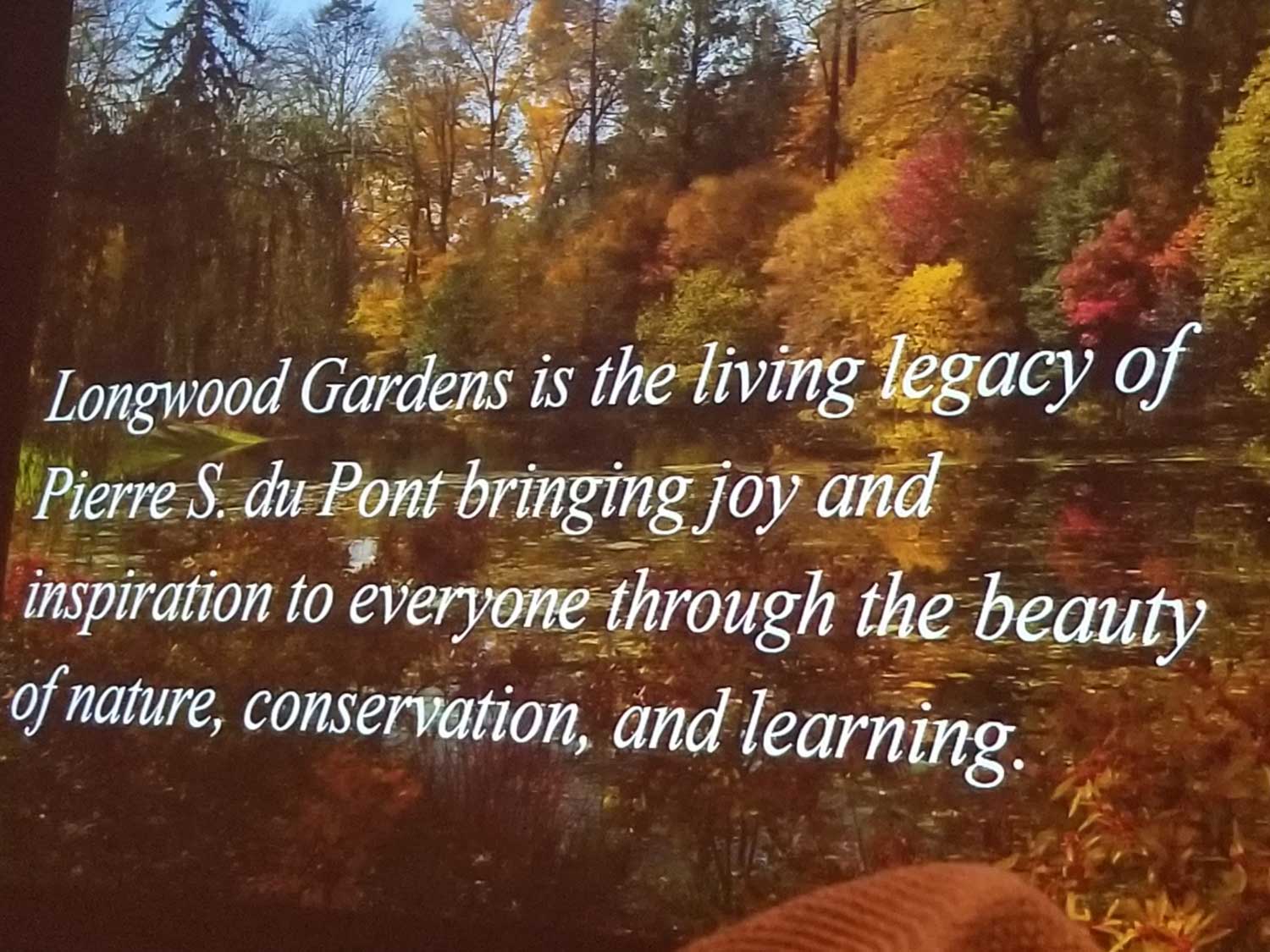
…..the legacy of Pierre Samuel du Pont (1870-1954), great-great-grandson of the founder of the chemical company DuPont, who purchased what was then a 202-acre arboretum and farm from the Peirce family in 1906. Today, Longwood ranges over 1,077 acres (436 hectares) and welcomes 1.6 million visitors yearly.
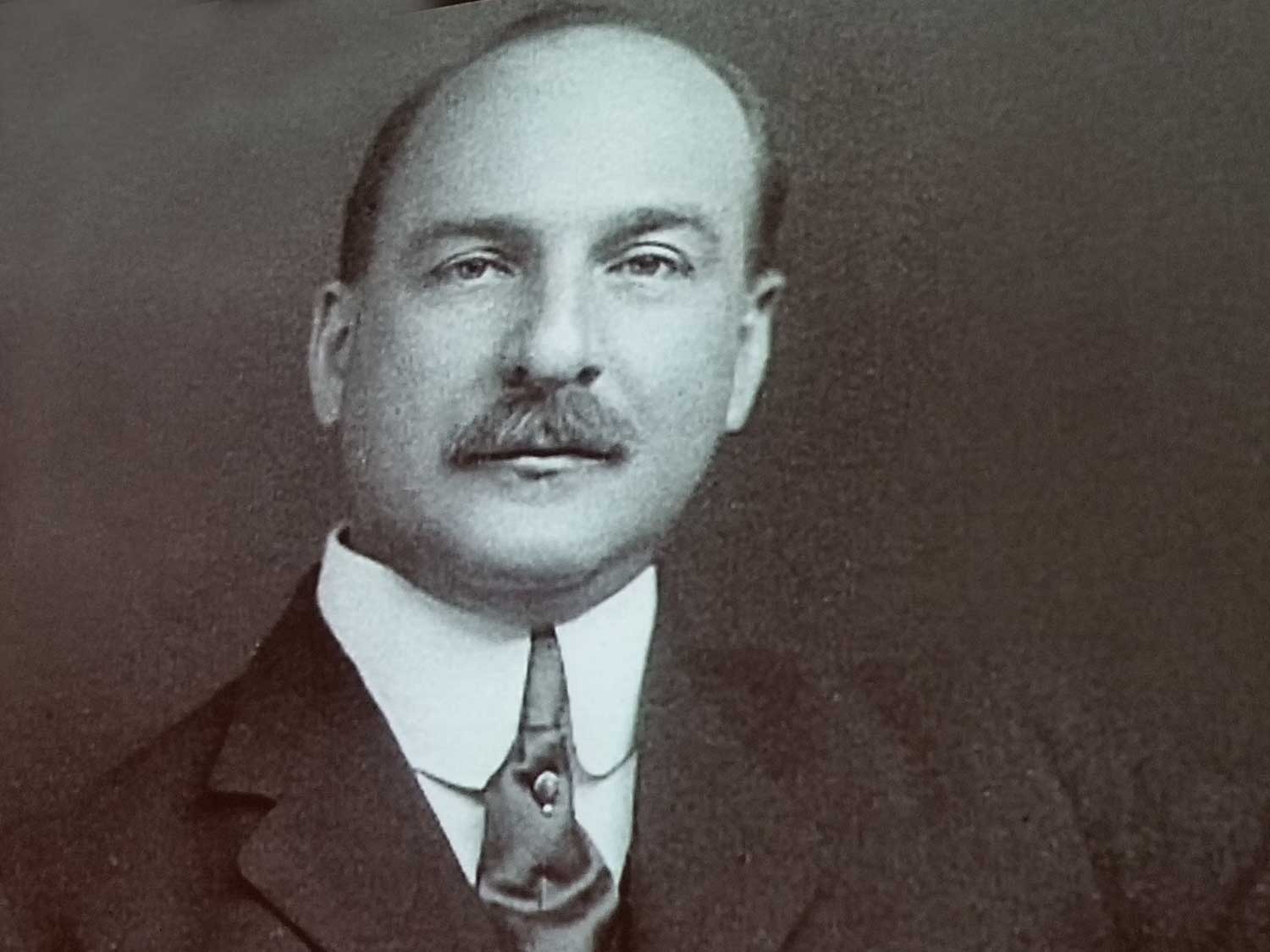
We saw artist renderings of the new football-field-sized greenhouse taking shape near the Conservatory. Opening in fall 2024, the $245 million 17-acre Reimagining project features, in Longwood’s words: “Stunning new buildings, wondrous new indoor and outdoor gardens, surprising new guest experiences, and much more await. We’re expanding our grounds, connecting them from east to west in a beautiful, unified journey of lush, formal gardens to open meadows to winding paths to breathtaking Brandywine Valley vistas.”
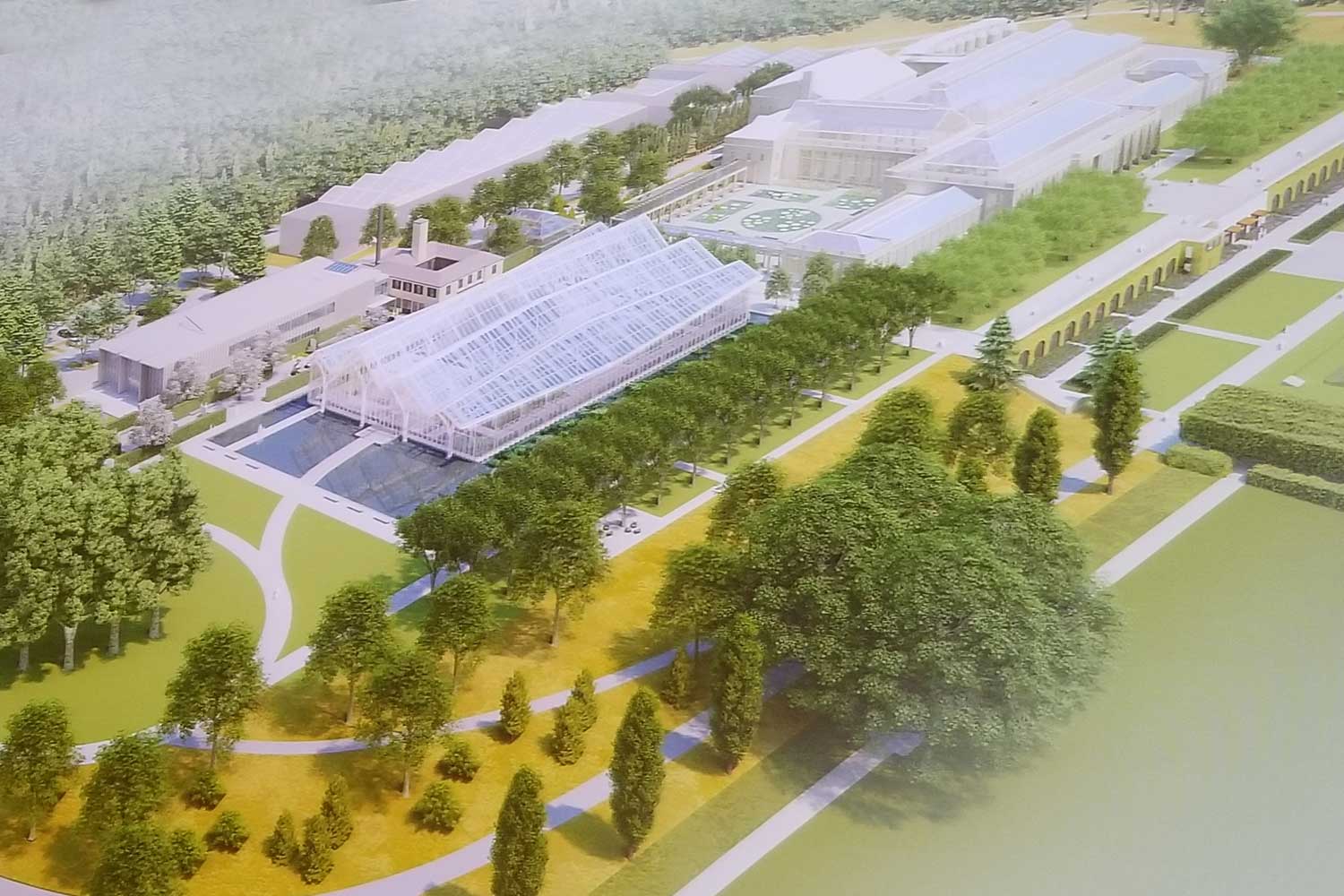
Next up was a visit to the beautiful Flower Garden, beginning with this lovely mauve-and-plum container design on a patio designed in the 1970s by the renowned California landscape architect Thomas Church.
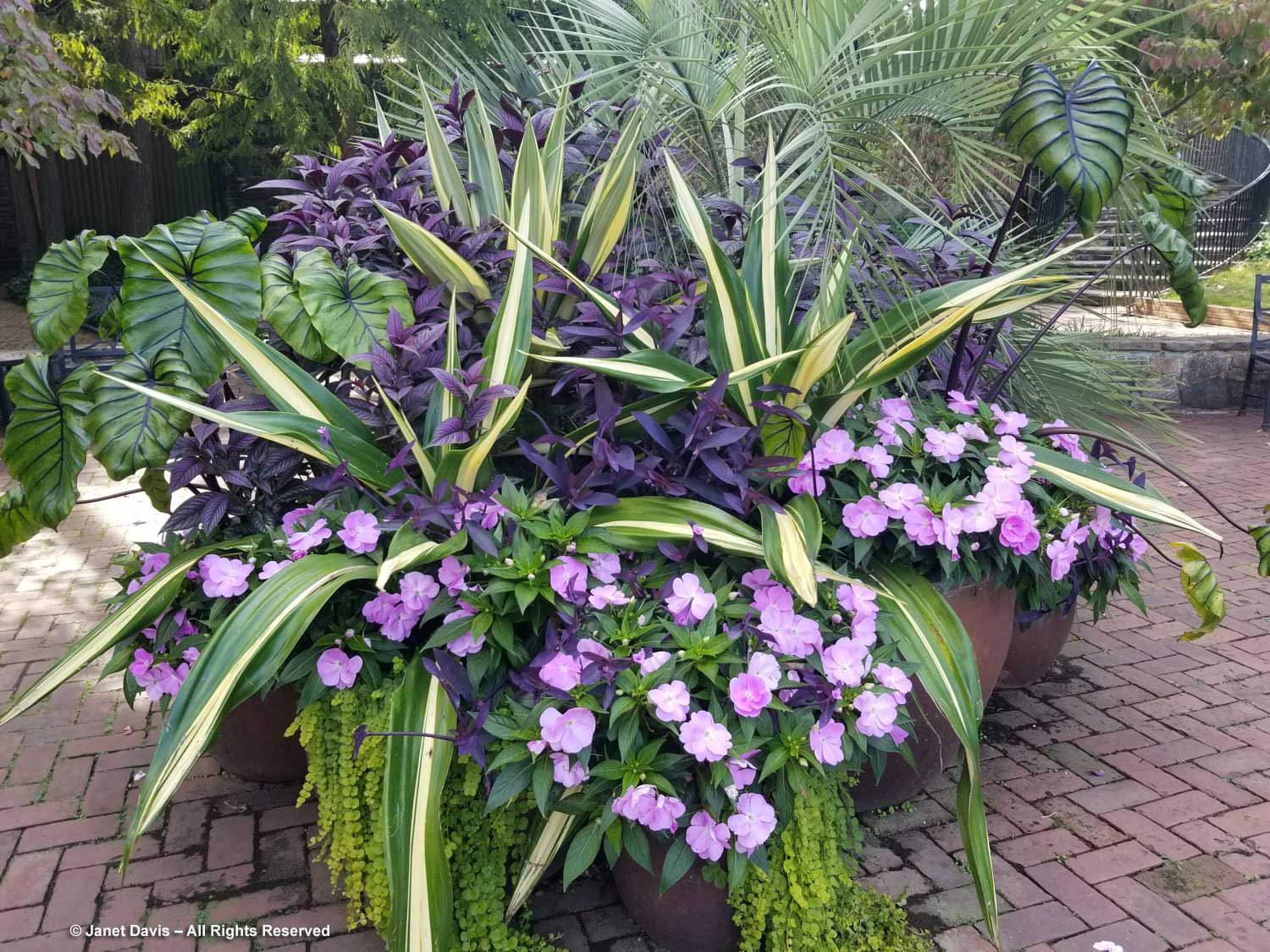
The 600-foot-long Flower Garden walk is gorgeous in September, with annuals at their peak. It was Longwood’s very first garden, designed by Pierre S. du Pont who described it as “the old-fashioned plan of straight walks and box borders at the edge of the flower beds”, using colourful plants chosen with the help of his wife Alice, now memorialized in Mandevilla ‘Alice du Pont’.
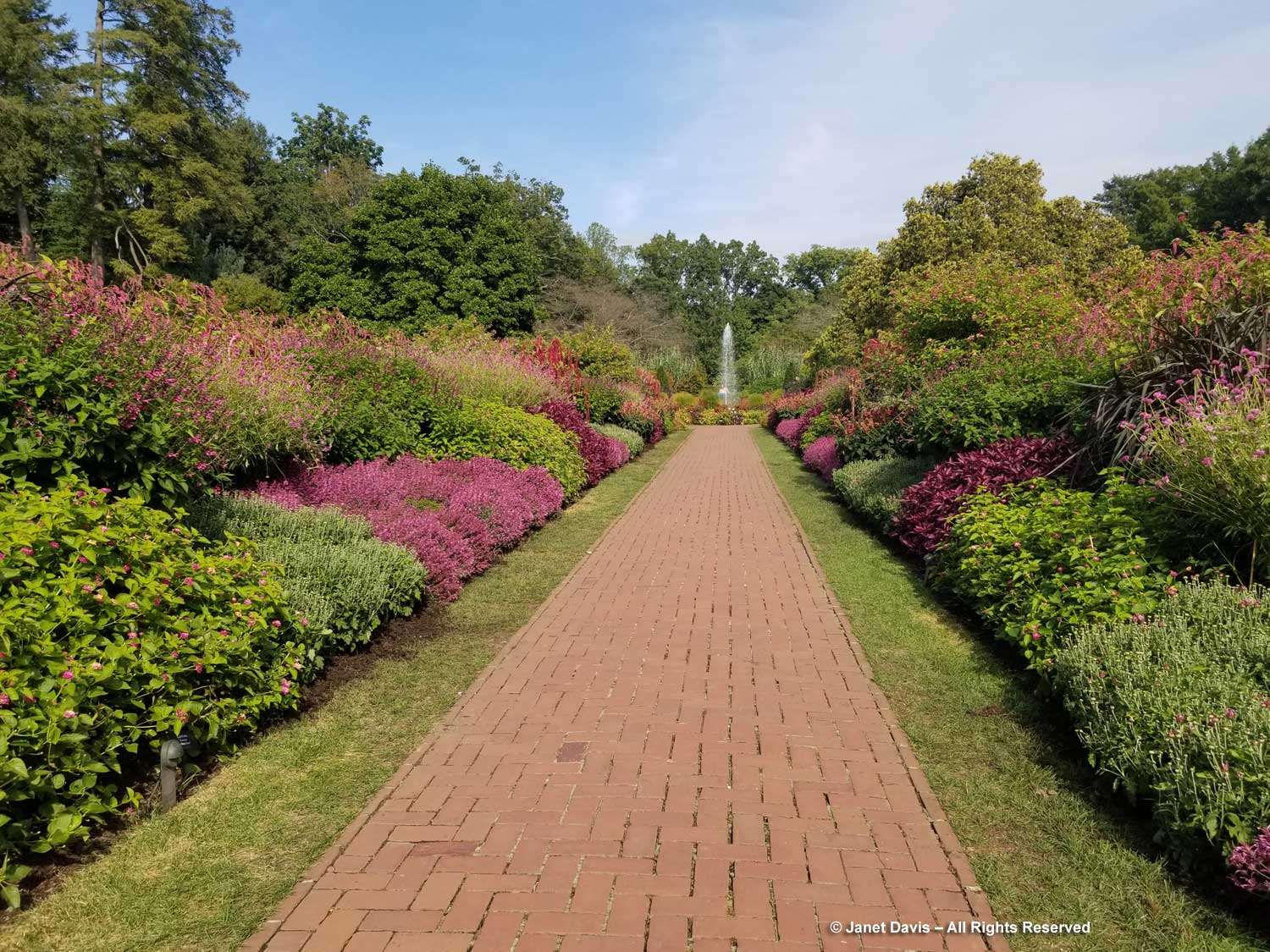
Combinations are fine-tuned to hit just the right colour note, like this Persian shield (Strobilanthes dyerianus) surrounded by globe amaranath (Gomphrena globosa ‘Ping Pong Purple‘).
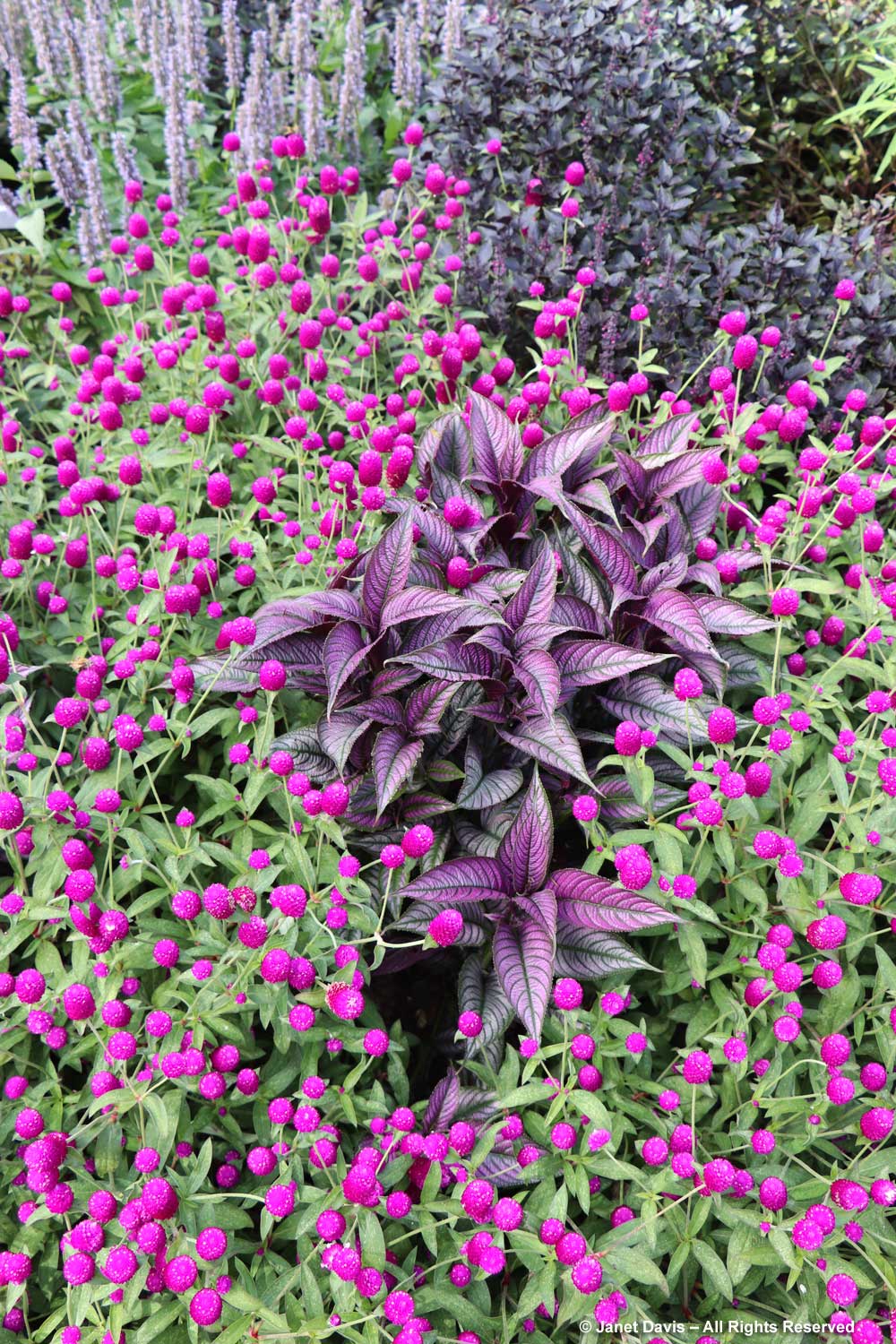
The fuzzy, pink flowers of Bolivian sage (Salvia oxyphora) were attracting lots of bees.
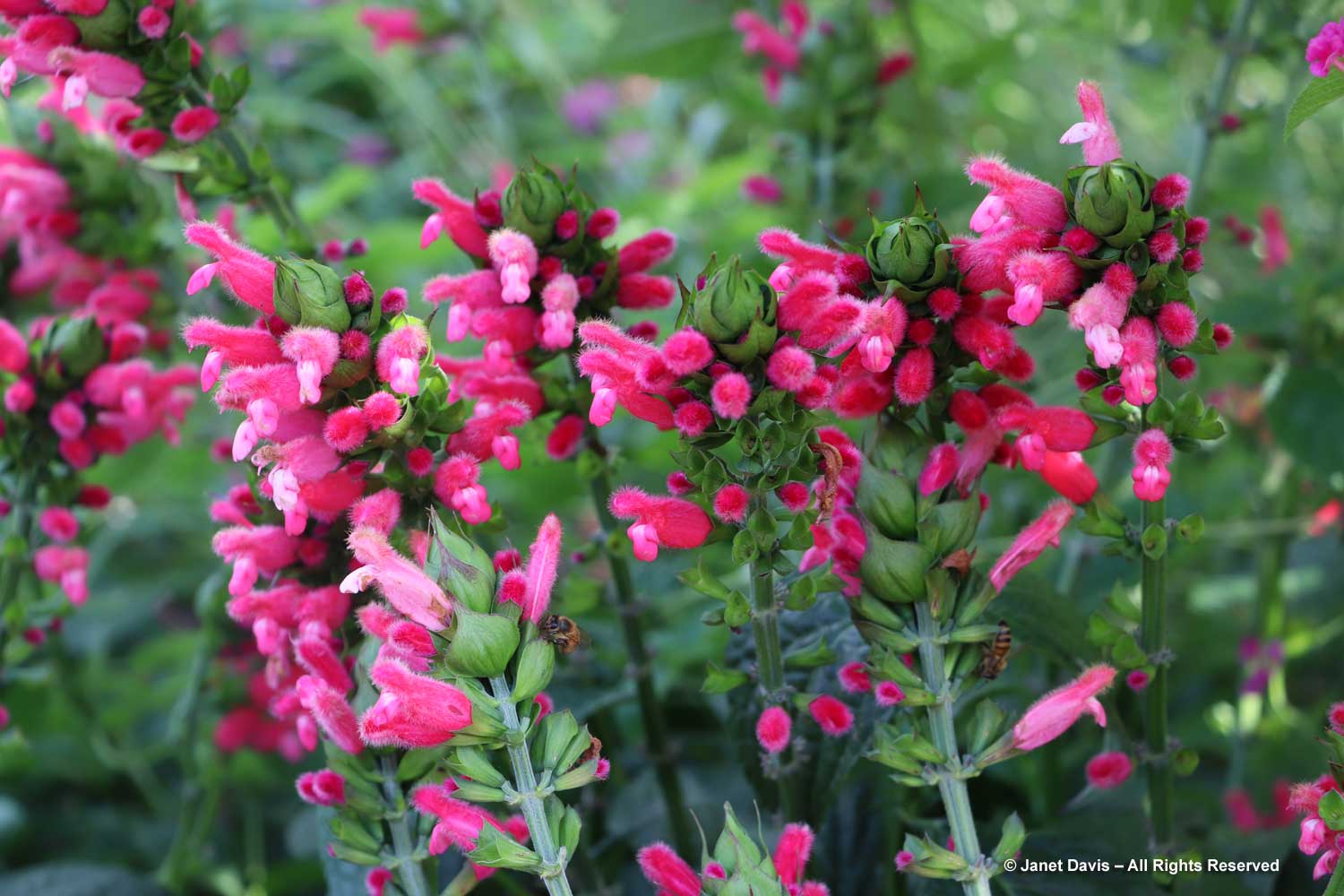
I loved this soft combination of peach zinnias and bronze carex grass.
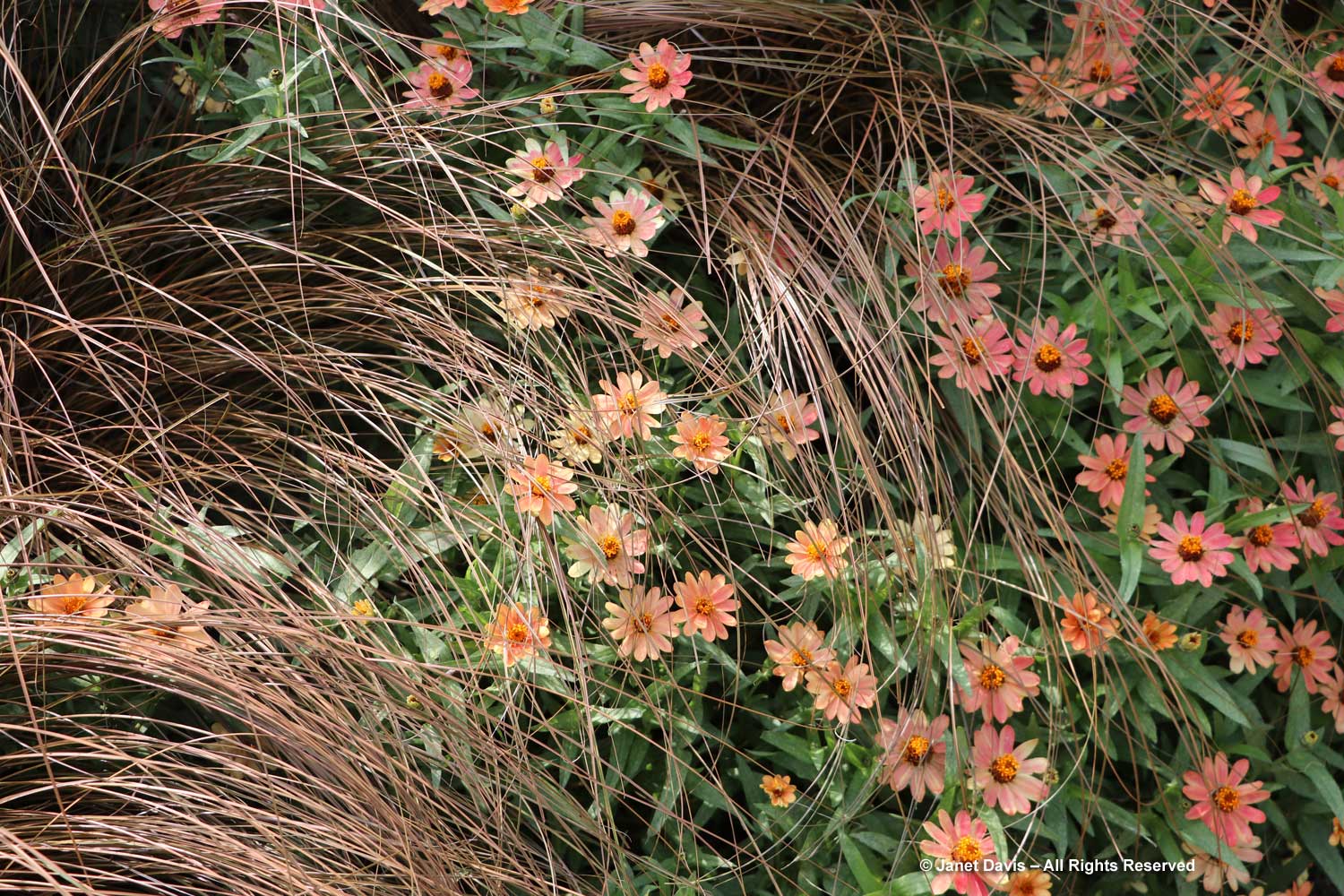
Stairs led down to Pierre du Pont’s “Compartment Gardens”, including the 1908 Square Fountain surrounded by luscious coleus and begonia plants, among others. The stunning chartreuse coleus is Flame Thrower™ Salsa Verde.
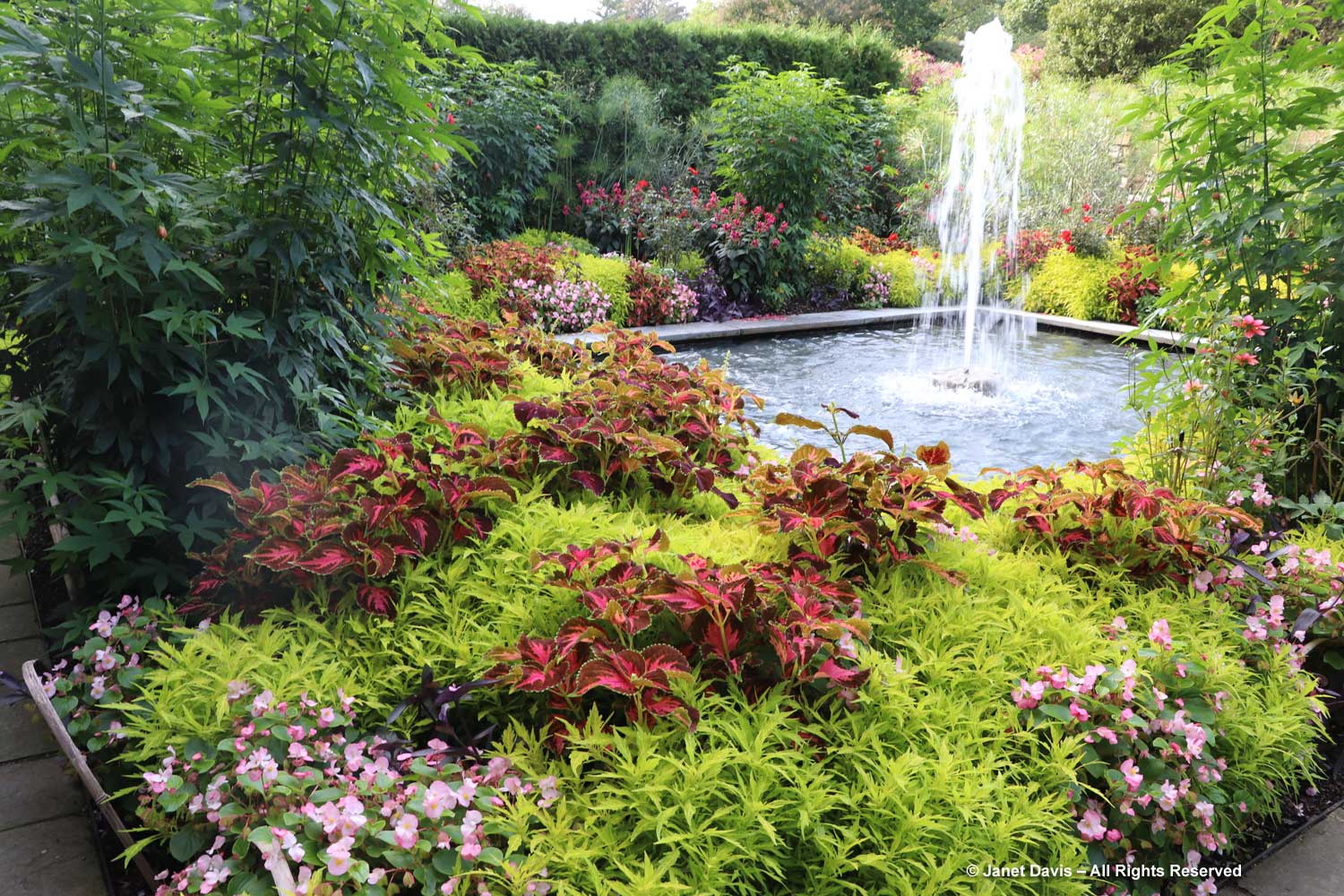
Though the peony garden was out-of-season, there were a few pretty combinations for late summer, like the pink Japanese anemone with Ageratum houstonianum, below.
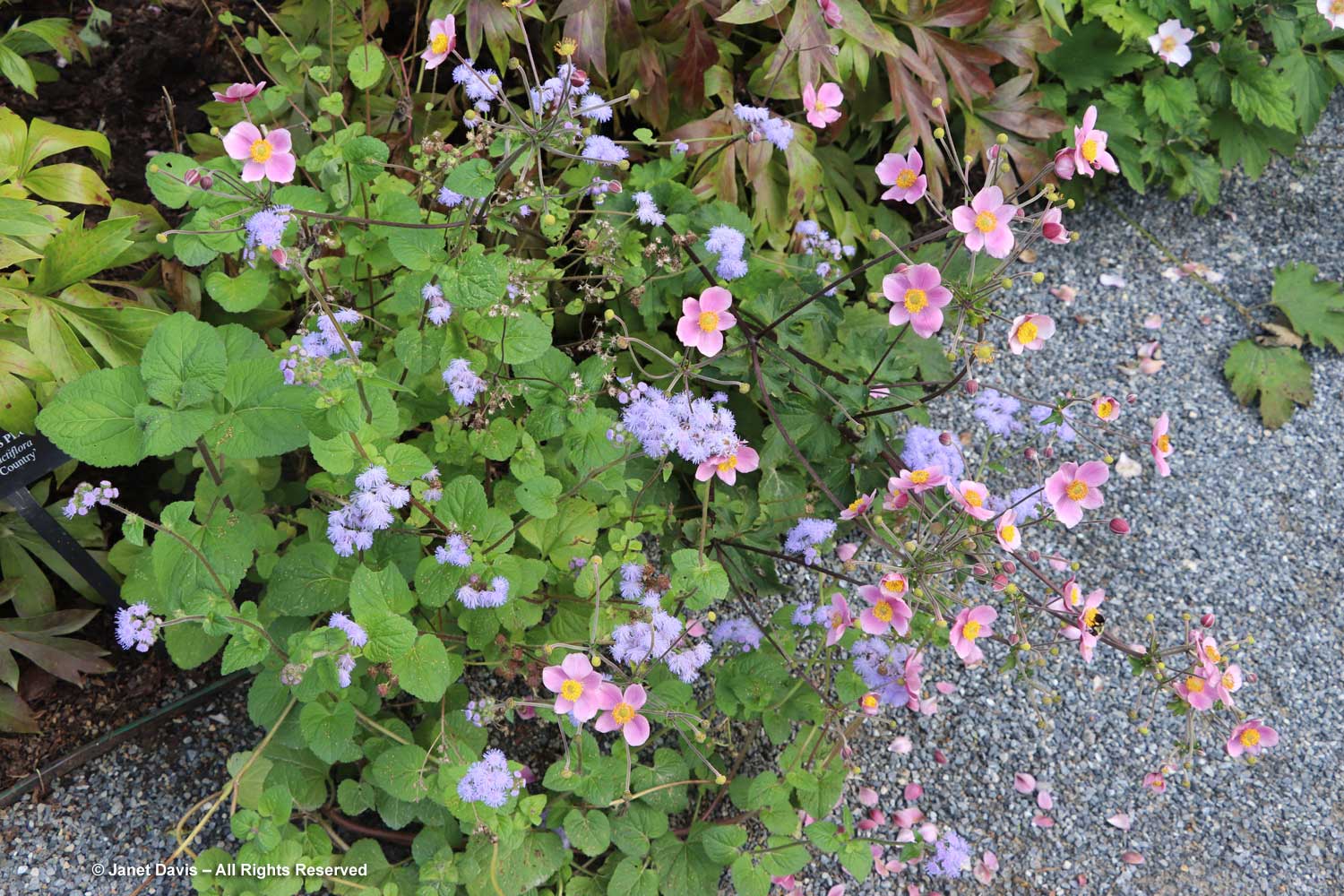
Handsome aquamarine urns punctuated this long foliage border, backed by a tall arborvitae hedge.
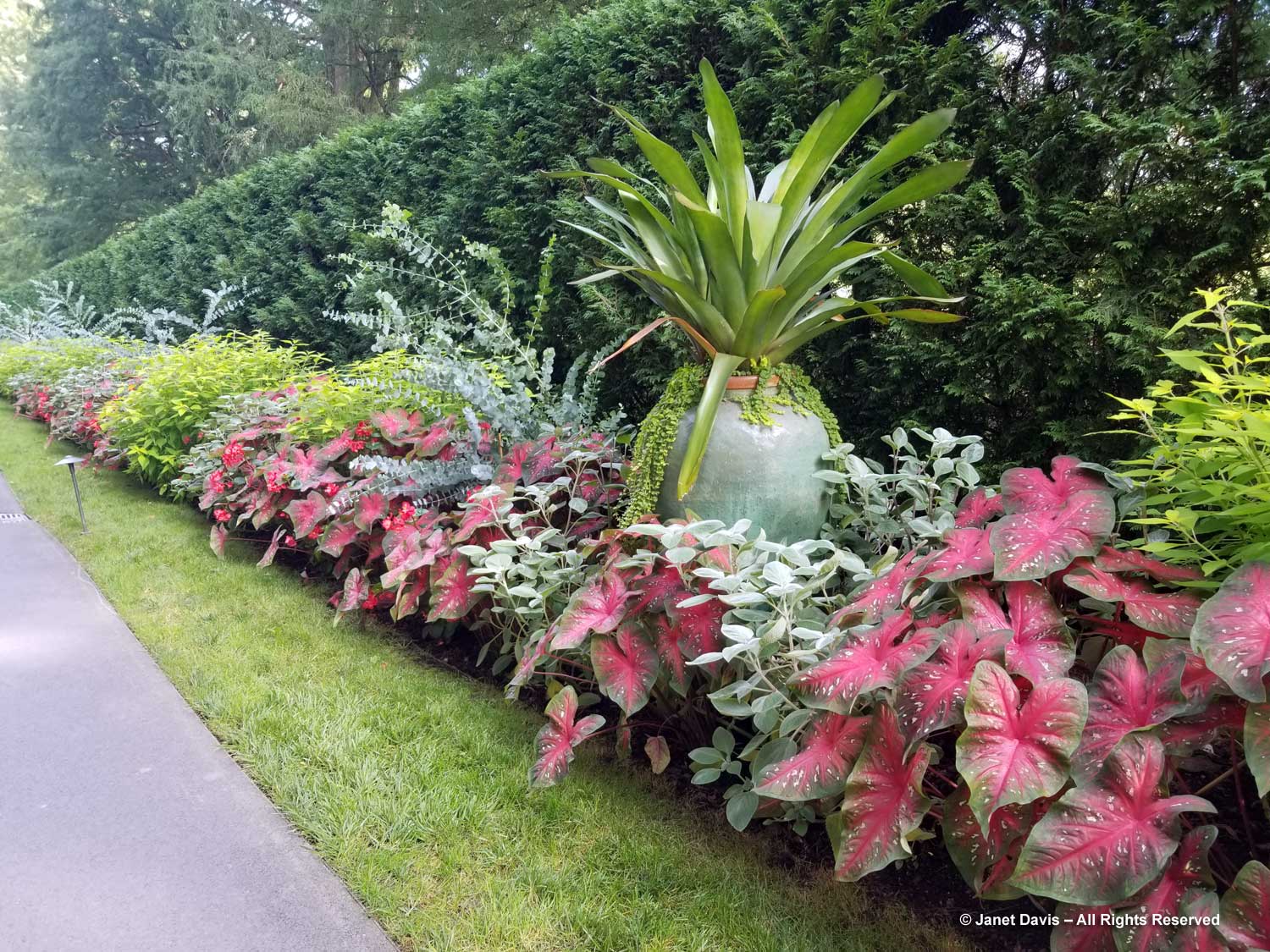
I hurried up from the Flower Garden past the Peirce-DuPont House (1730) towards the Meadow, but stopped under a native franklinia tree (F. alatamaha) to admire the few remaining blossoms. Many of Longwood’s towering trees are part of a rich arboretum, established in the late 18th century by the sons of William Peirce, who acquired 402 acres in 1700 from agents of William Penn (1644-1718). Penn was an English-born Quaker who made treaties with the region’s Lenape Native Americans in order to develop the property he acquired from King Charles II, eventually naming it Pennsylvania. In 1682, the first Pennsylvania General Assembly was held. Penn would later found Philadelphia. As for franklinia, it was discovered growing on the Alatamaha River in 1765 by John and William Bartram; the latter collected seed a decade later and named the tree for his father’s friend, Benjamin Franklin.
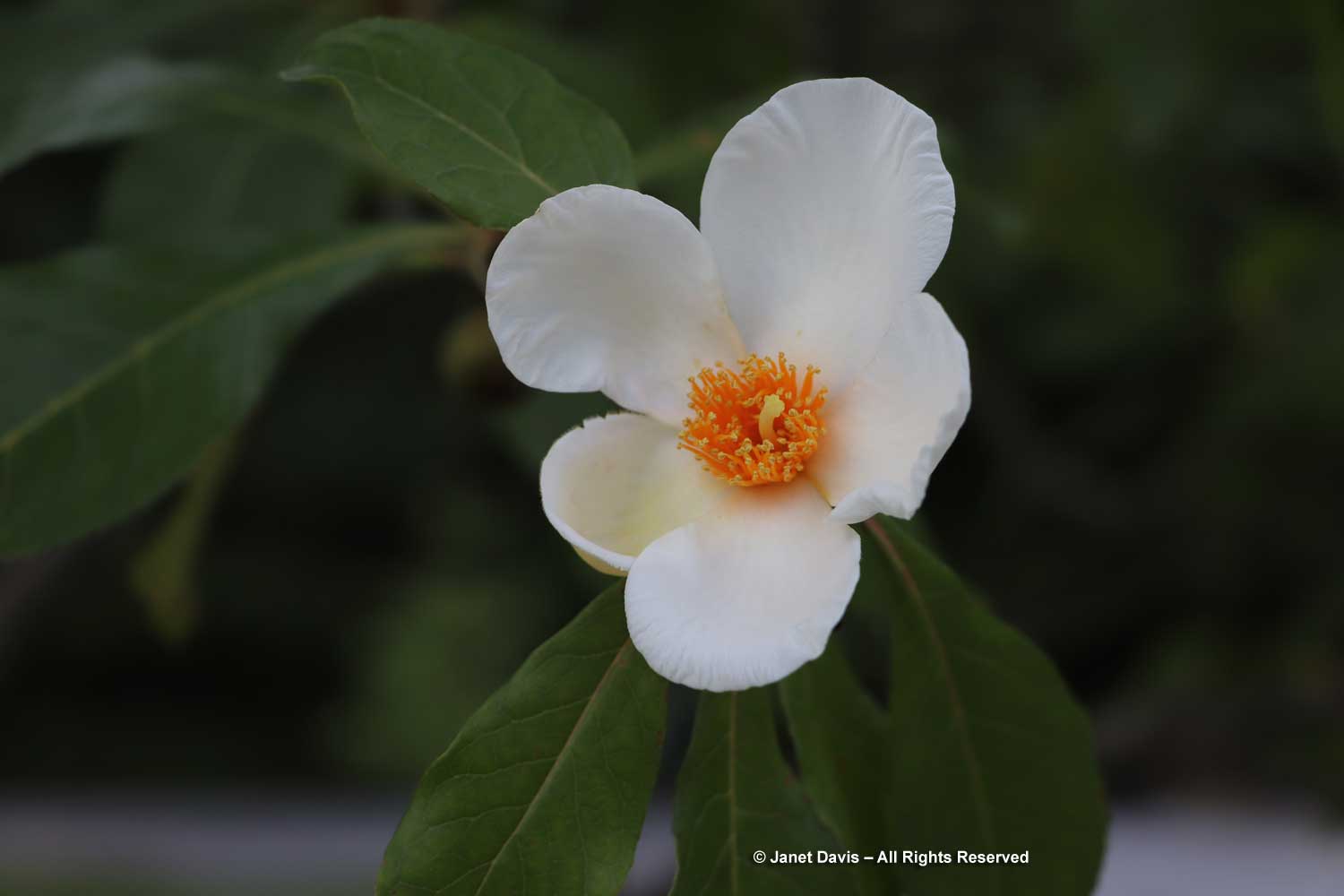
Then it was down the gently curving boardwalk through Peirce’s Woods….
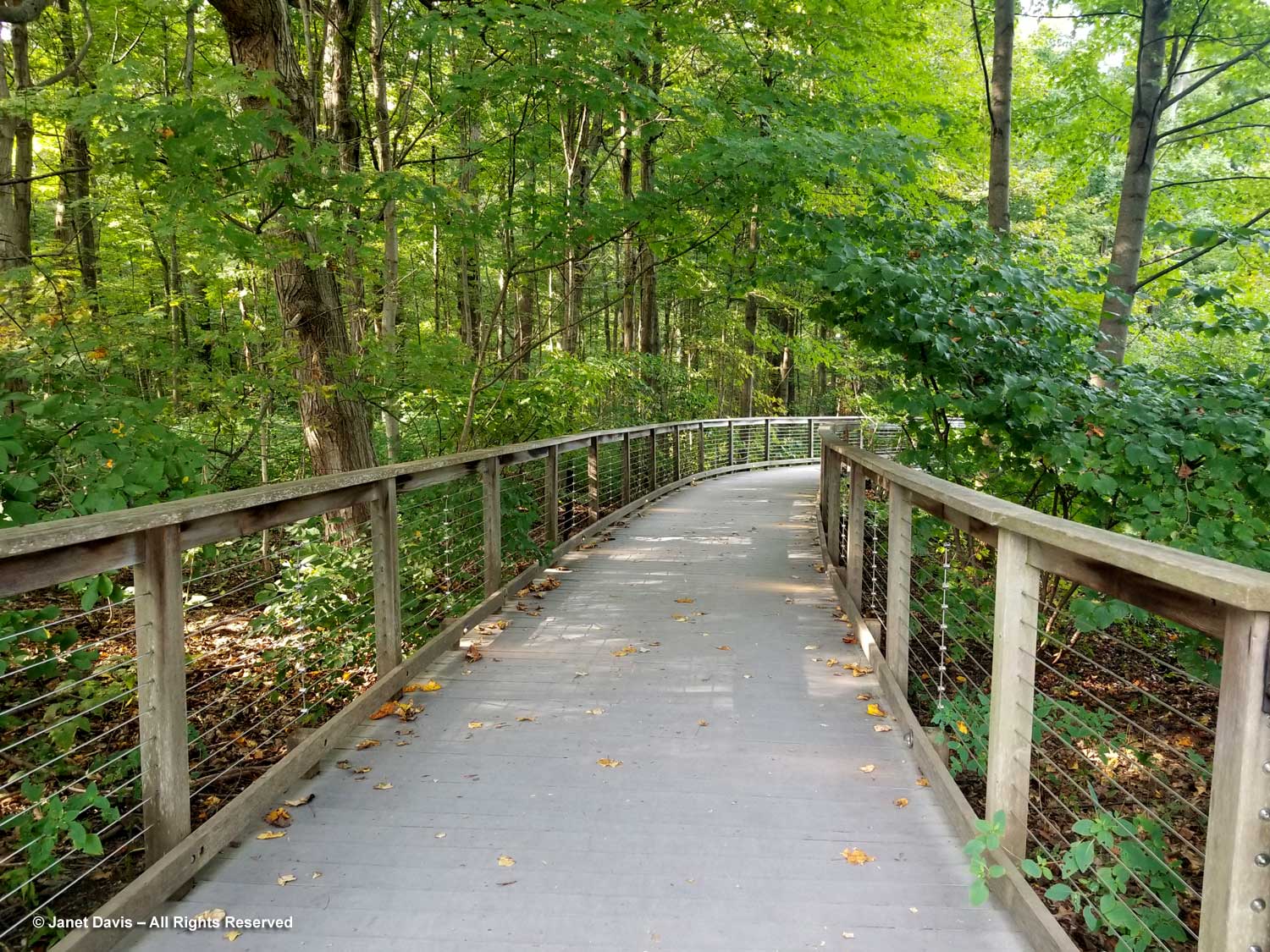
…. to the native plant meadow featuring late summer goldenrod, white snakeroot (Ageratina altissima), and asters, as well as the seedheads of wild beebalm and Joe Pye weed. (I turned on my Merlin app here to identify the gray catbirds calling in the trees nearby).
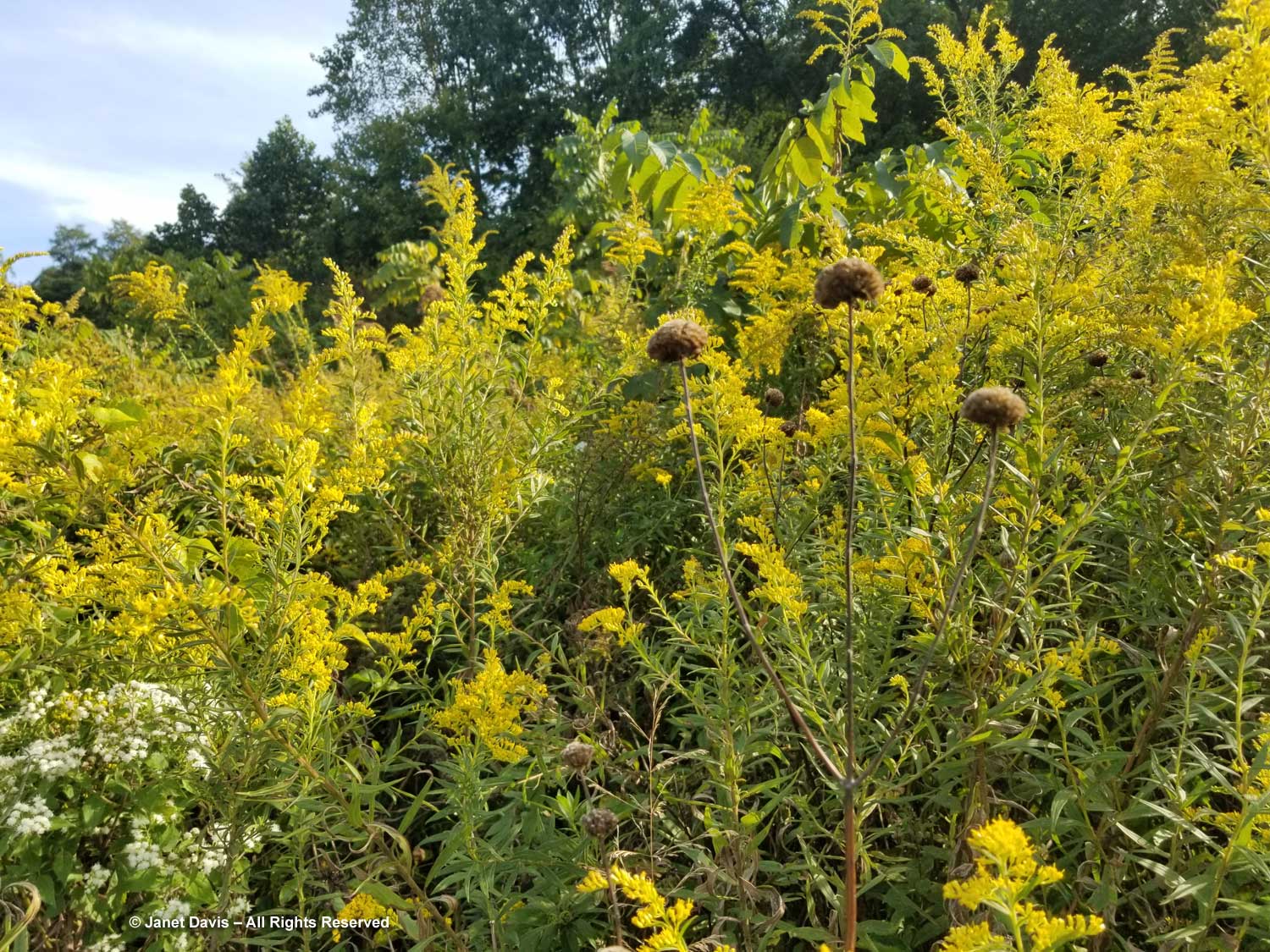
In the shade, orange touch-me-not (Impatiens capensis) was attracting bumble bees.
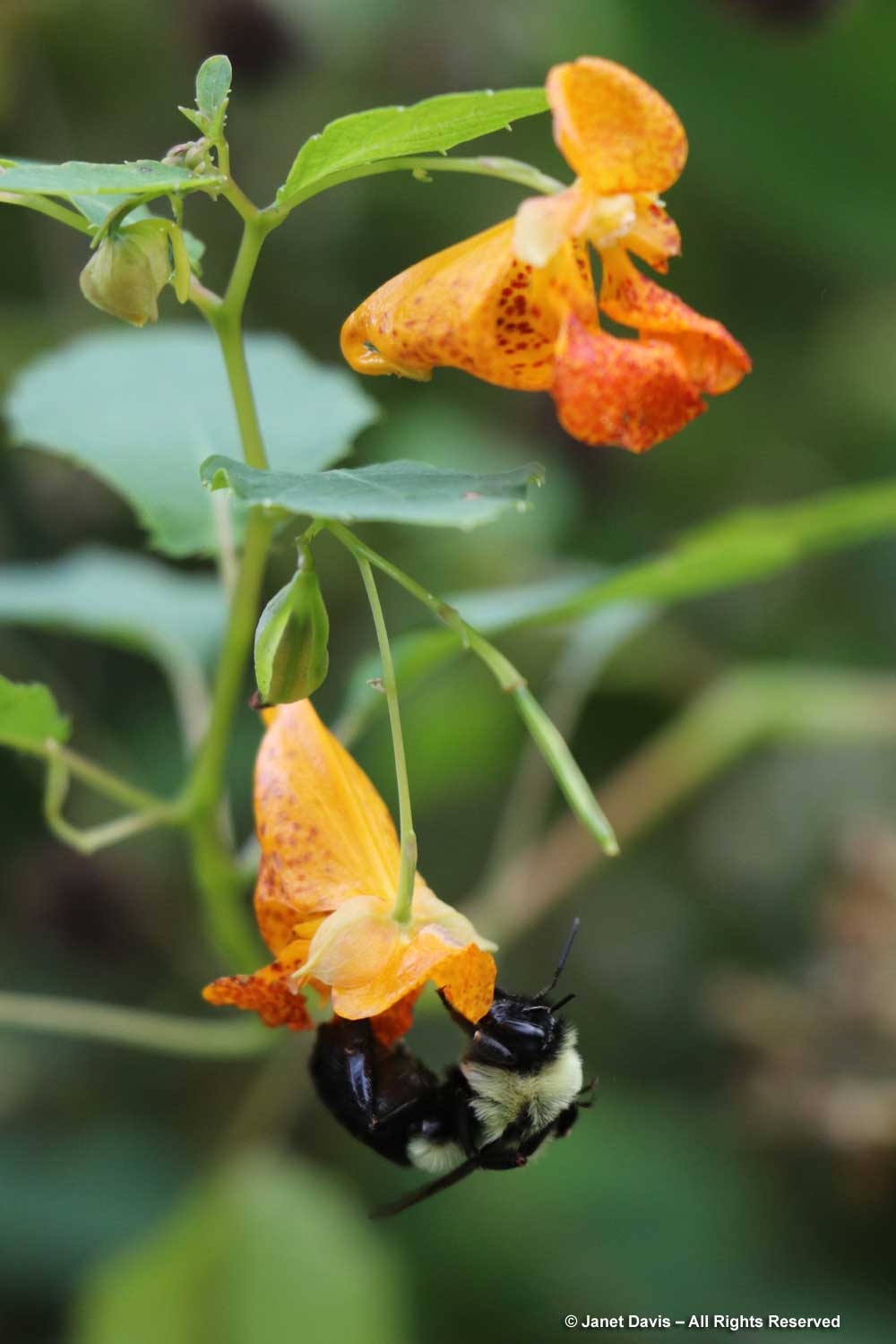
Now it was time to visit the 4.5 acre (1.8 hectare) Conservatory (1919), with its fine collection of 4,600 tropicals, orchids, desert and Mediterranean plants and trees, featured in 17 theme gardens, many containing fountains or pools.
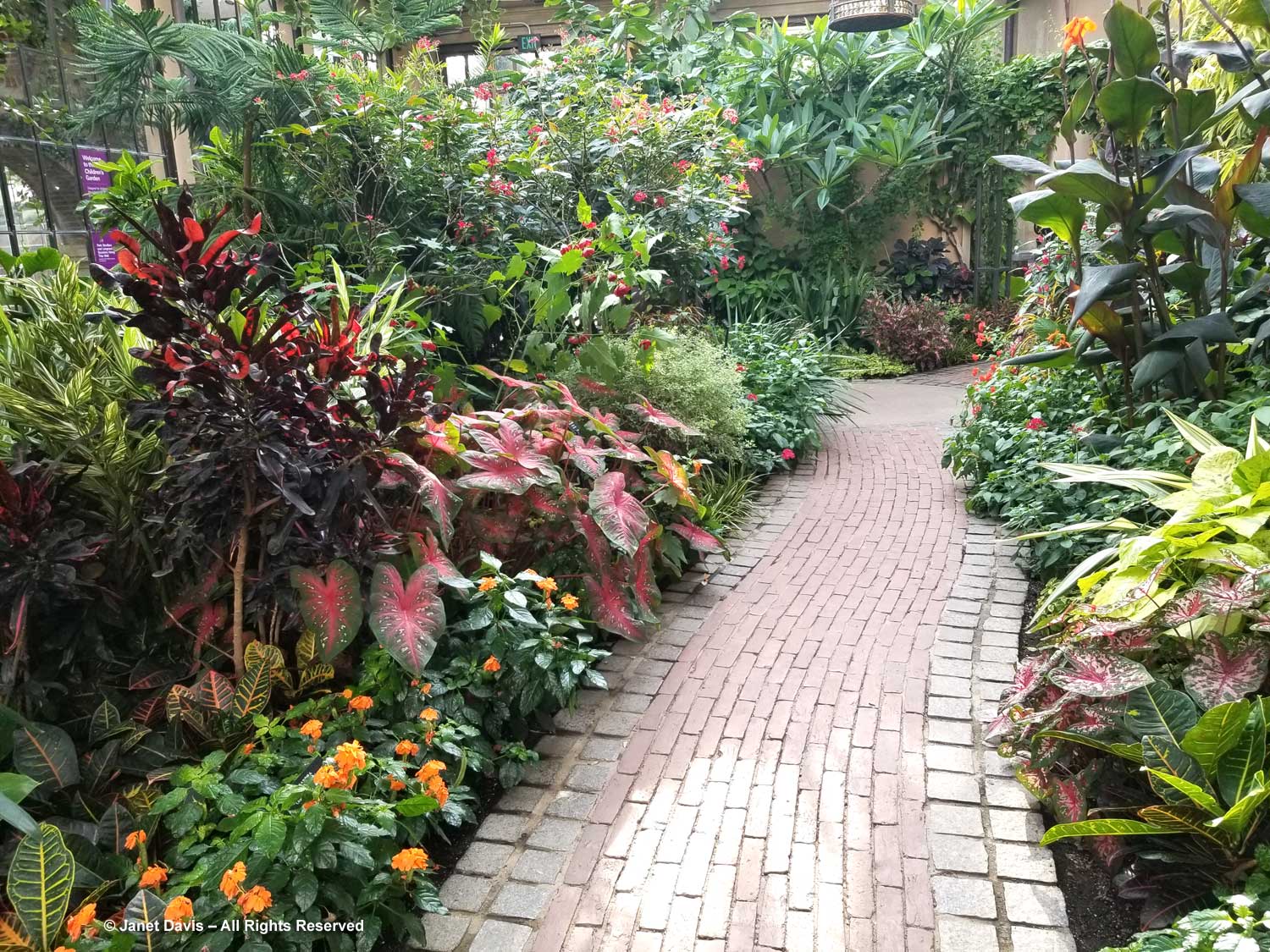
I loved these Siam tulips (Curcuma alismatifolia)….
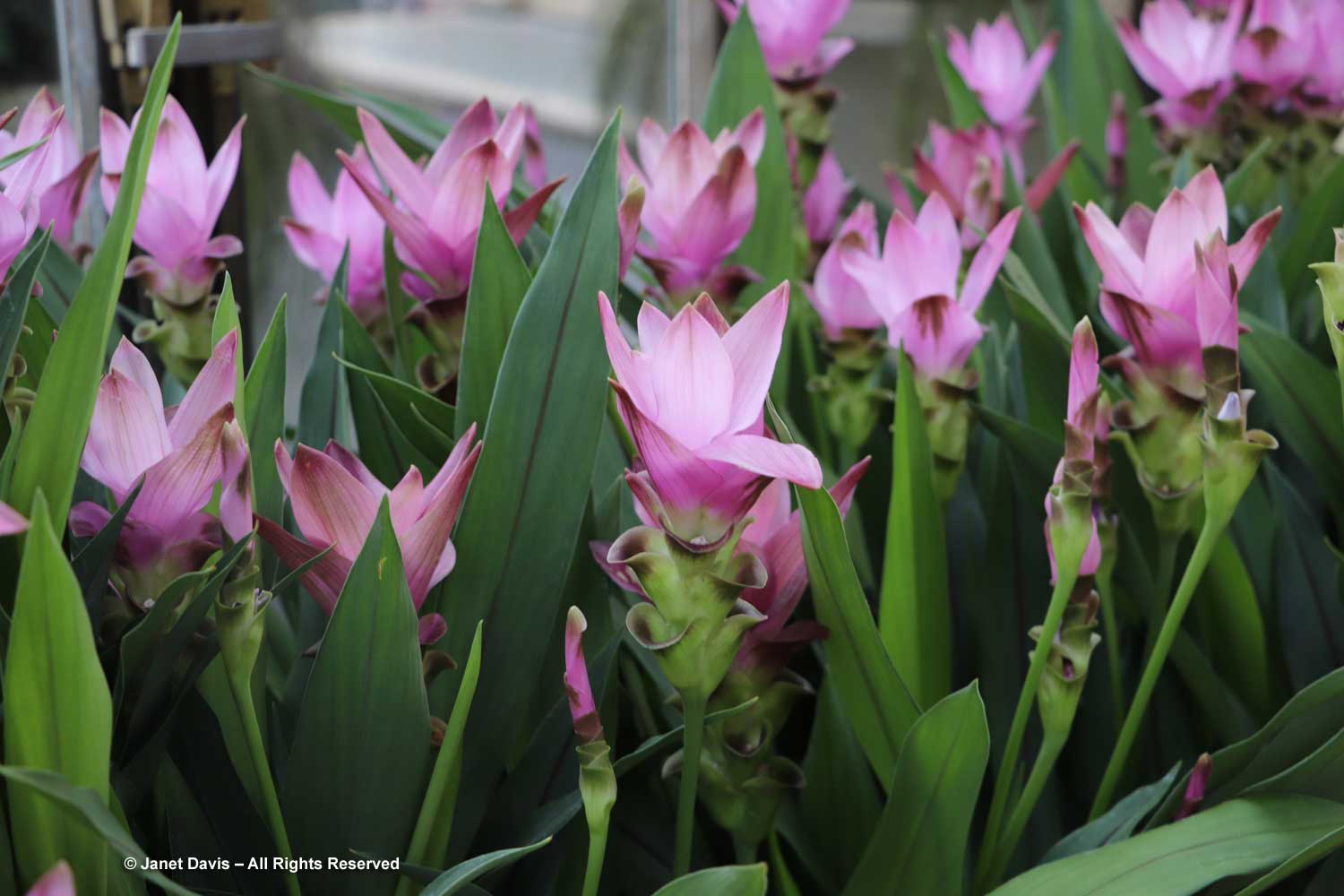
….. and this striking combination of Caladium ‘Carolyn Whorton’ with orange Bouvardia ternifolia.
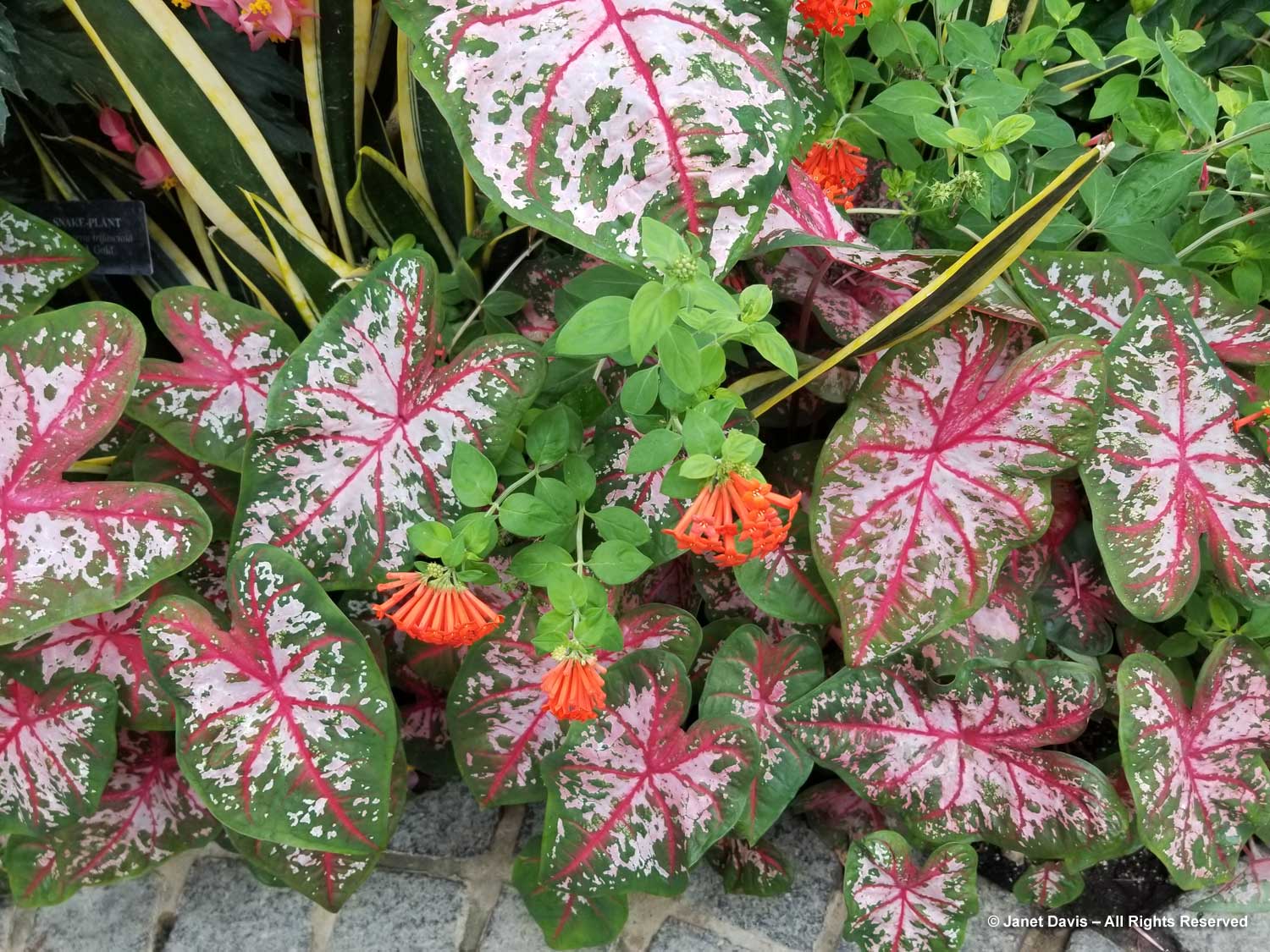
Pink anthuriums (‘Anthewuch’) and variegated sansevierias were growing amongst cycads.
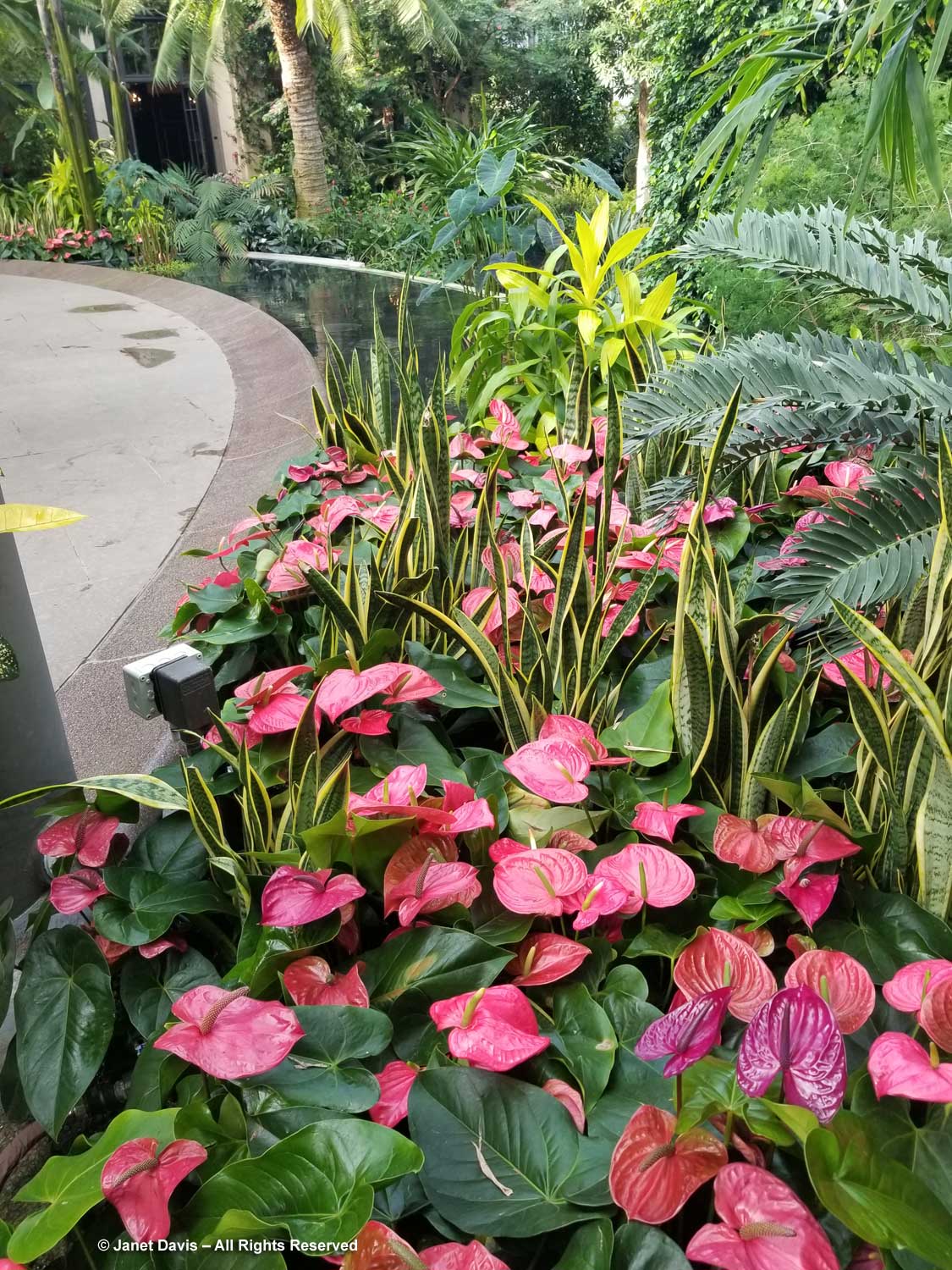
This pool featured a waterfall.
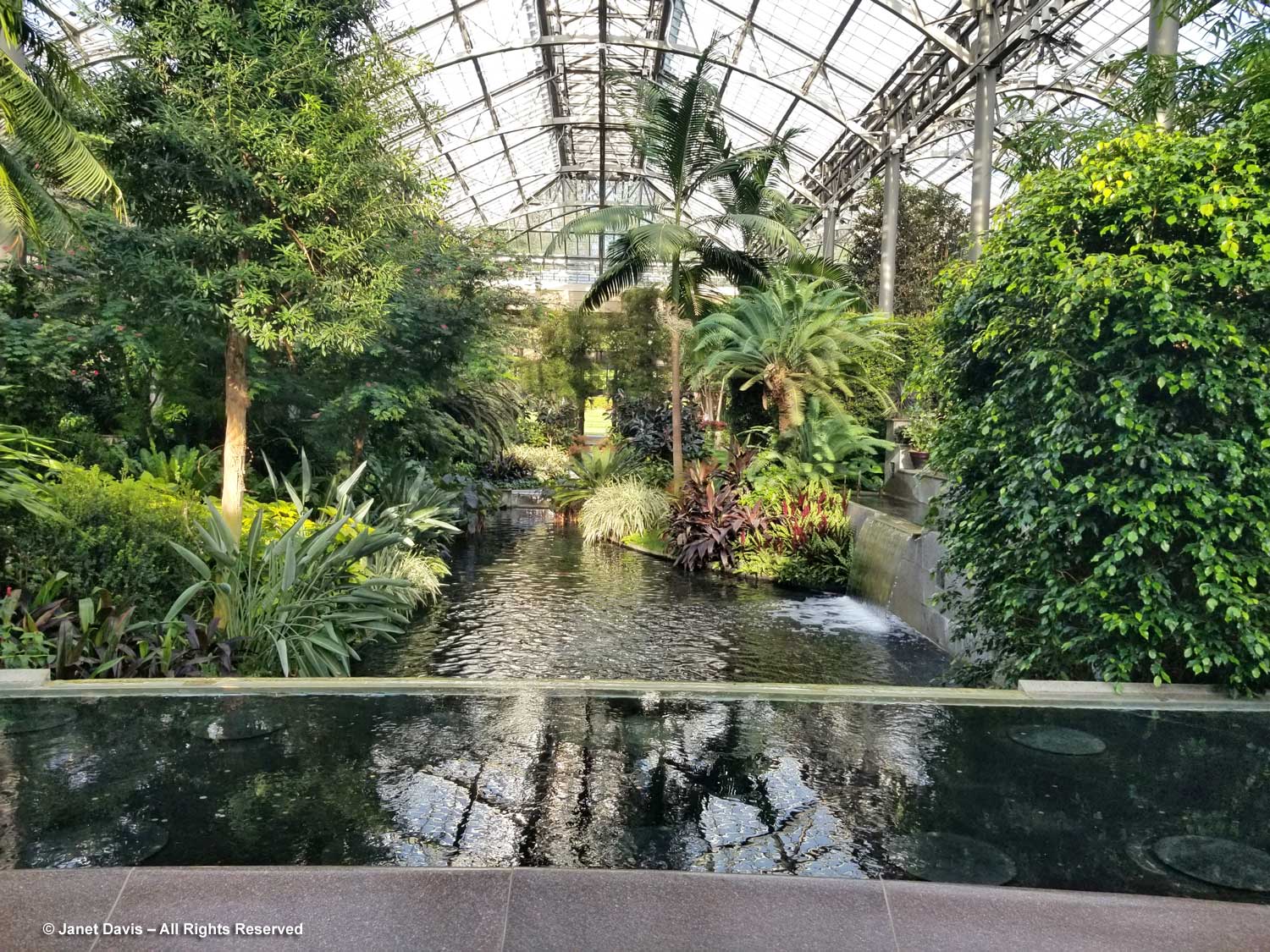
And this one had fountains seemingly emerging from ferns.
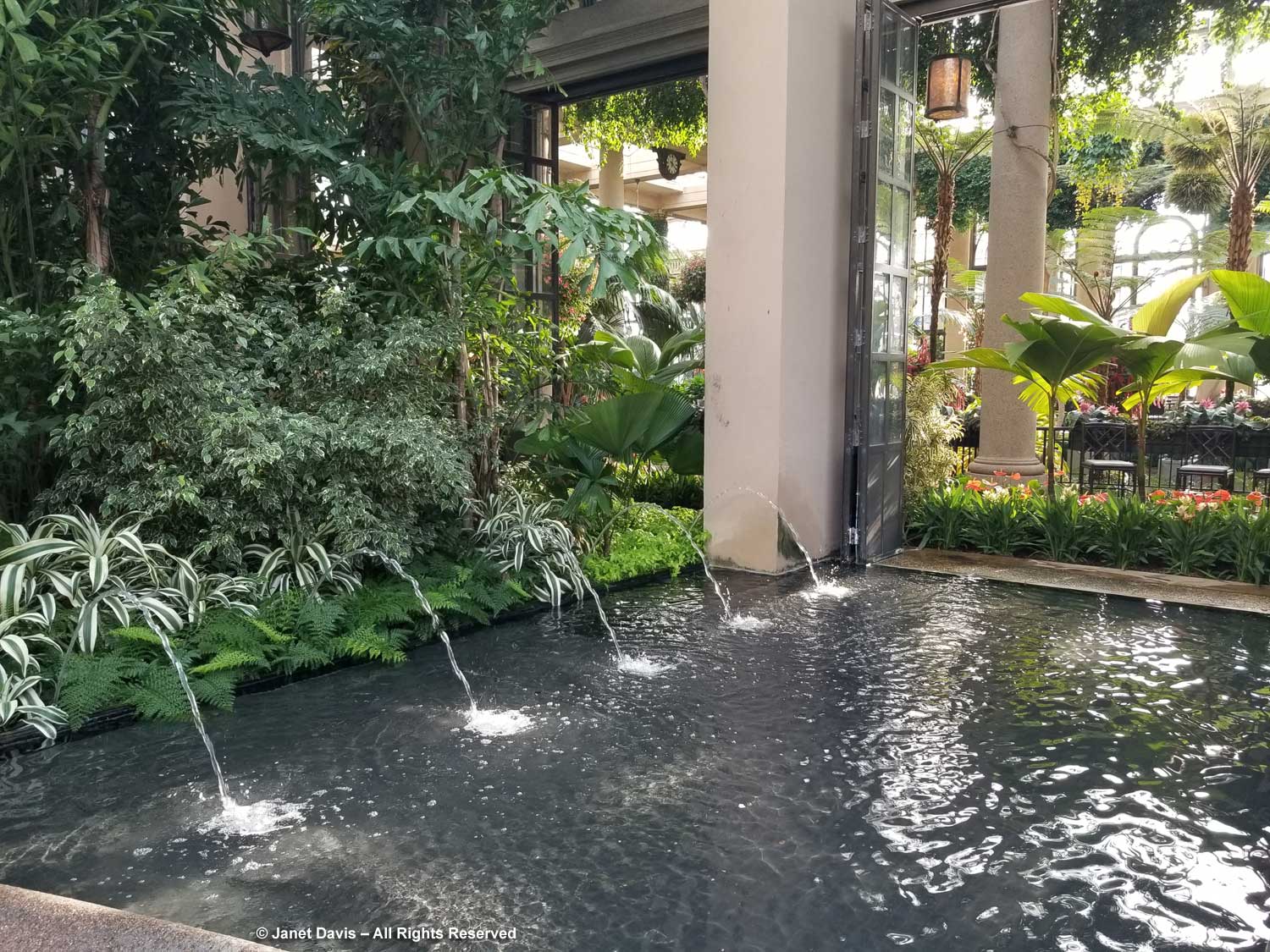
Potted tree ferns (Cyathea cooperi) occupy handsome Versailles tubs in the Fern Floor hall, all reflected in the shallow water. However, when events are held in this hall the water is drained.
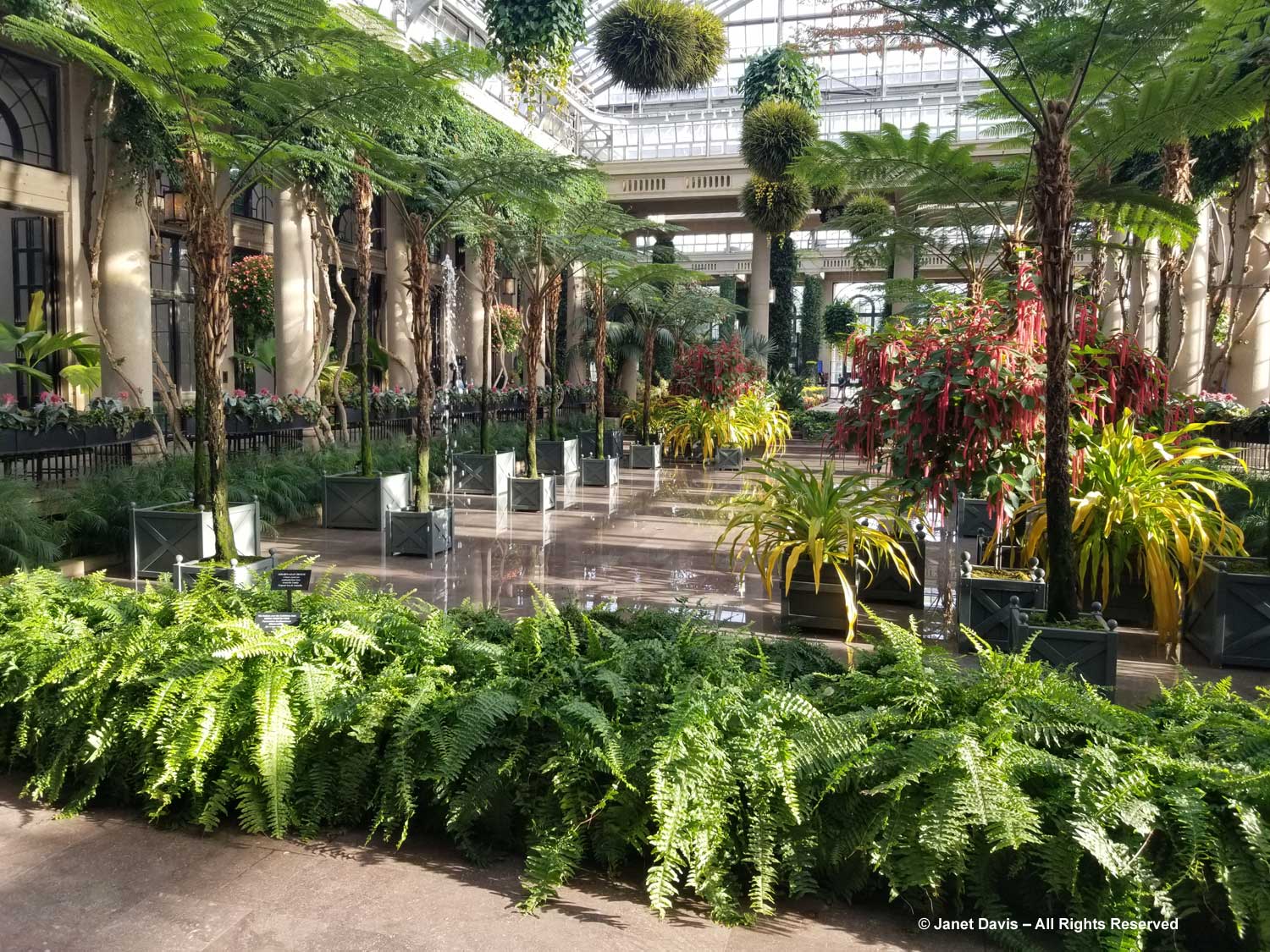
Windowboxes containing Aechmea fasciata flank the Fern Floor.
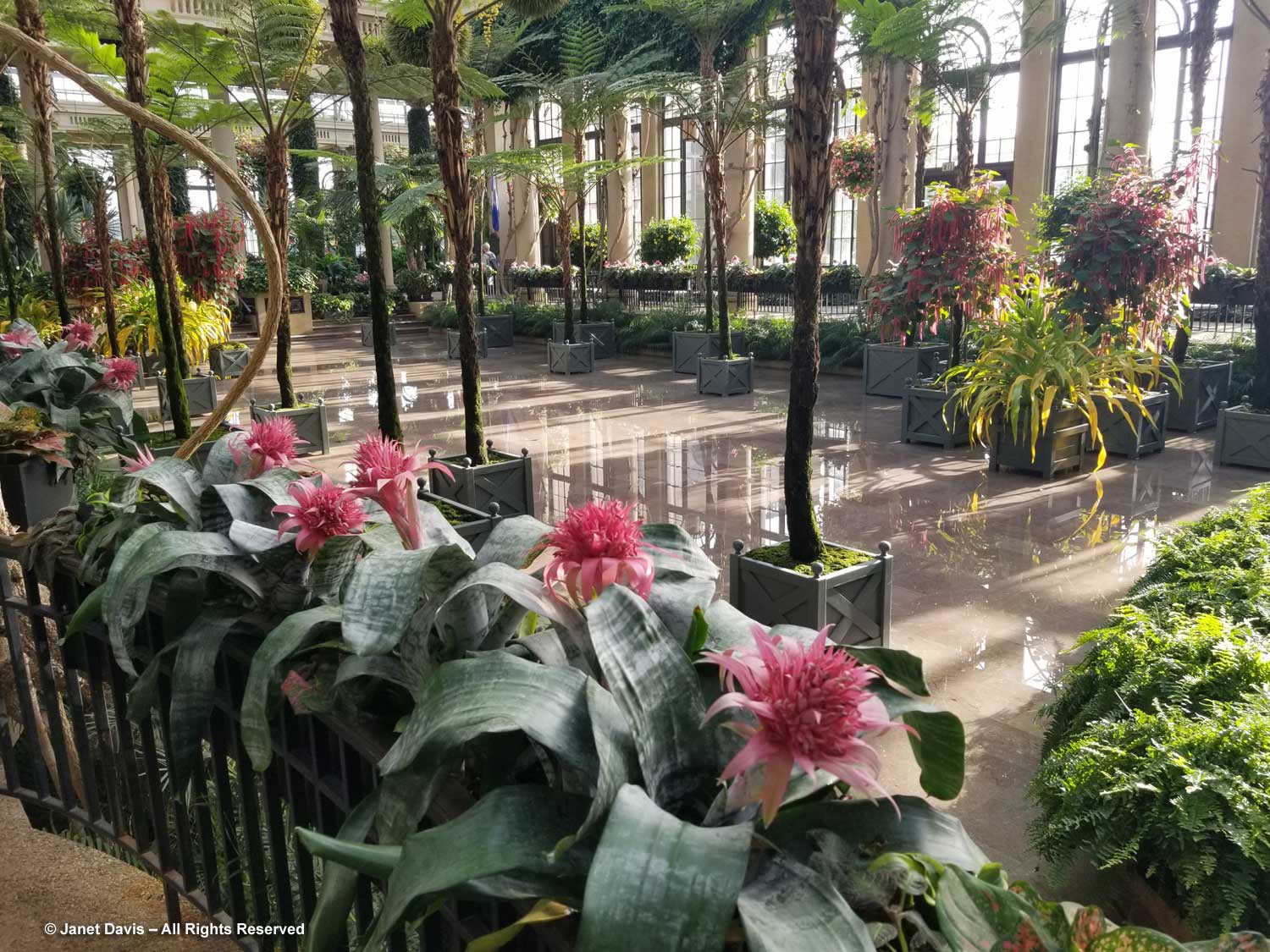
The Acacia Passage, below, is such a perfect setting, I had to wait for a professional photographer to finish a shoot with an engaged couple. The trees forming the lacy arch are cinnamon wattle (Acacia leprosa).
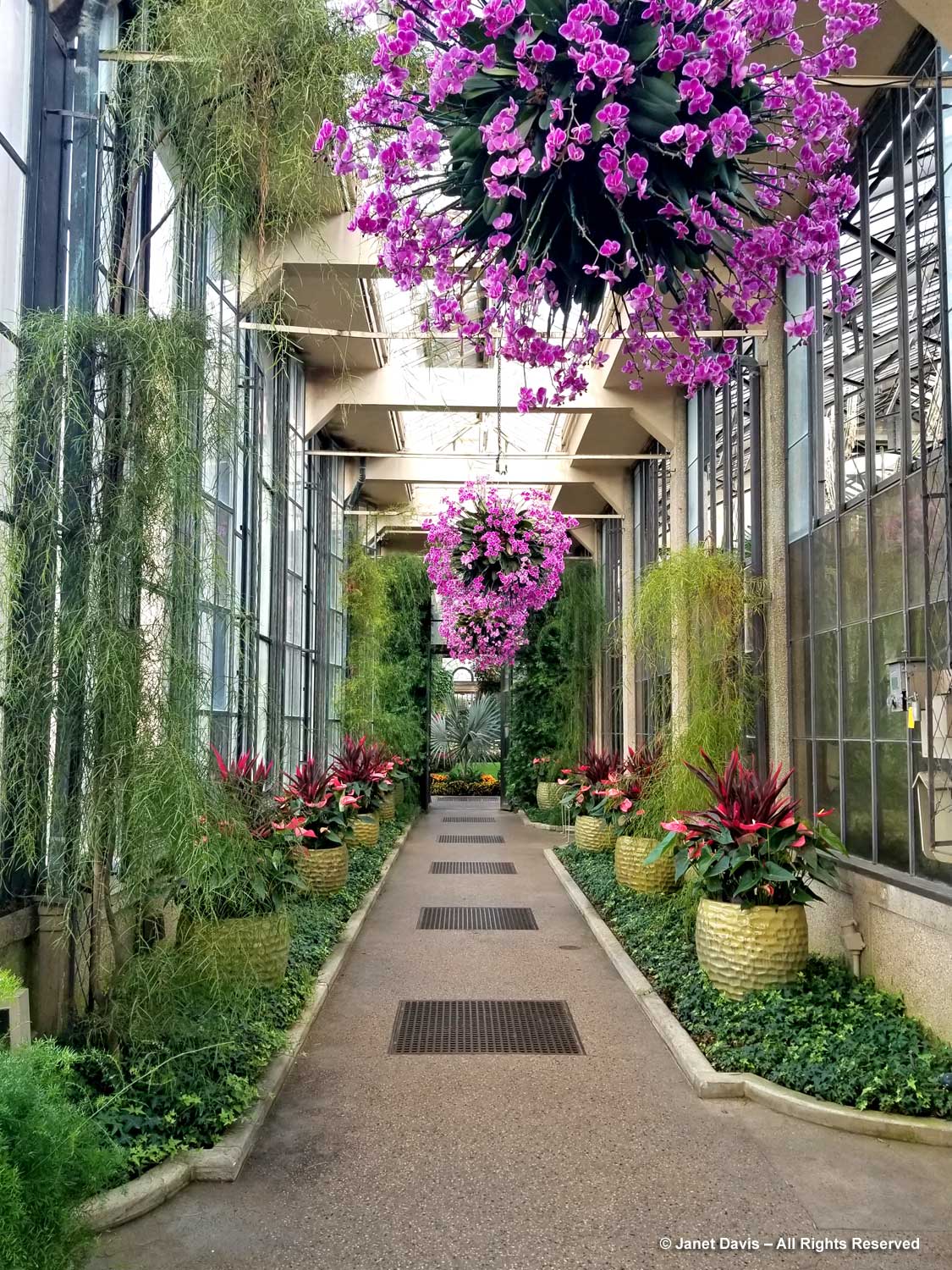
A vast expanse of emerald-green lawn stretches across a large hall in the Conservatory.
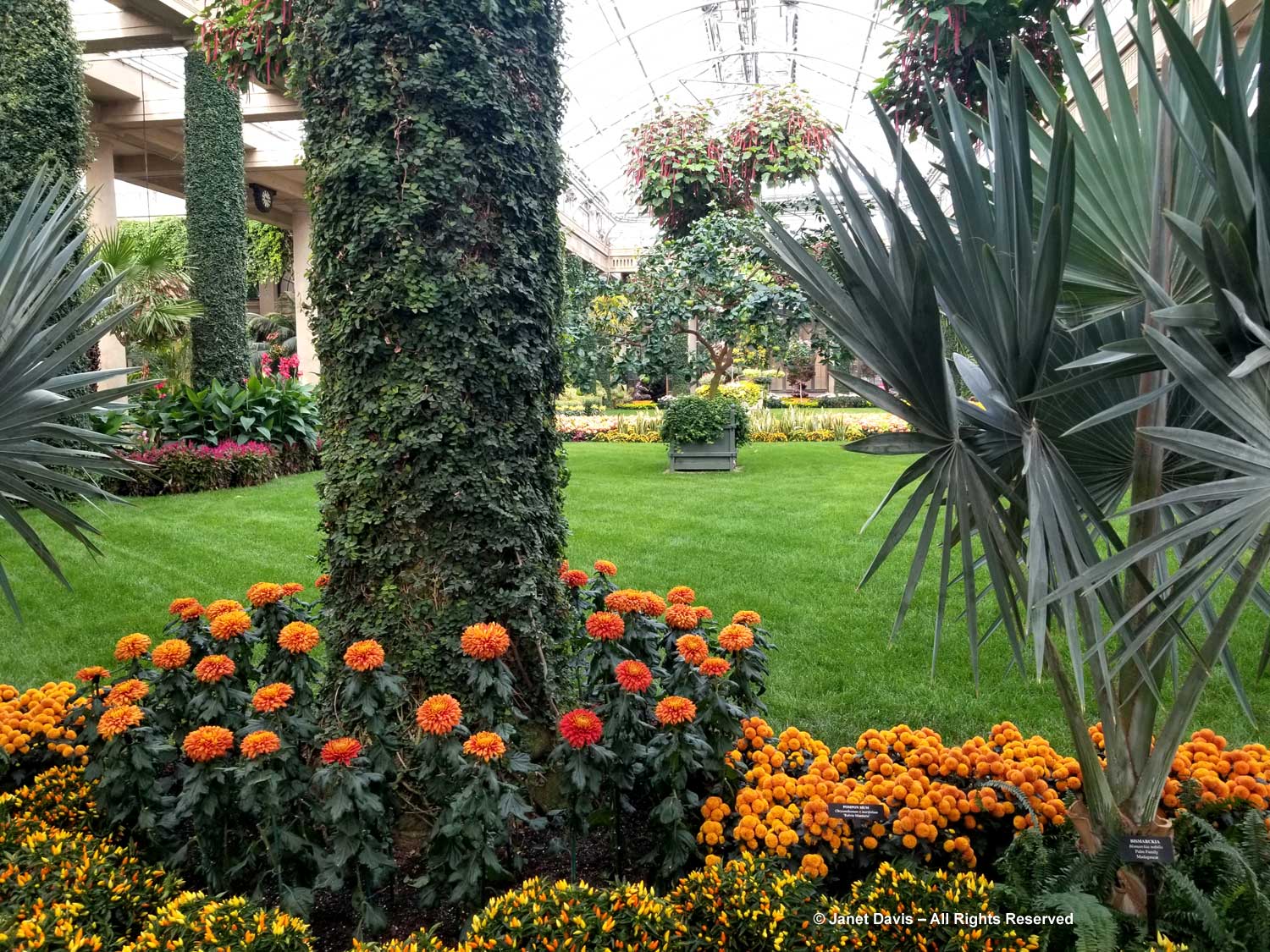
Early-blooming cultivars of chrysanthemum were celebrating the onset of autumn here.
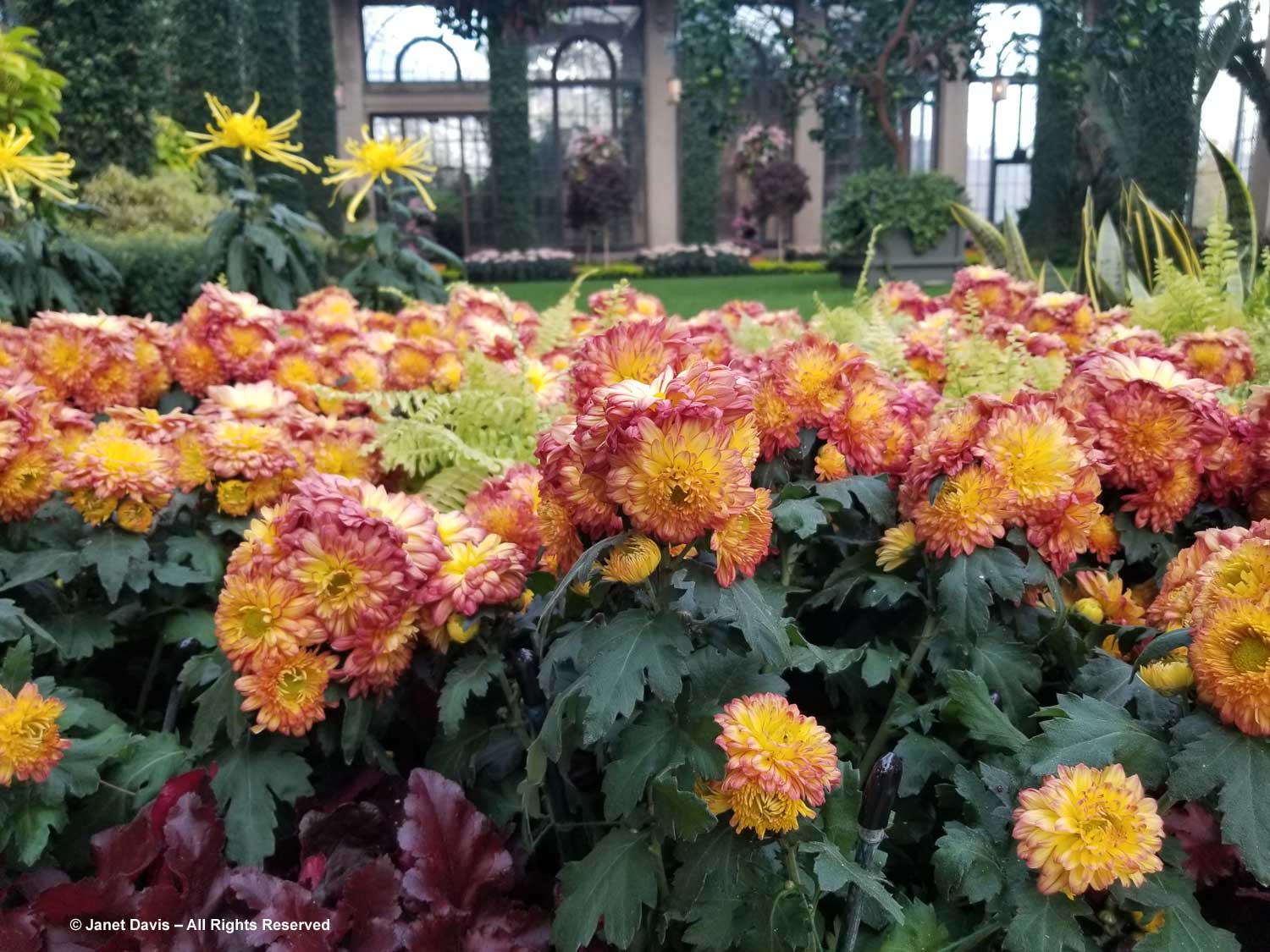
It’s always fun to find a handsome-looking bird-of-paradise (Strelitzia reginae) to photograph.
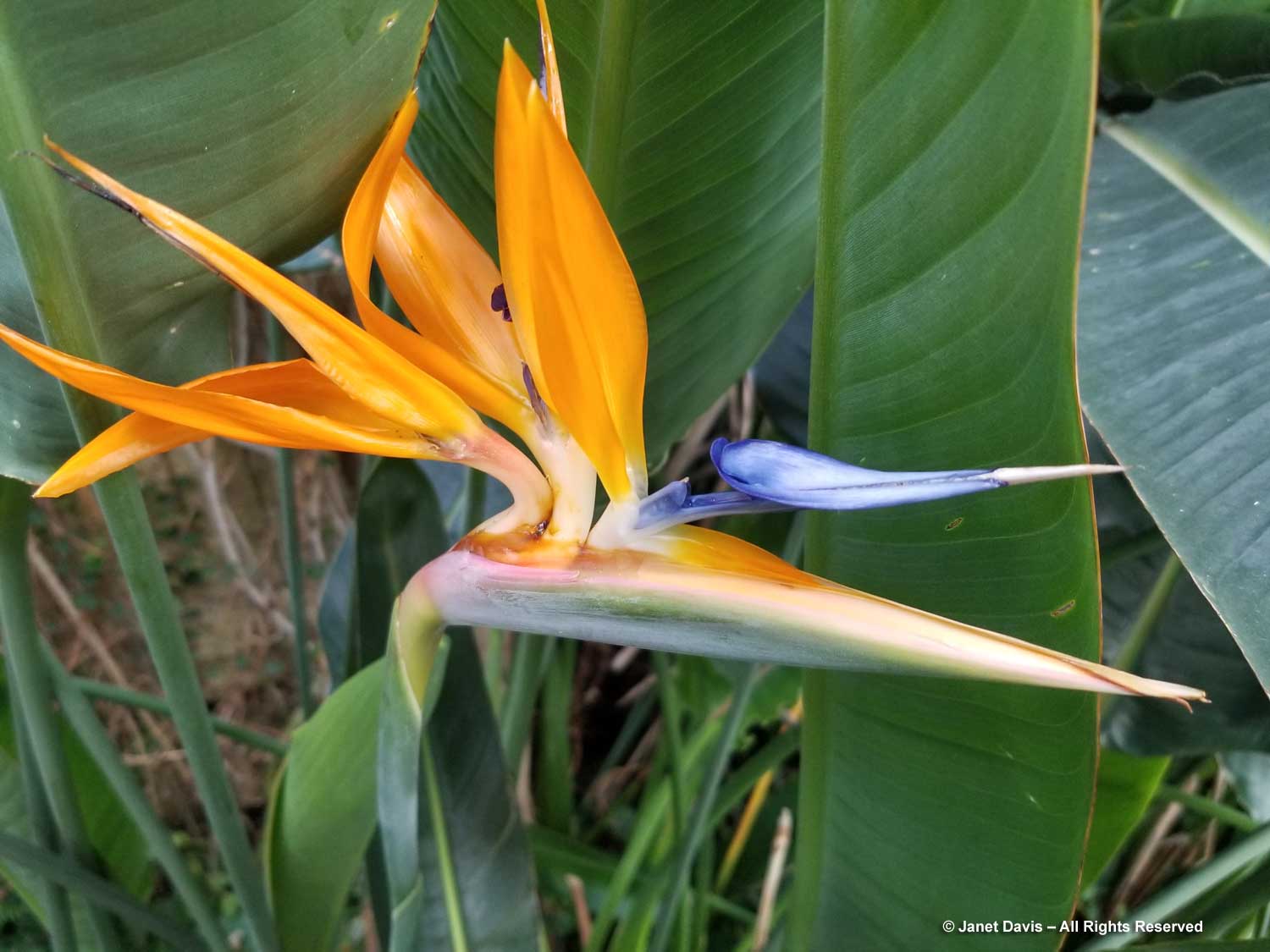
In the West Conservatory Complex, in what was originally a space to grow fruit trees and in the 1950s the Geographic Garden, California landscape architect Isabelle Greene created the Silver Garden in 1987, featuring plants from Mediterranean and desert climates. Its sinuous, curving lines were a departure from the formal, geometric style of the rest of the conservatory.
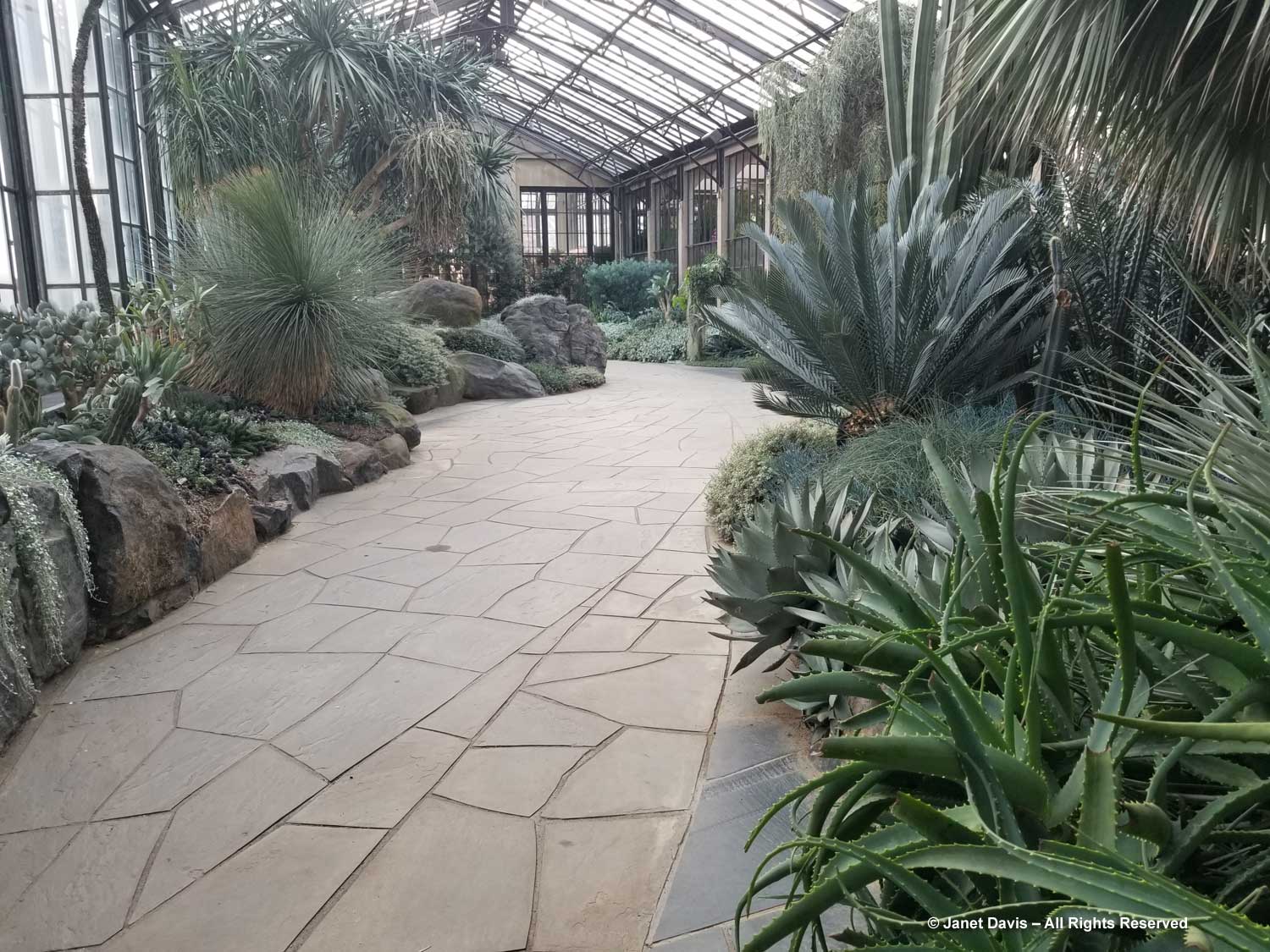
How soft and restful this garden is, and how evocative of a natural landscape.
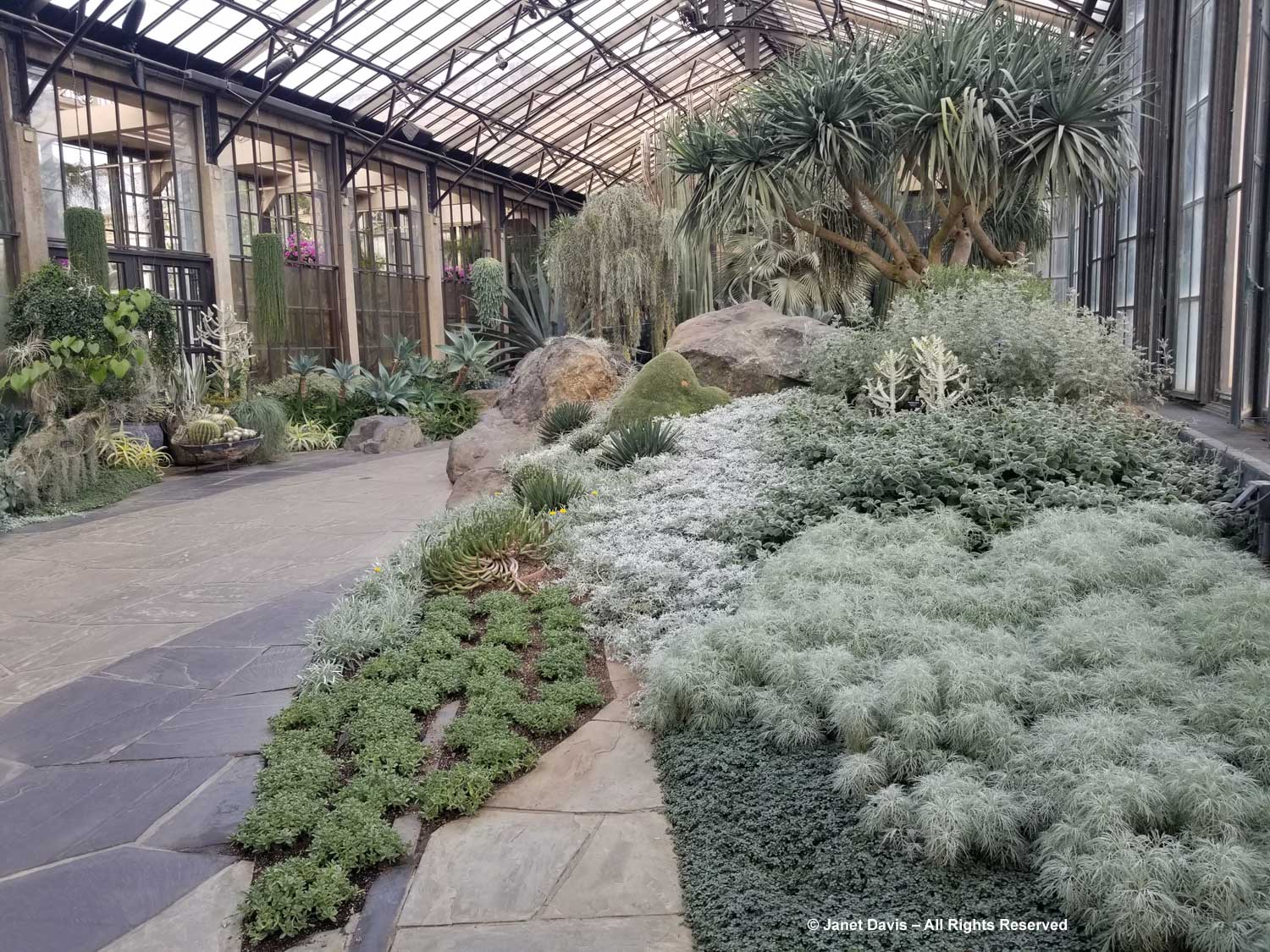
Several Agave victoriae-reginae, the Queen Victoria agave, punctuate a silvery carpet.
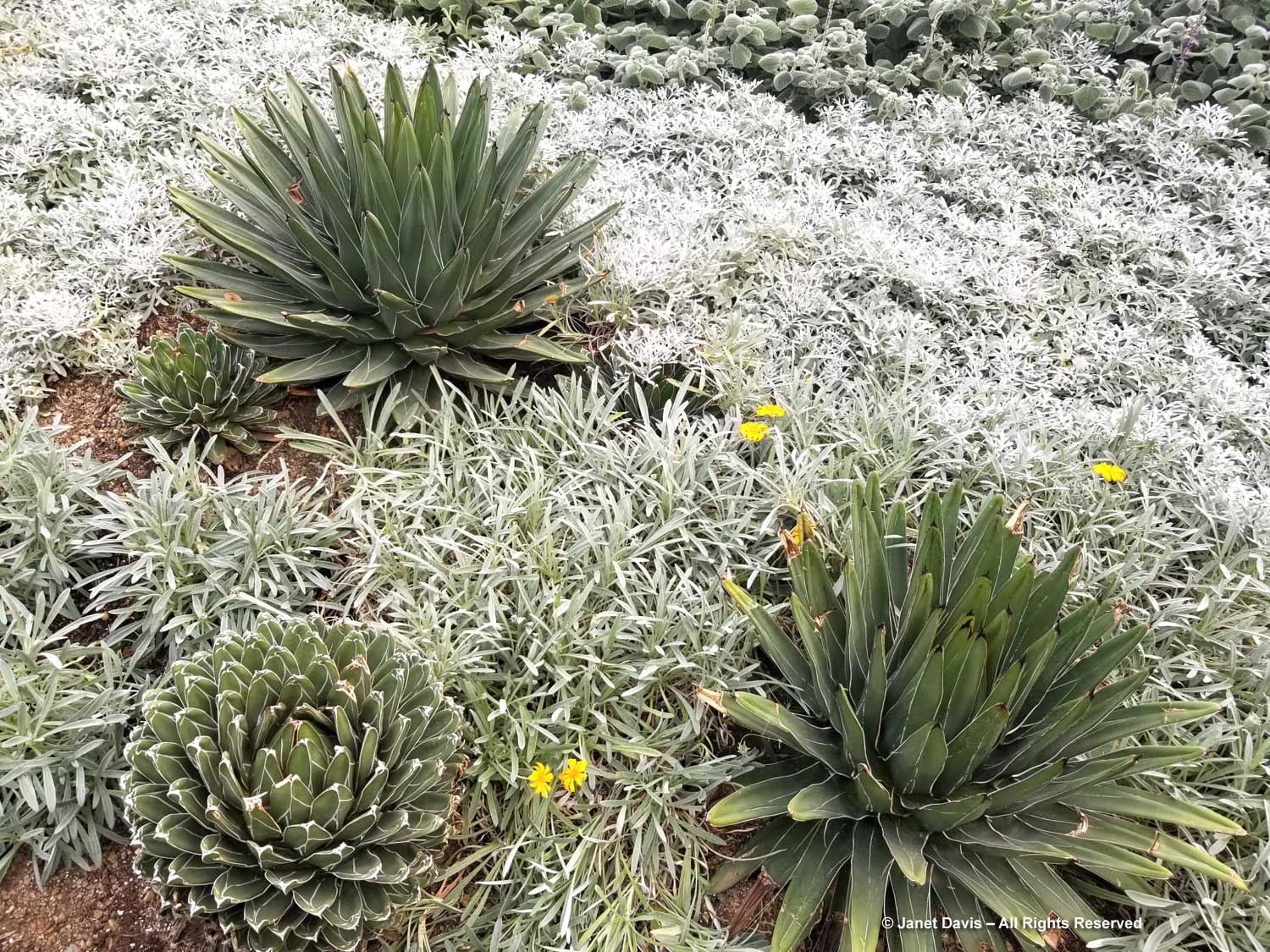
Of all the agaves, Agave parryi is my favourite photo subject.
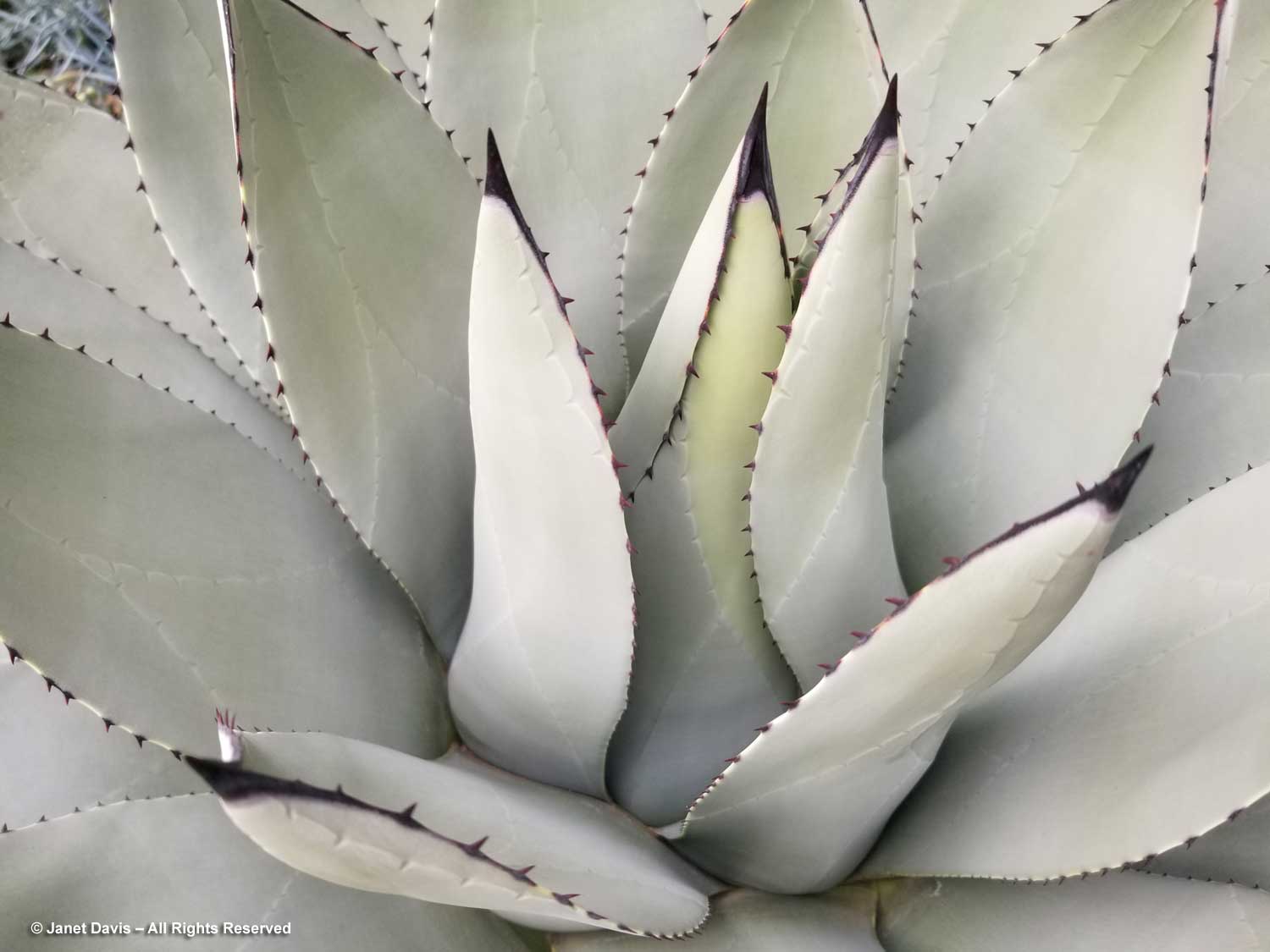
Karl said that this is not the best time of year for orchids, but the Orchid House was resplendent nonetheless.
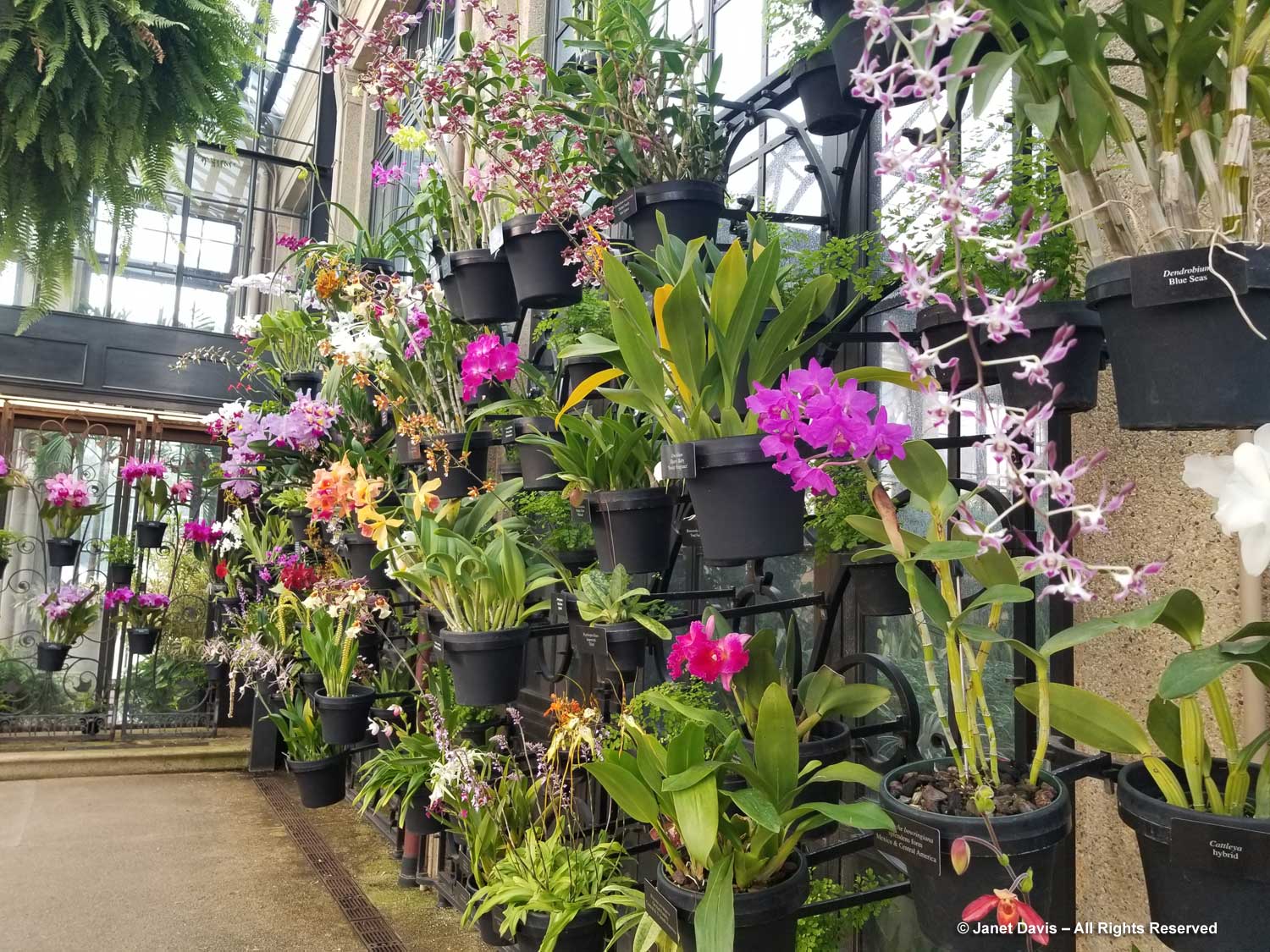
Laeliocattleya Roitelet-‘Paradis’ is a 1949 introduction from the French orchid nursery Vacherot and Lecoufle. Isn’t she stunning?
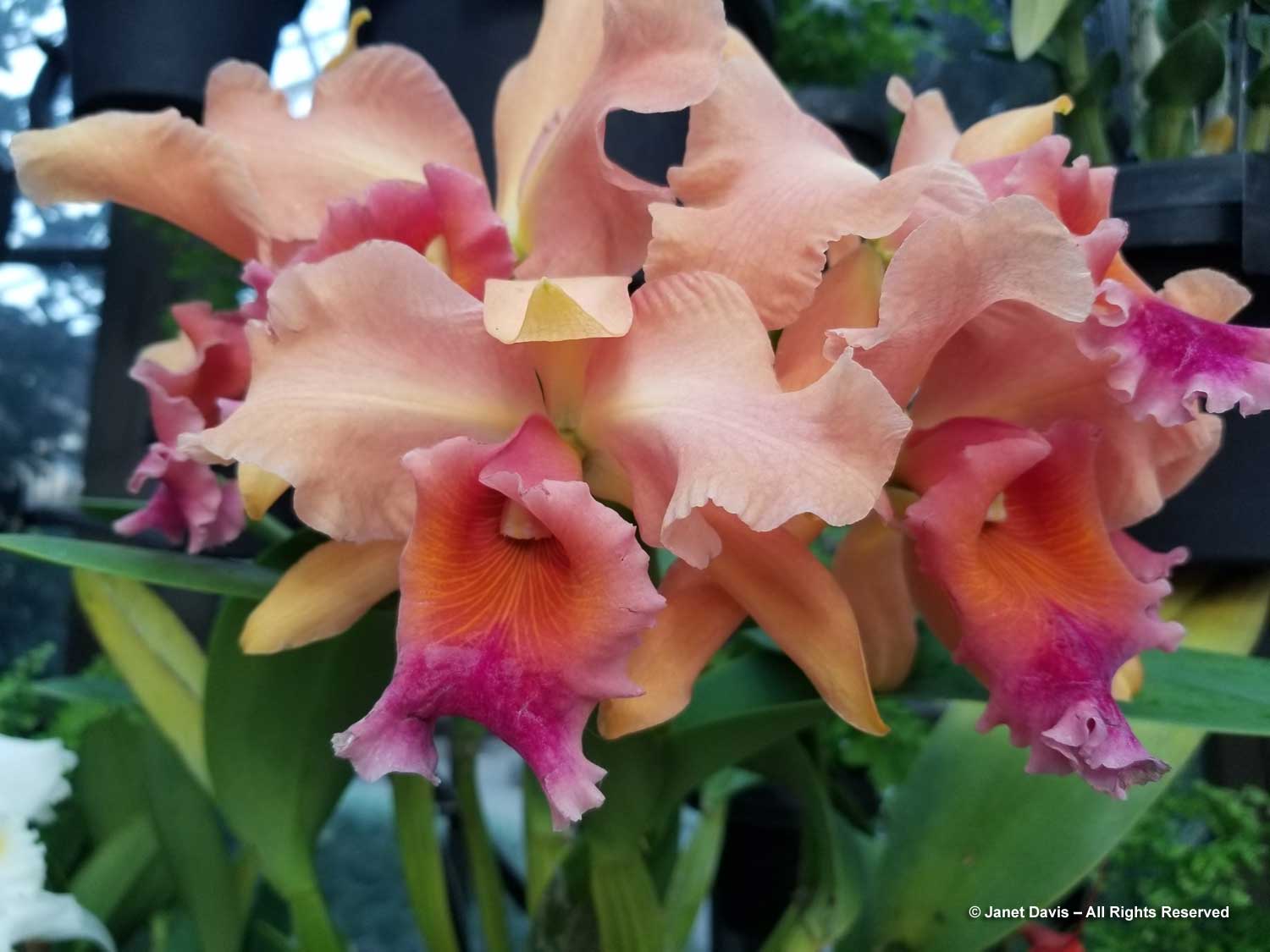
Gombrassiltonia Mervyn Grant ‘Talisman Cove’ is a three-way cross between Gomesa x Brassia x Miltonia. Orchid hybrid names are a world unto themselves!
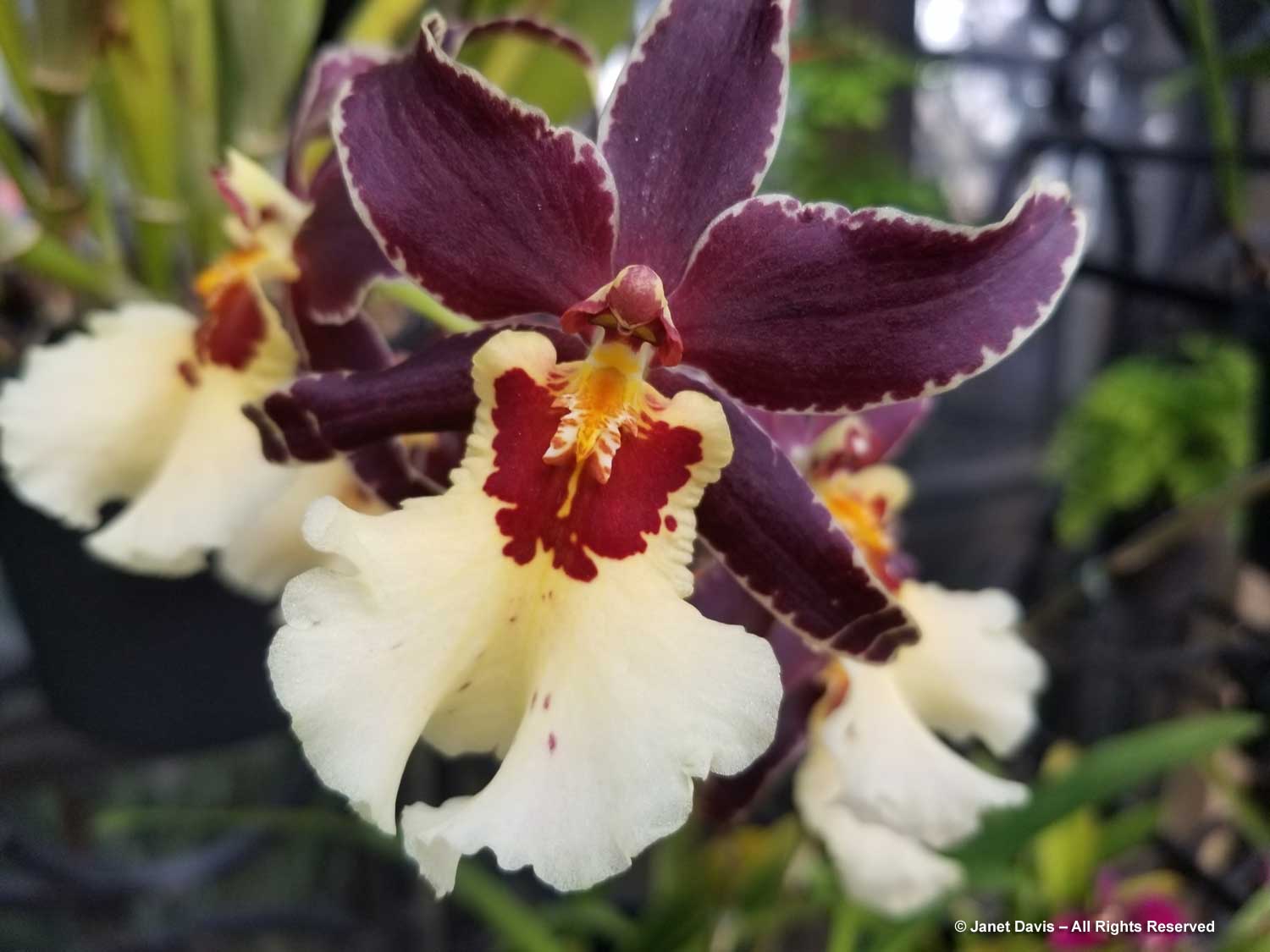
Our Longwood visit culminated with a spectacular Illuminated Fountain show.
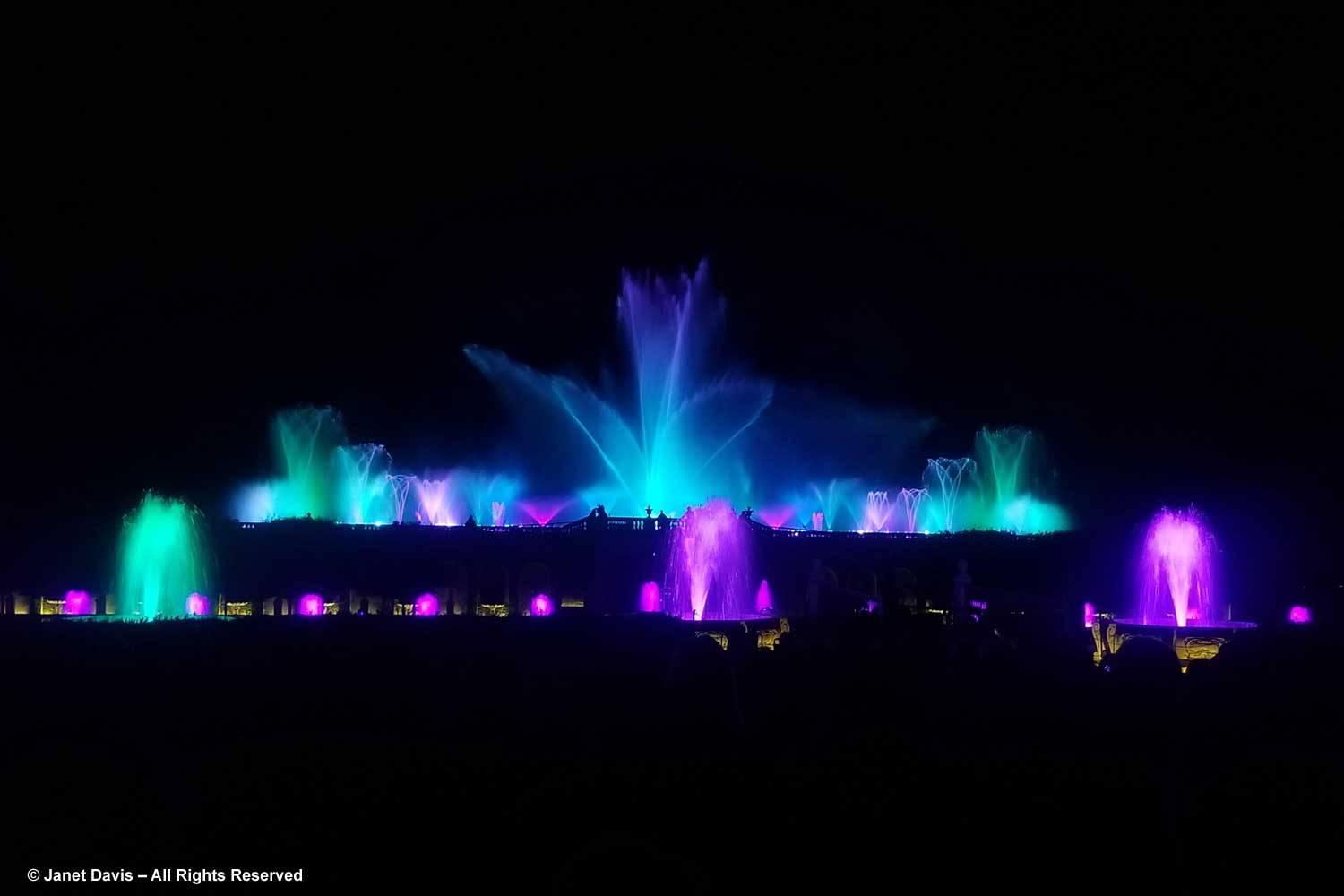
Because it is very special to watch the fountains dance – as indeed it is very special to visit Longwood itself – I will leave you with this taste of the music of Prokofiev’s ‘Romeo and Juliet’ from my YouTube channel.

